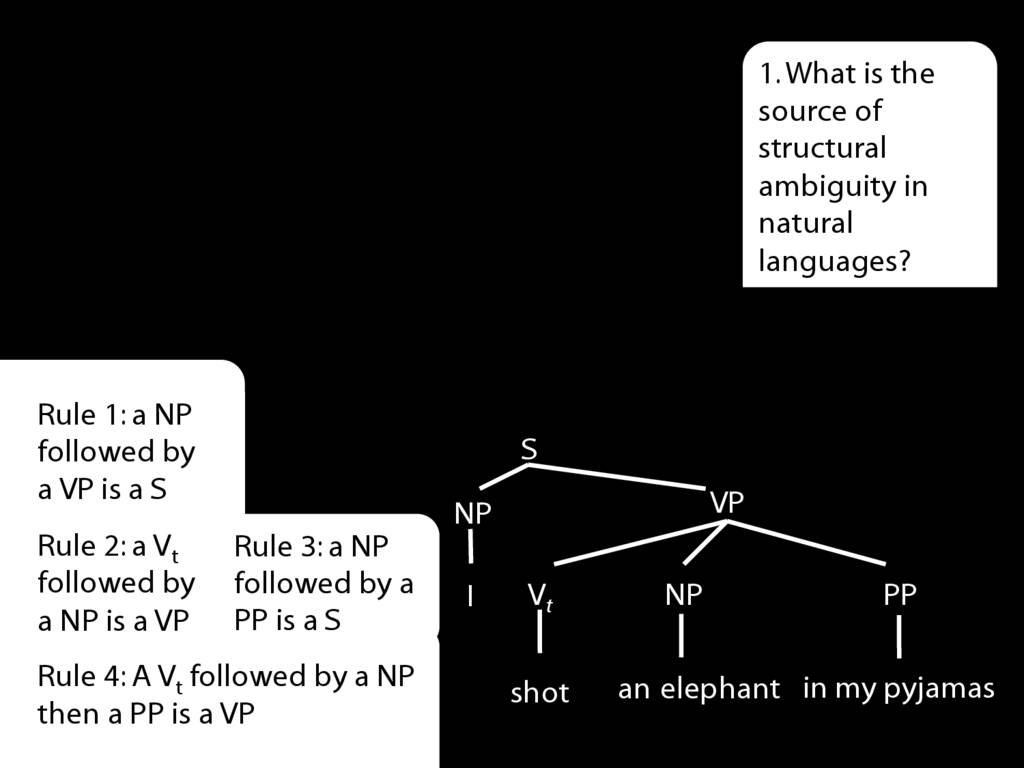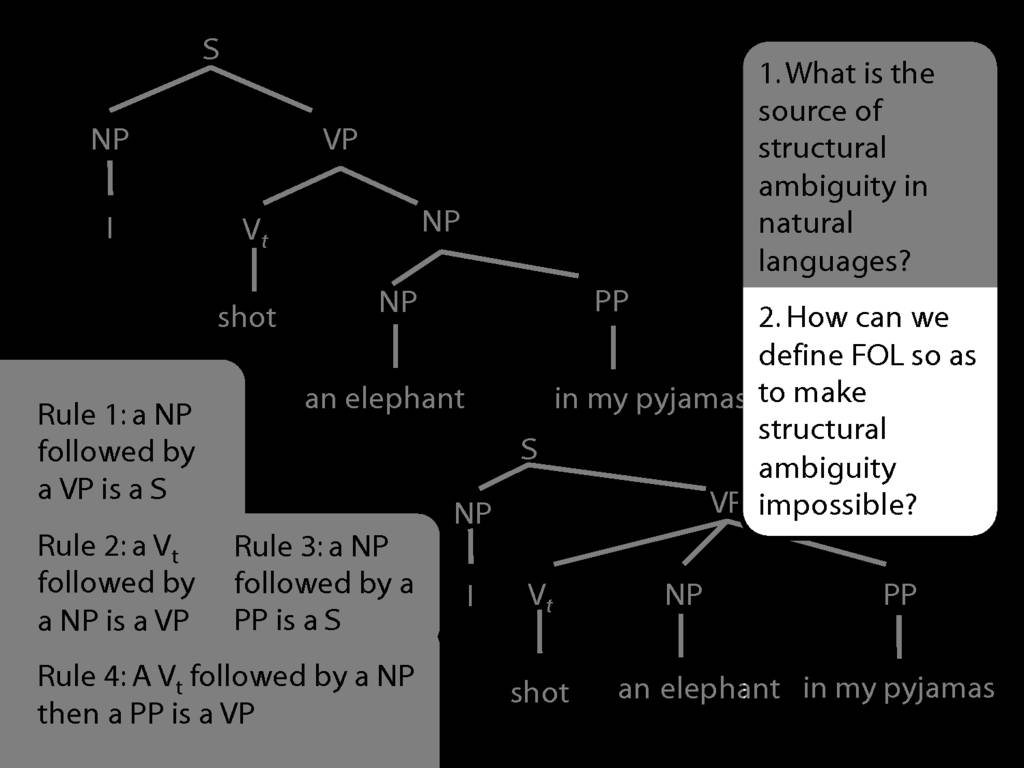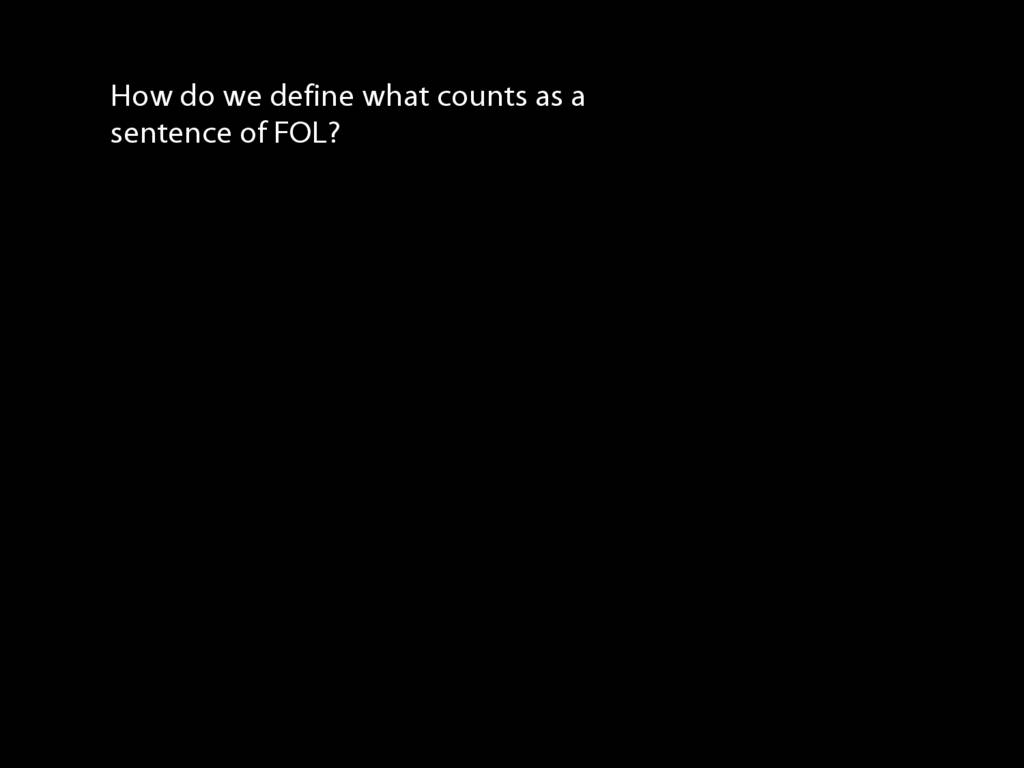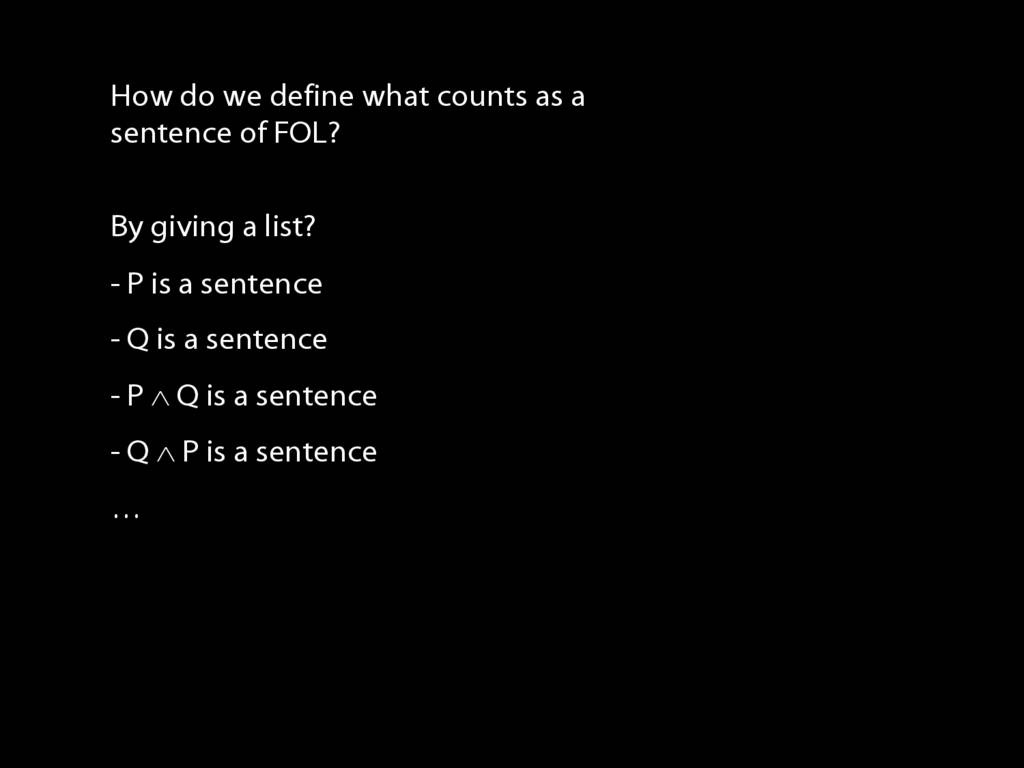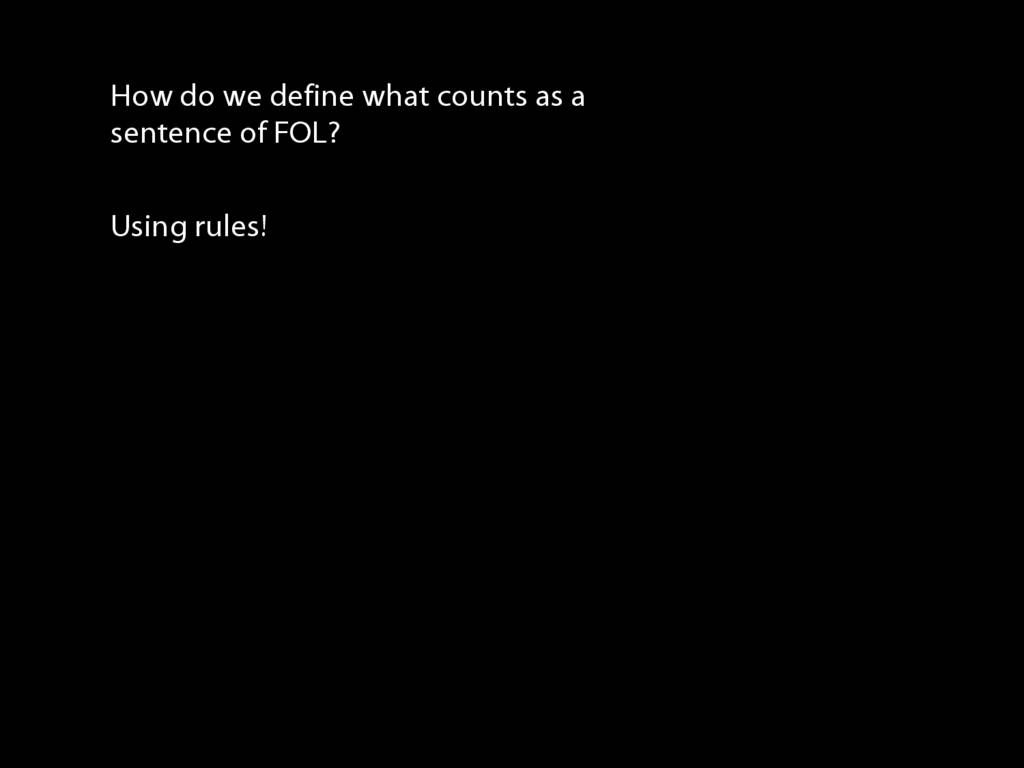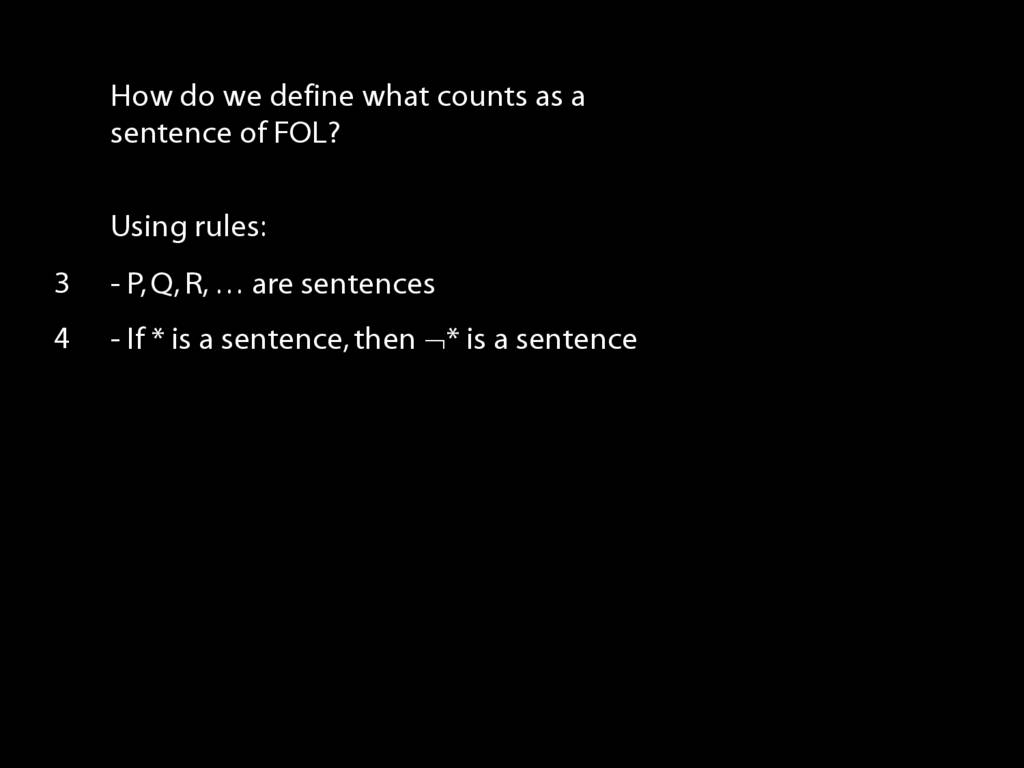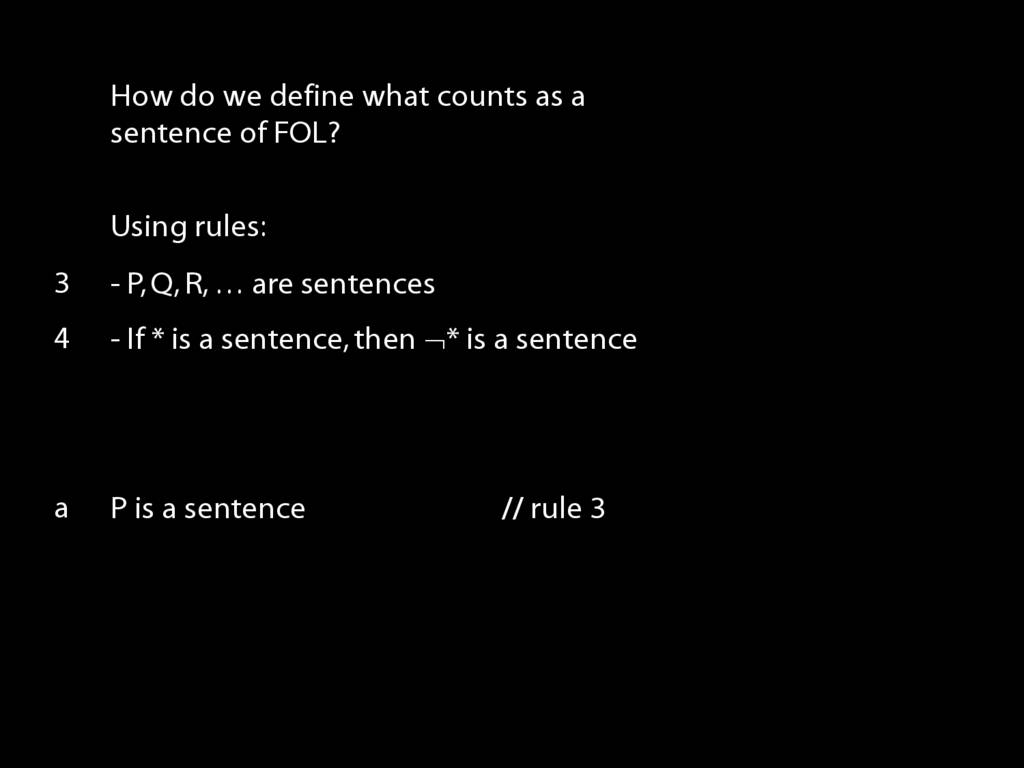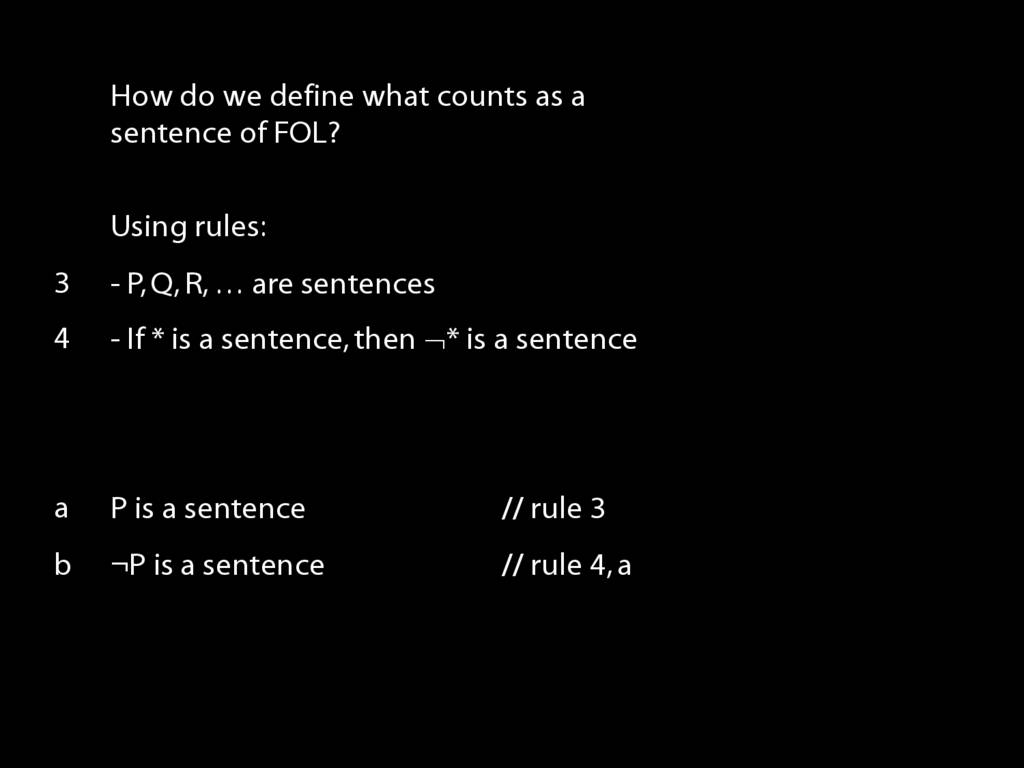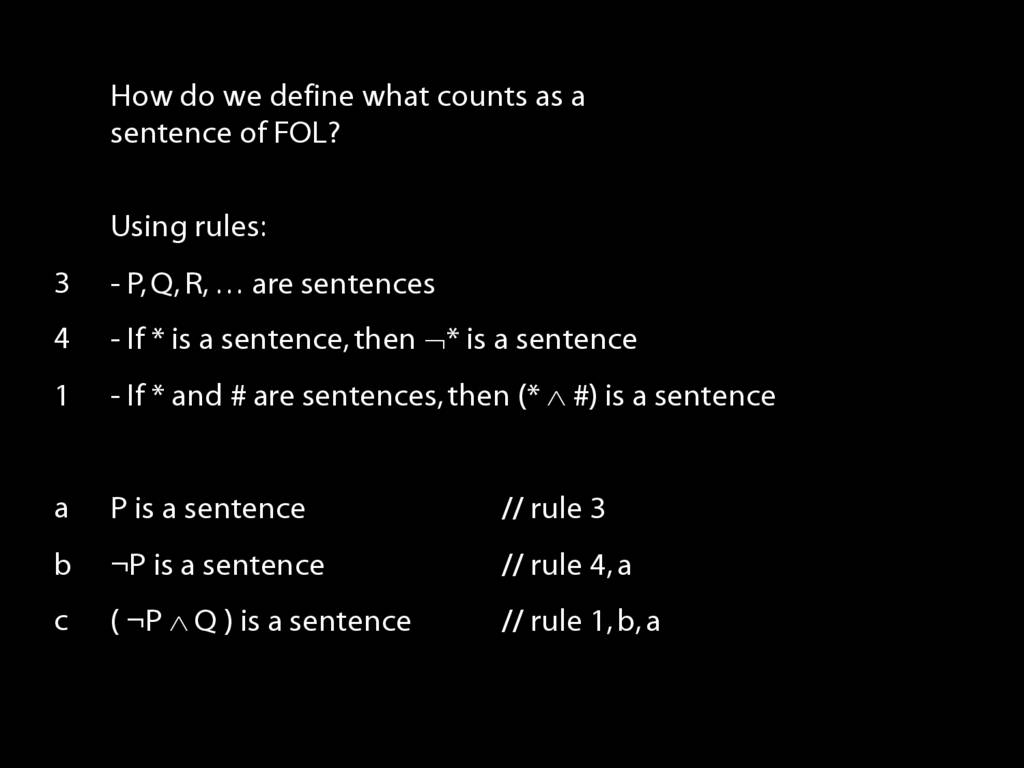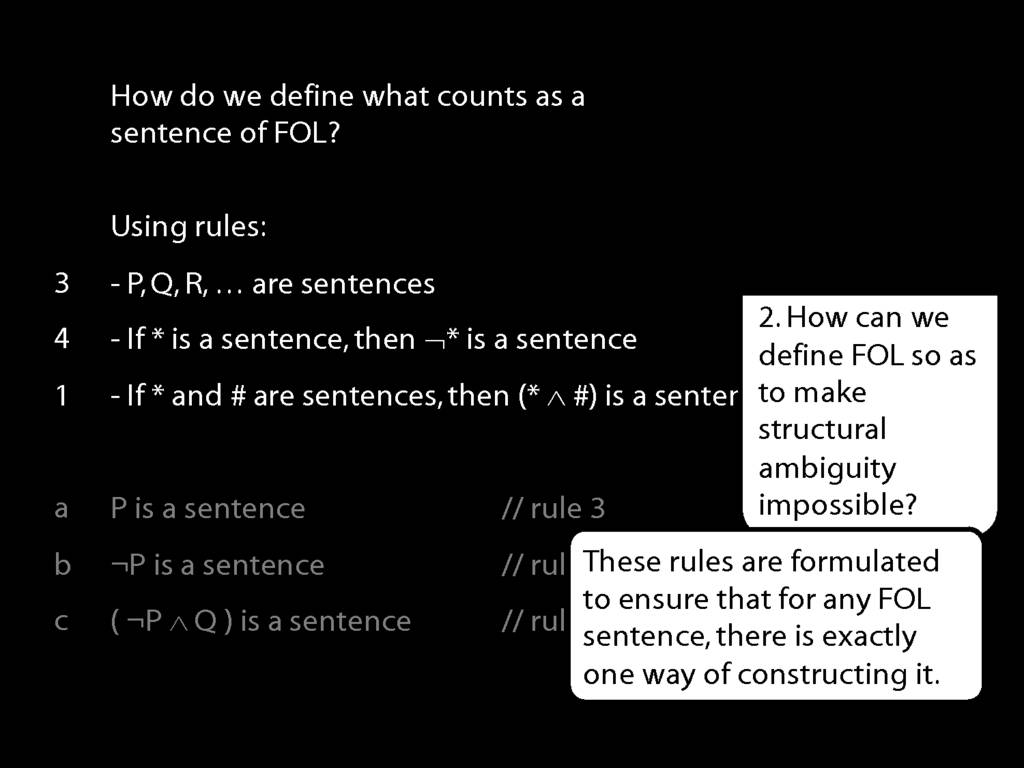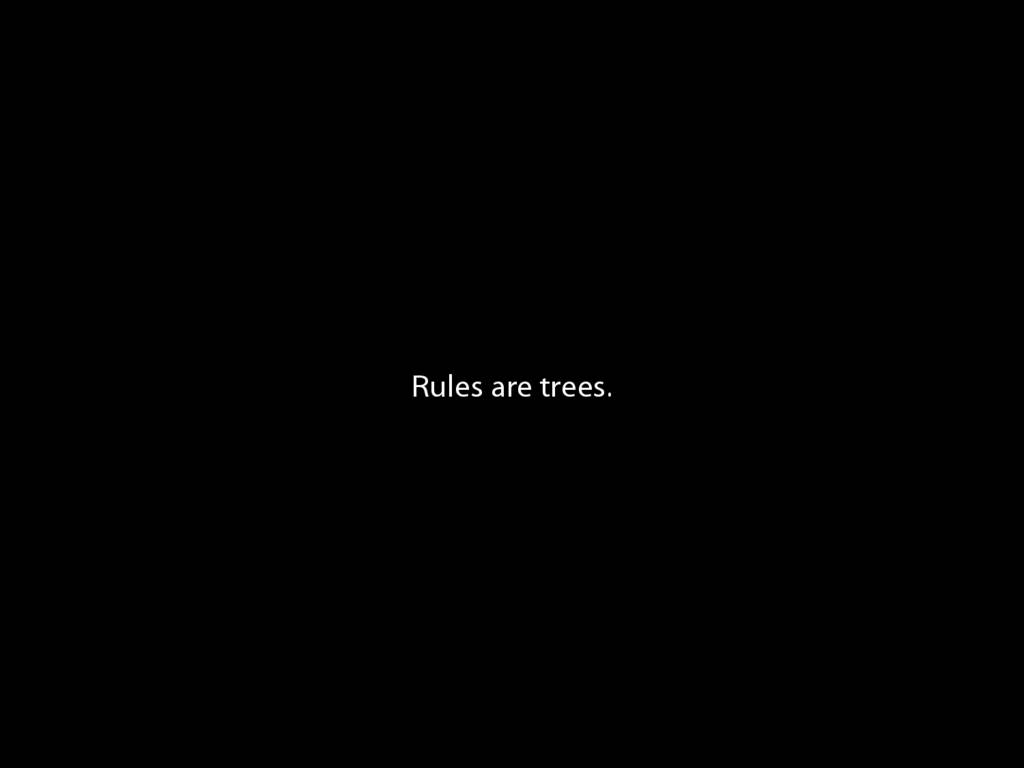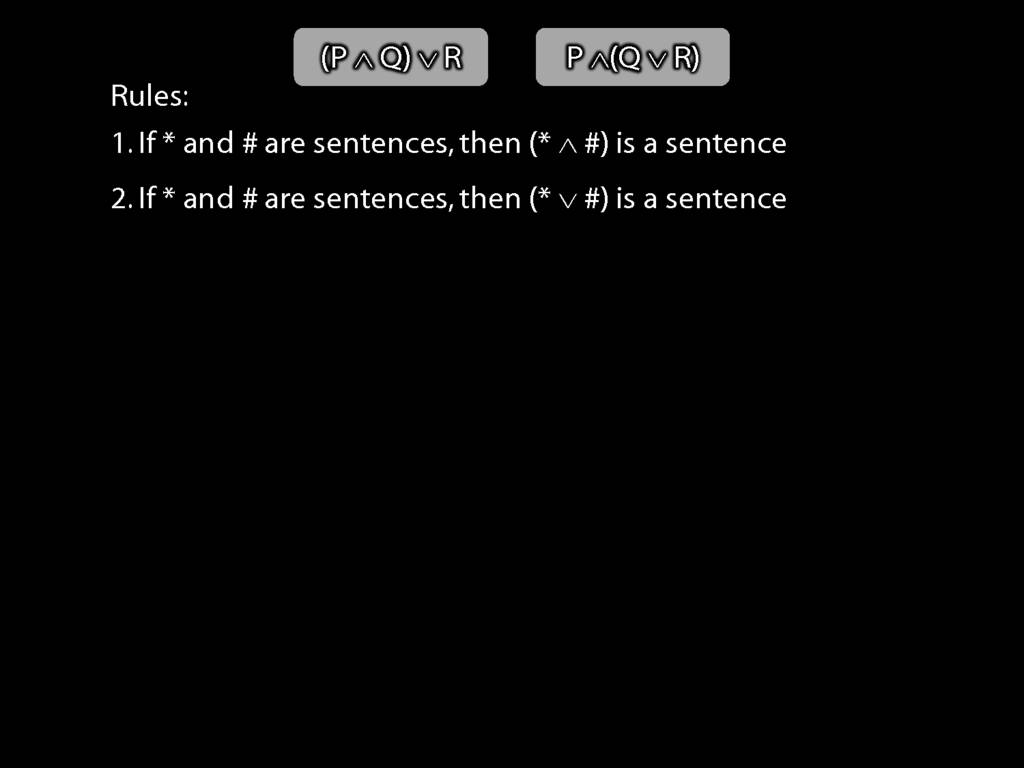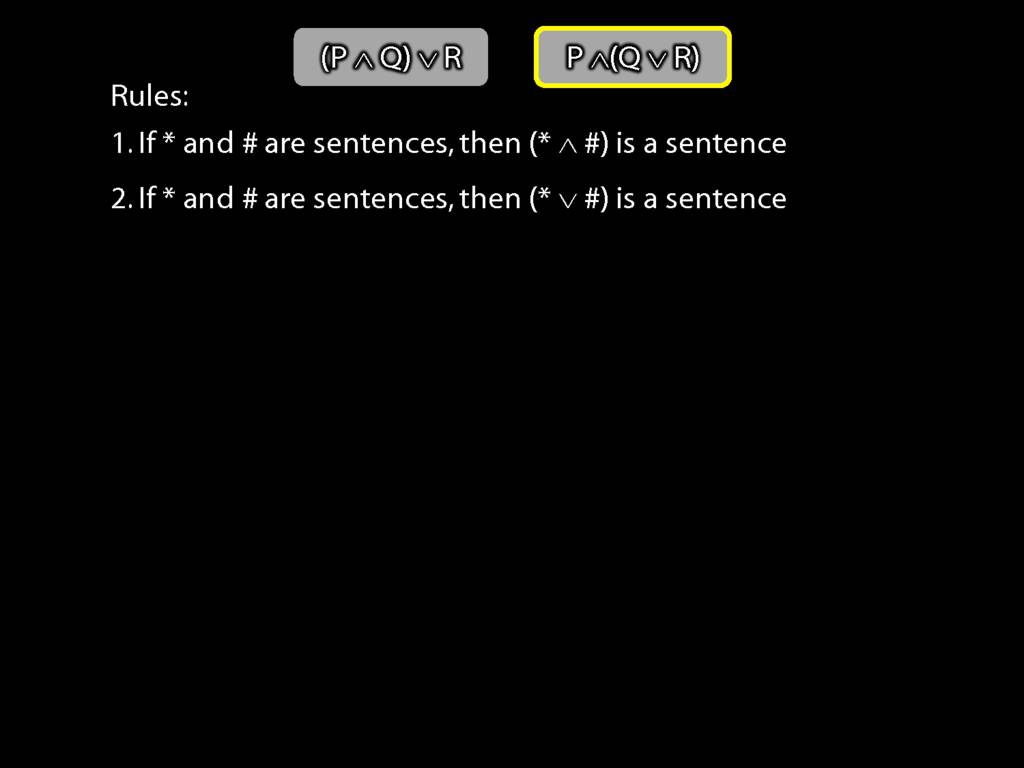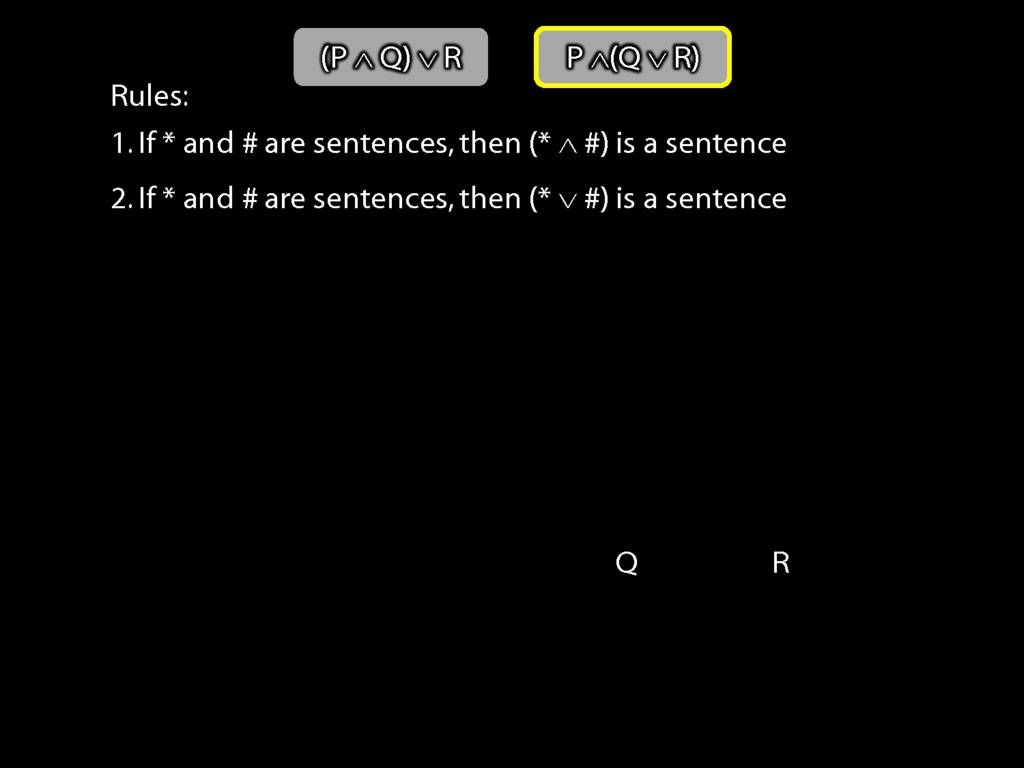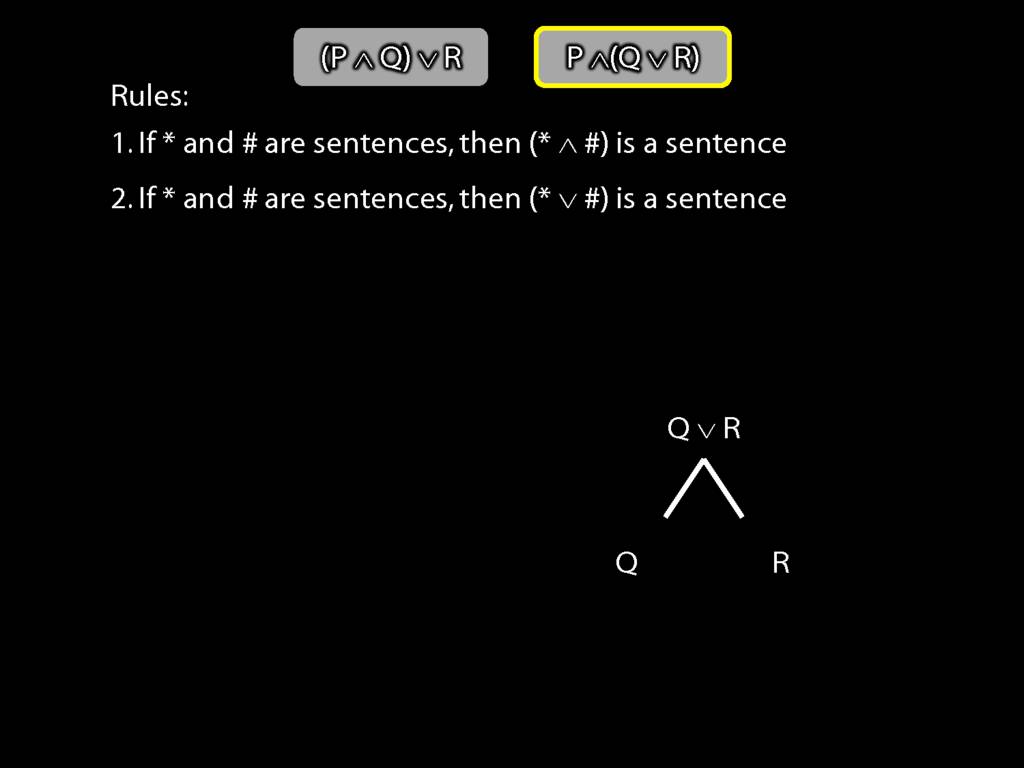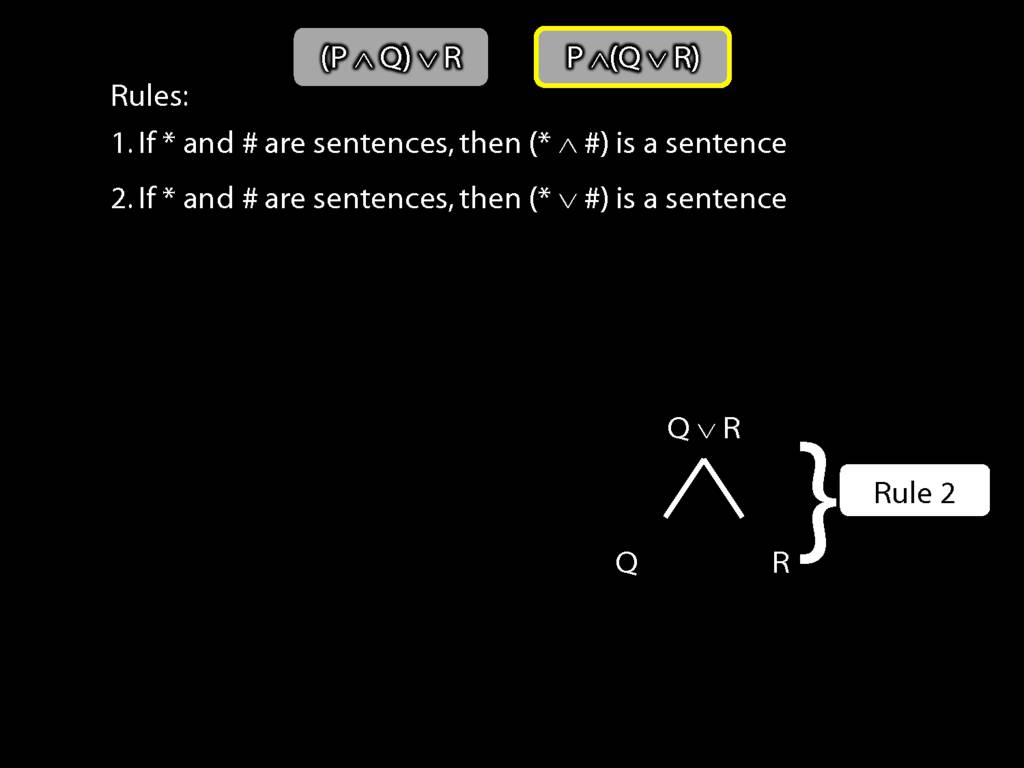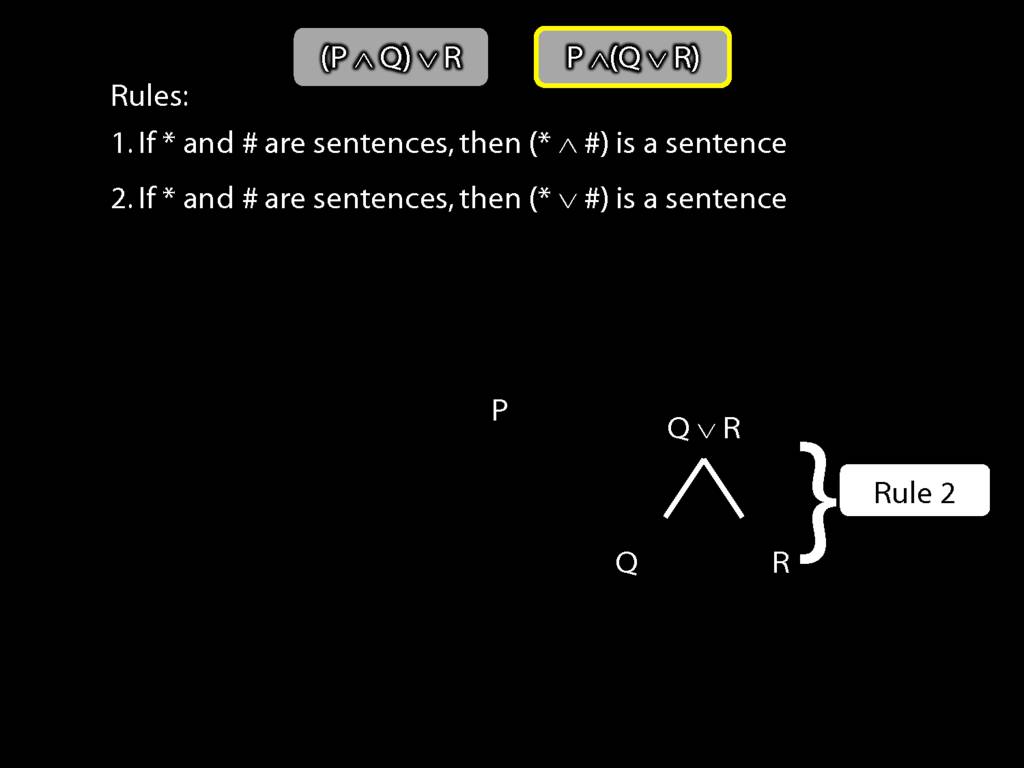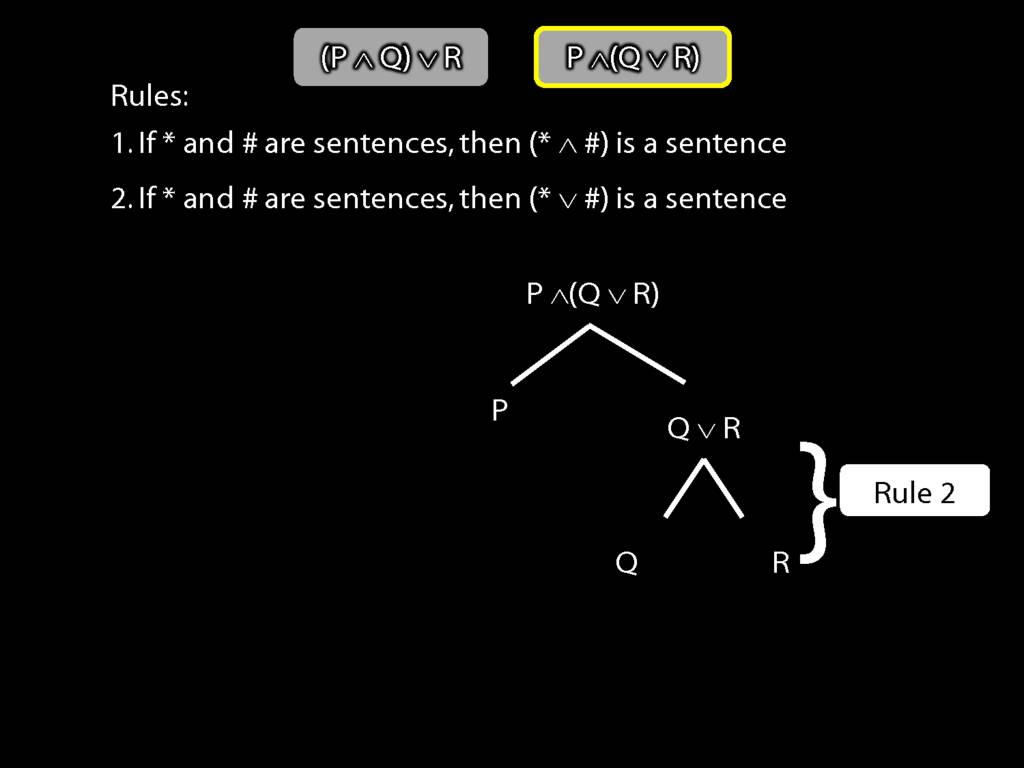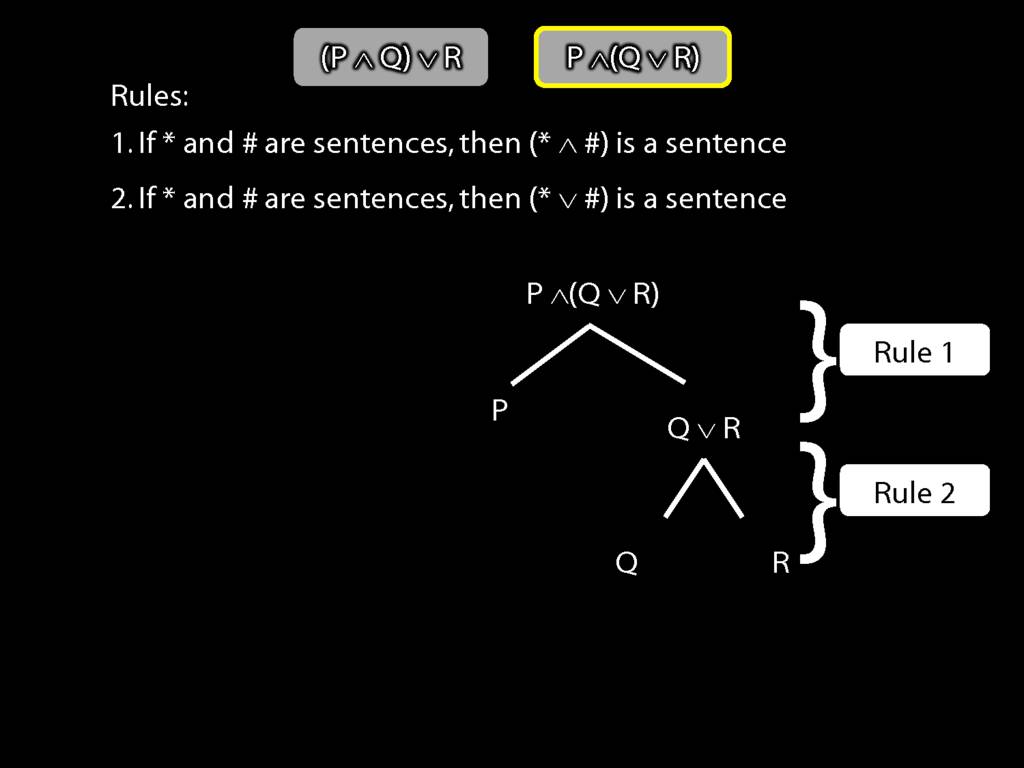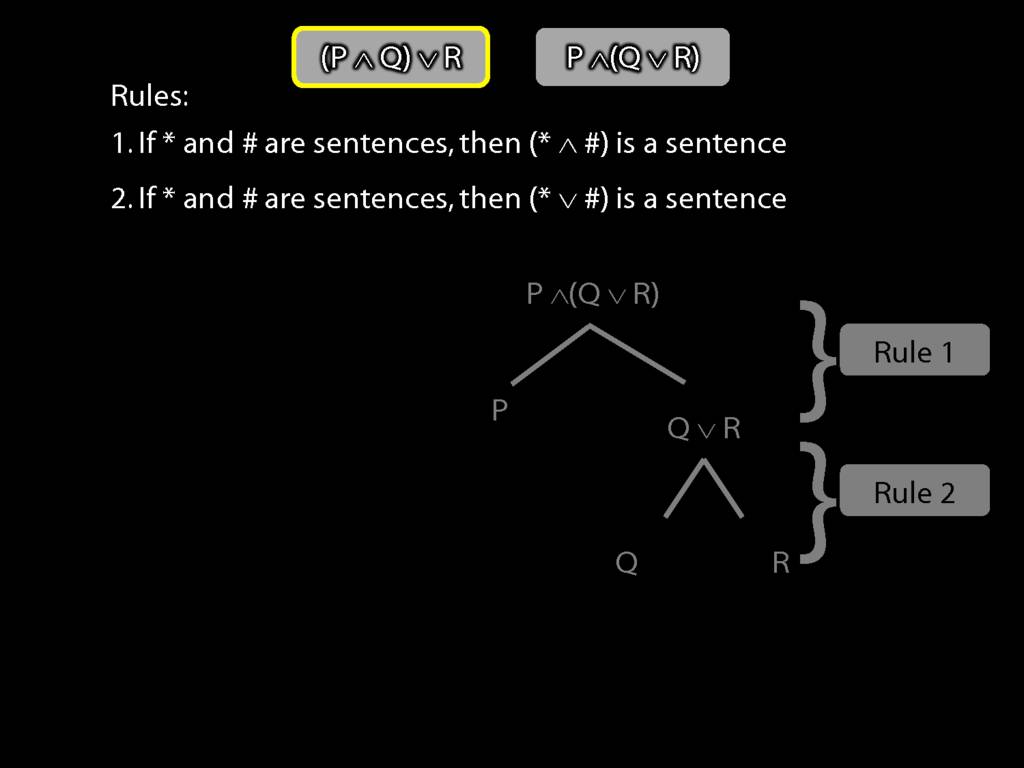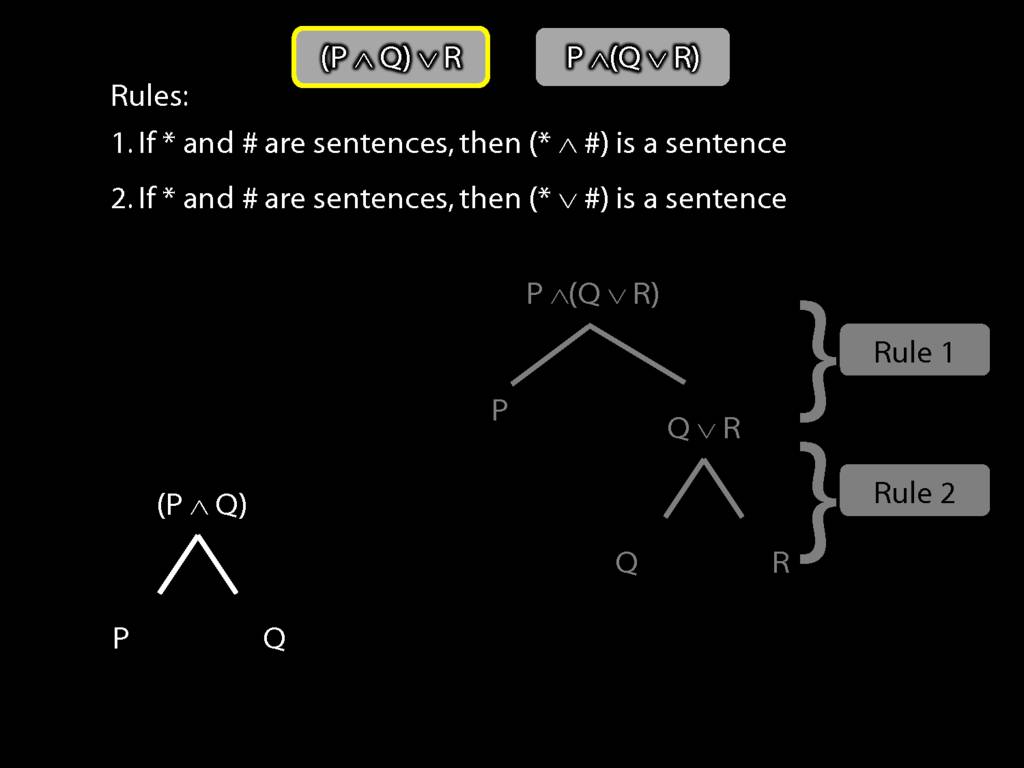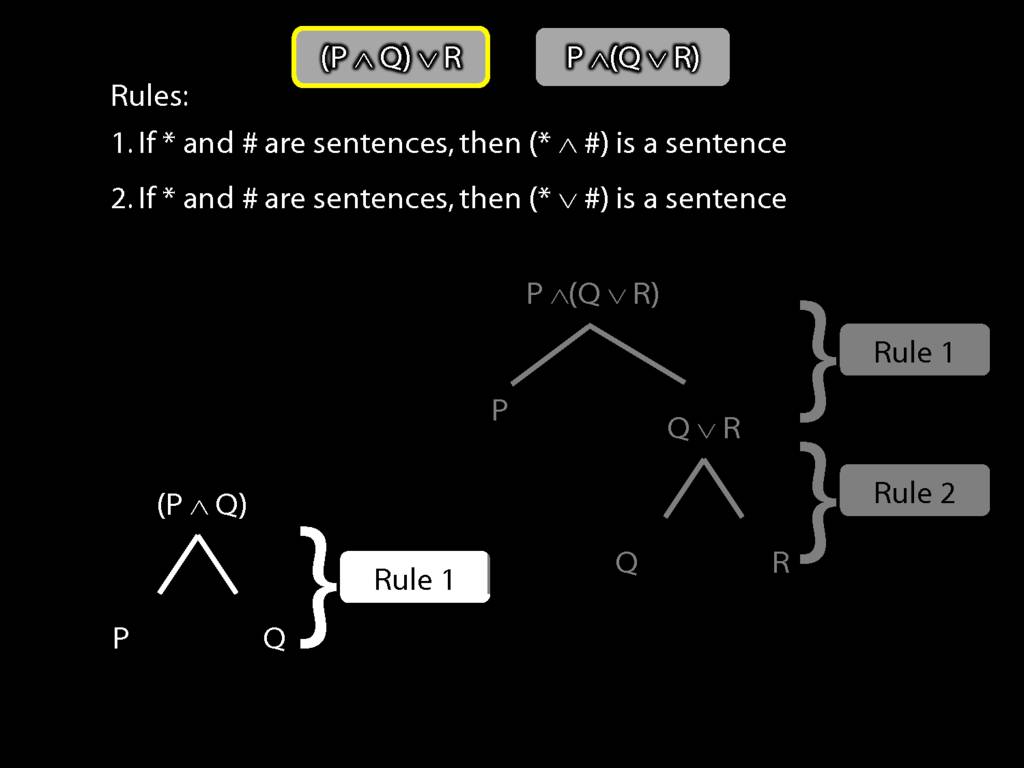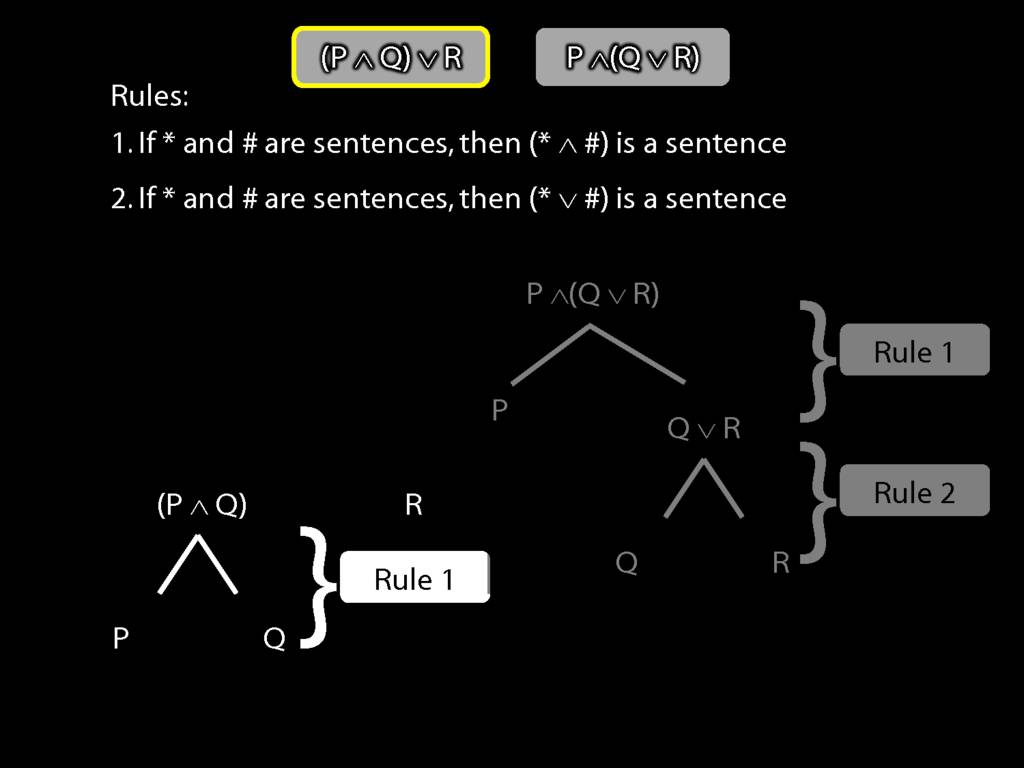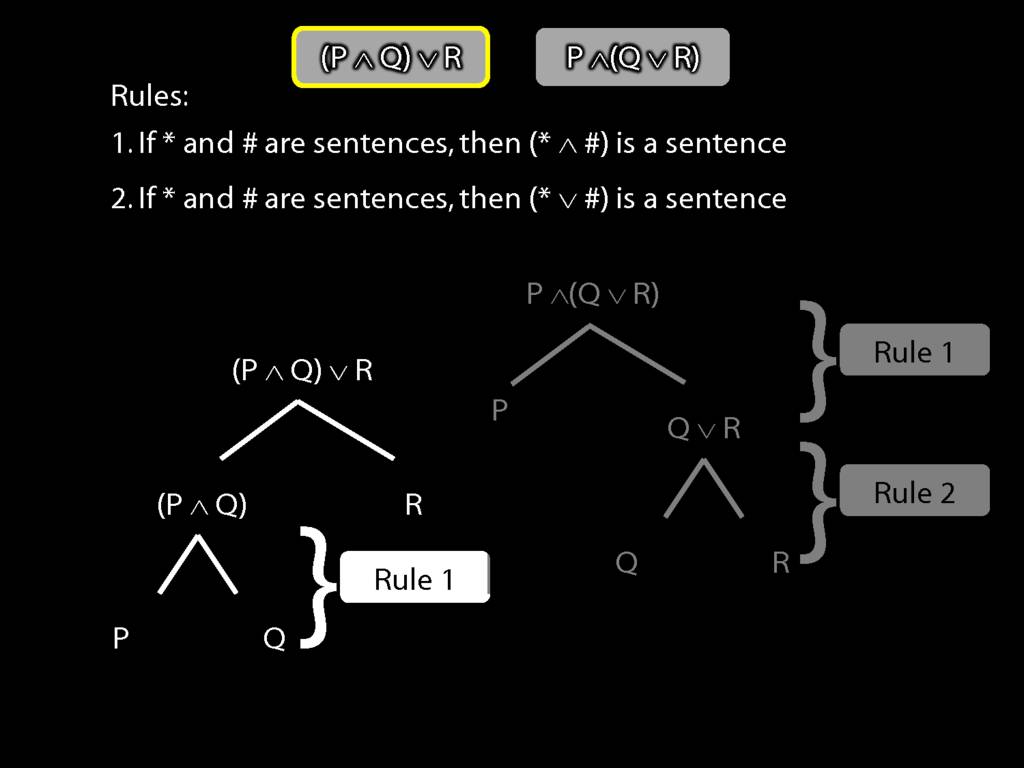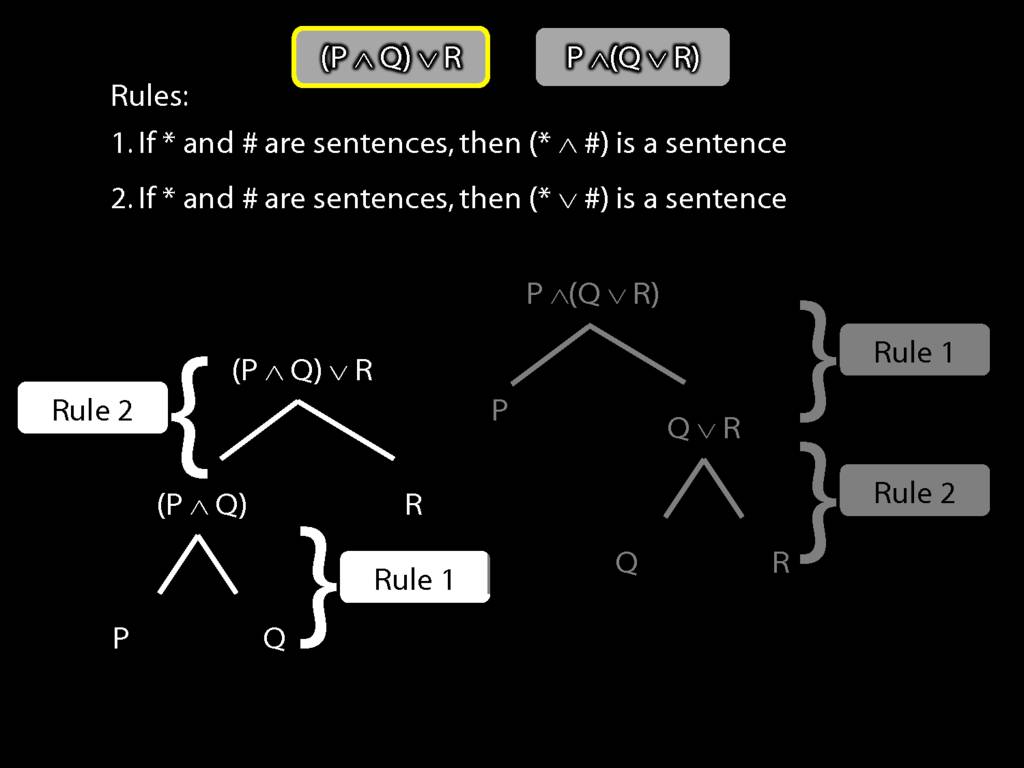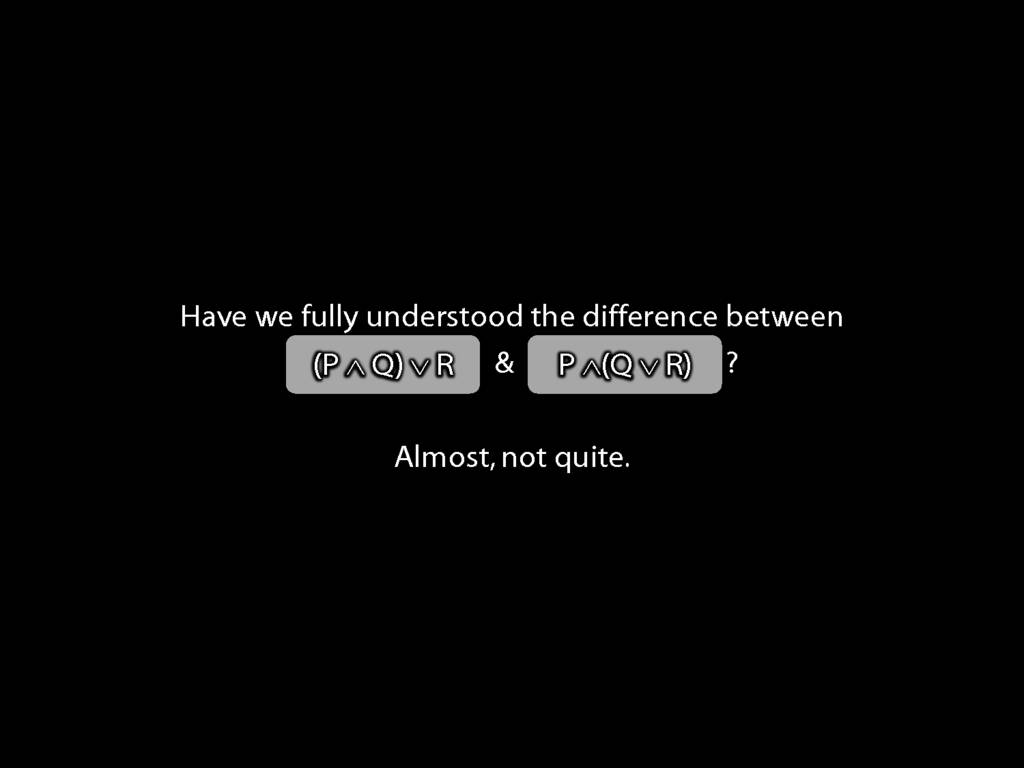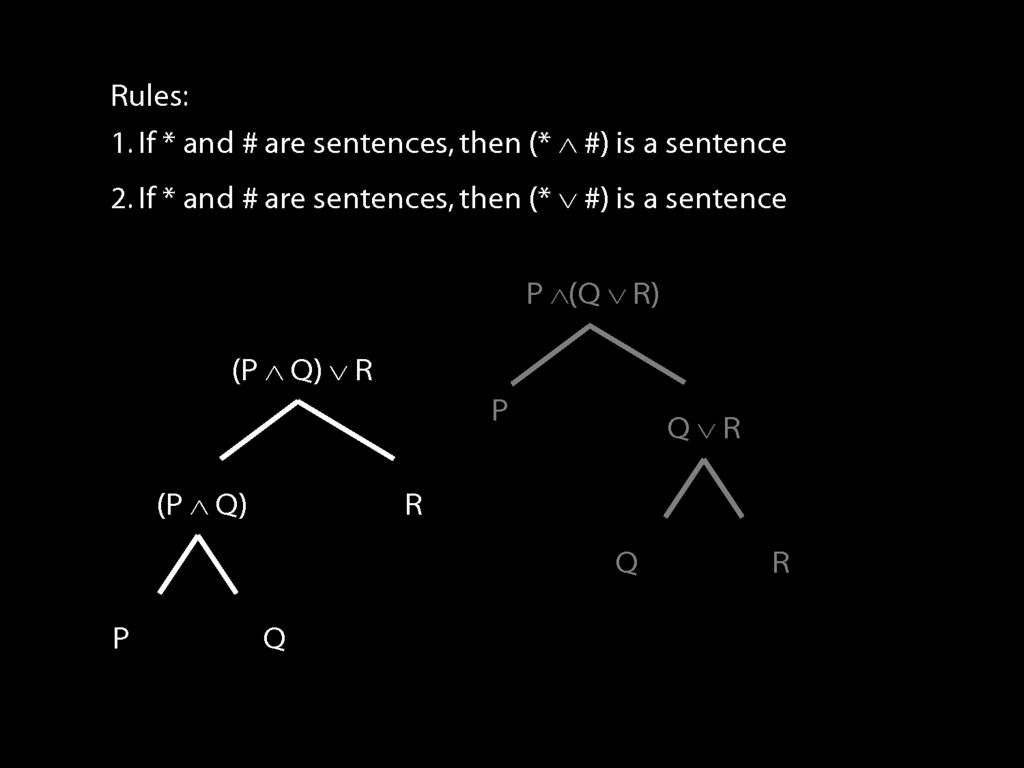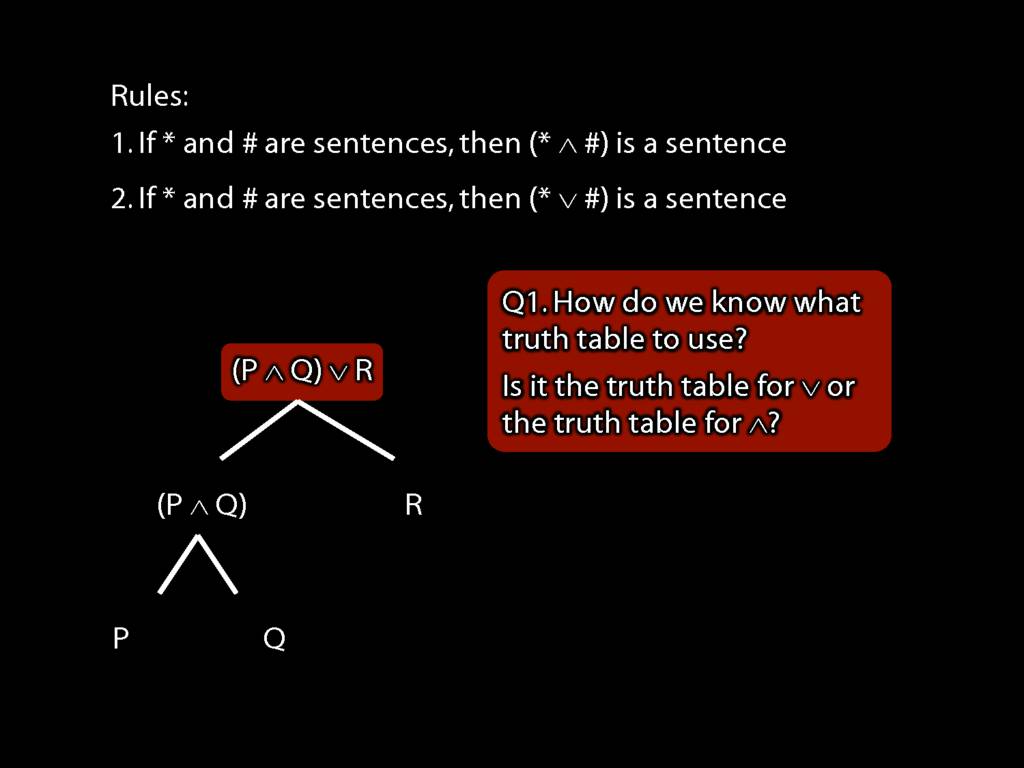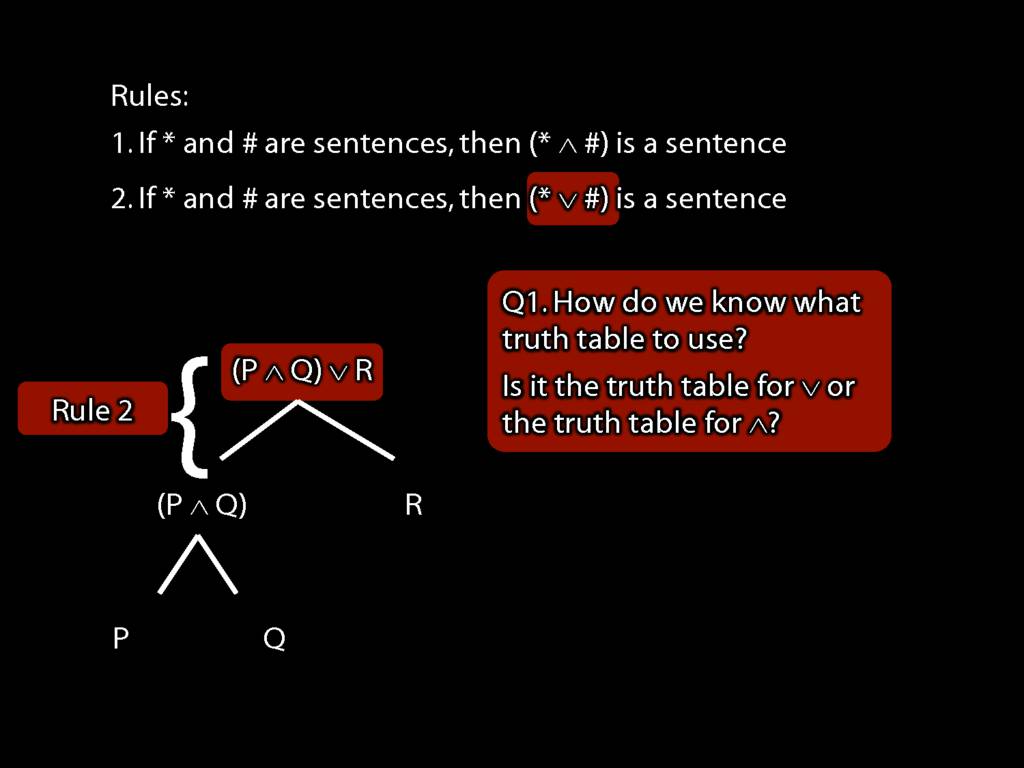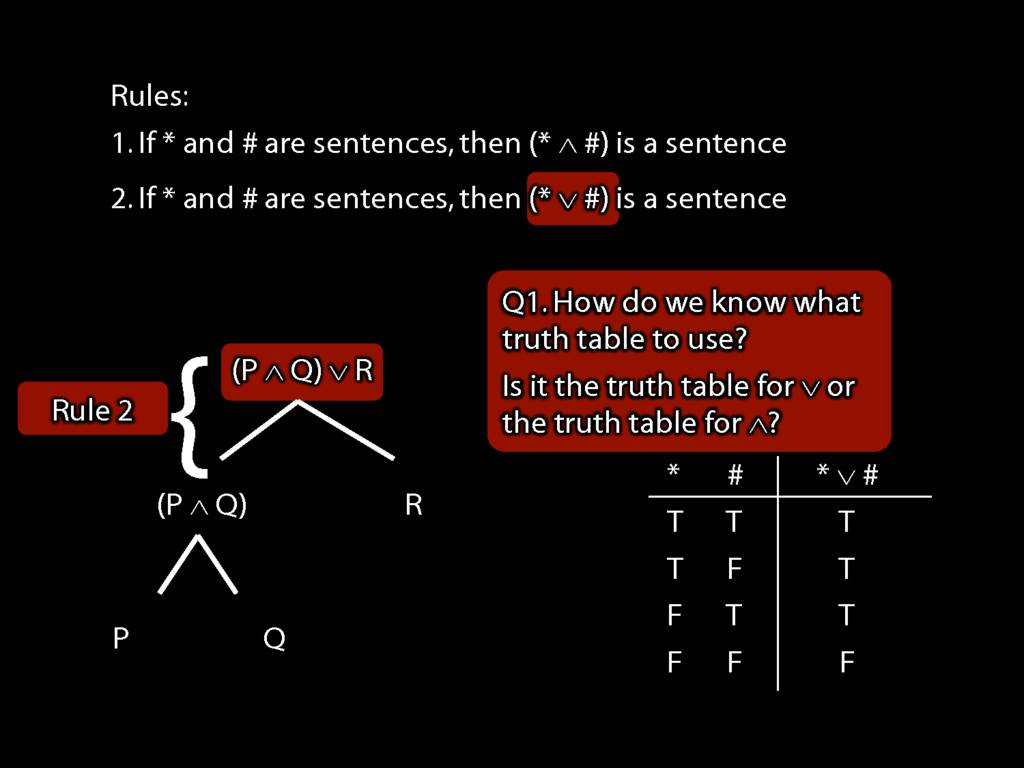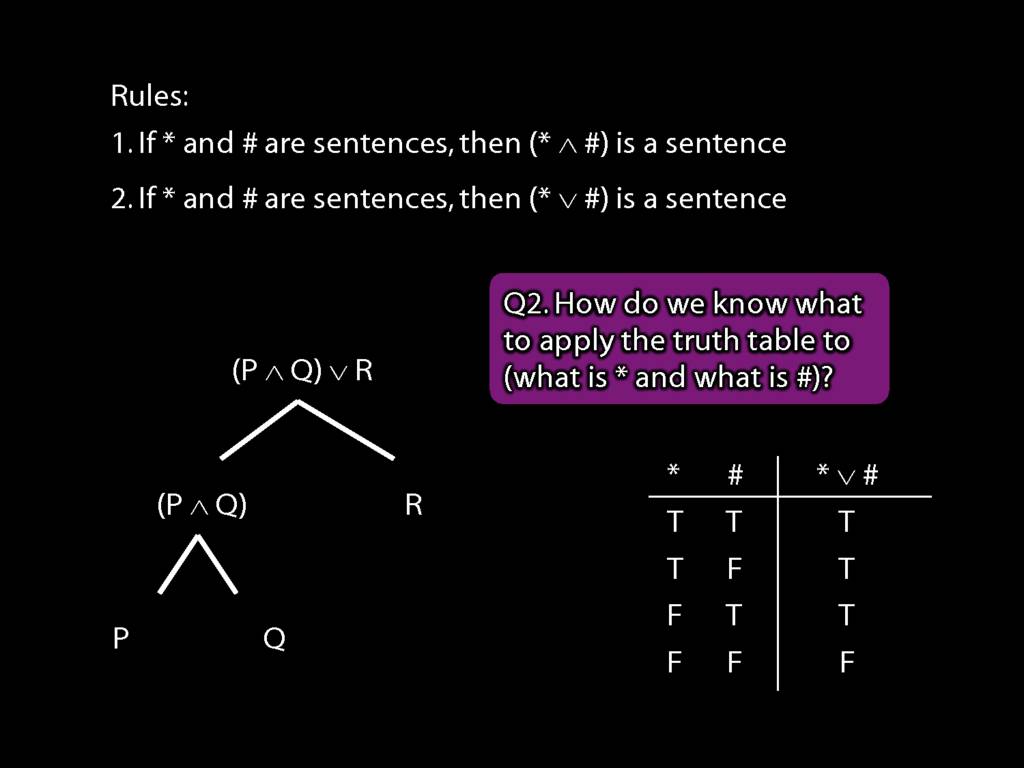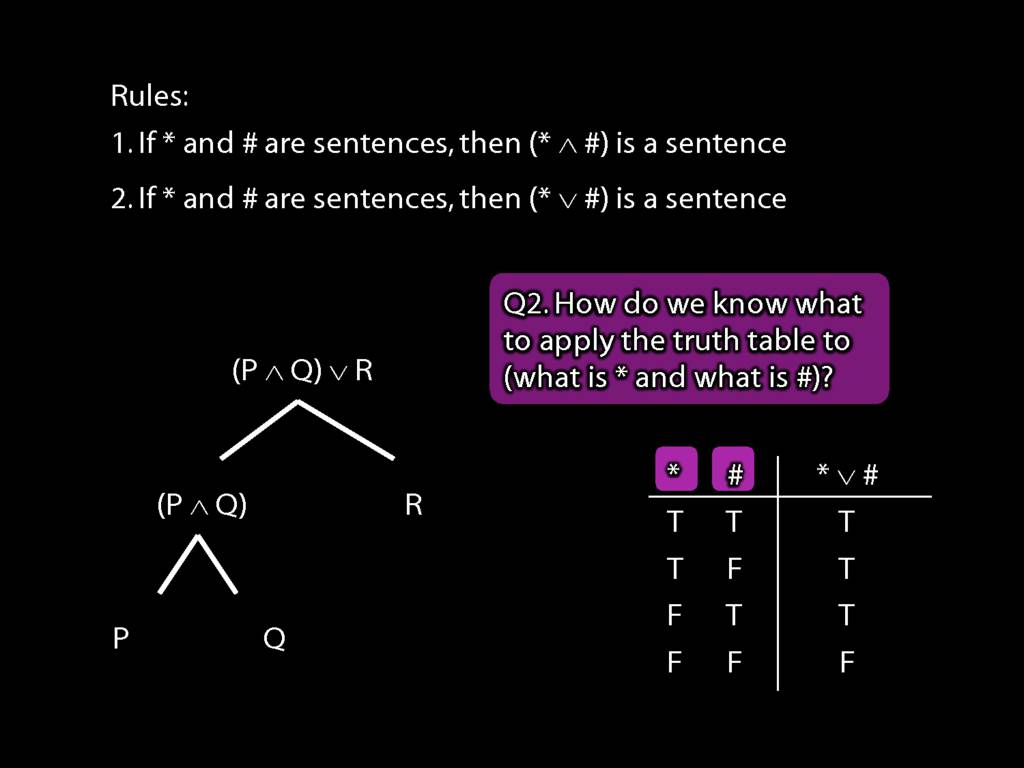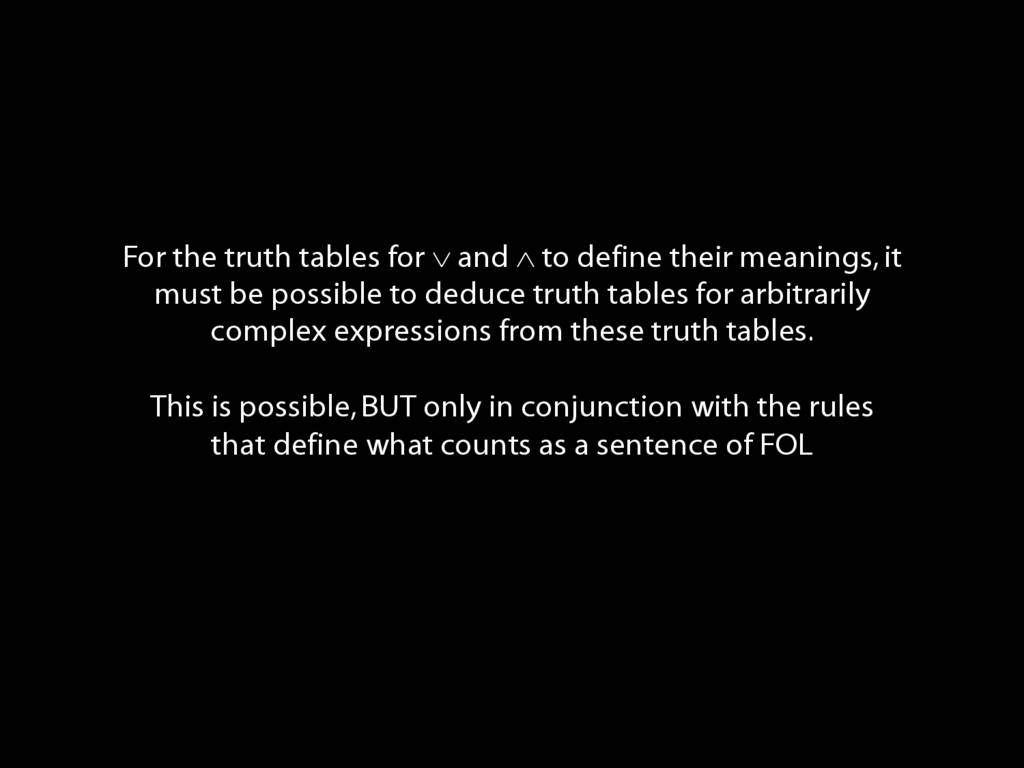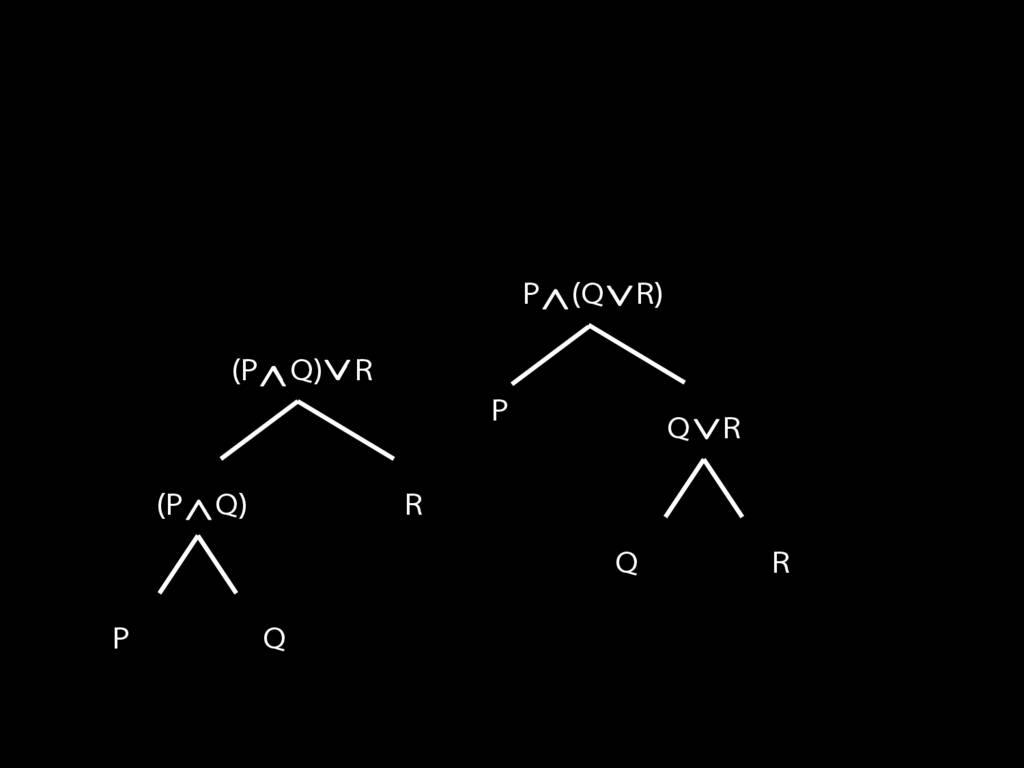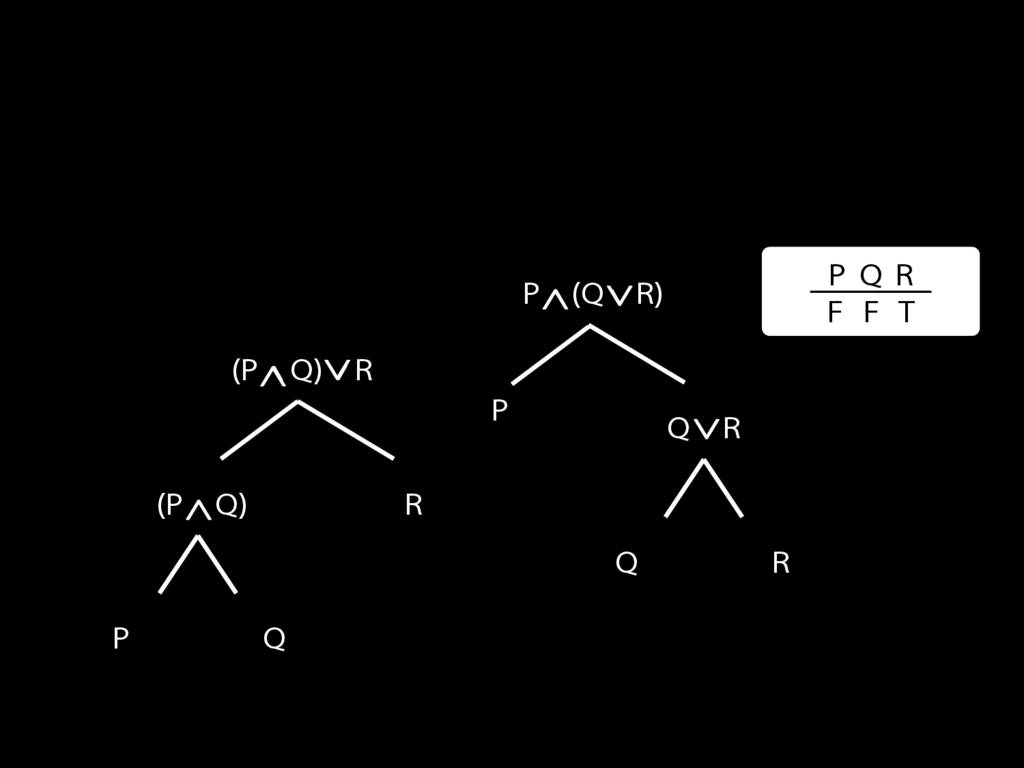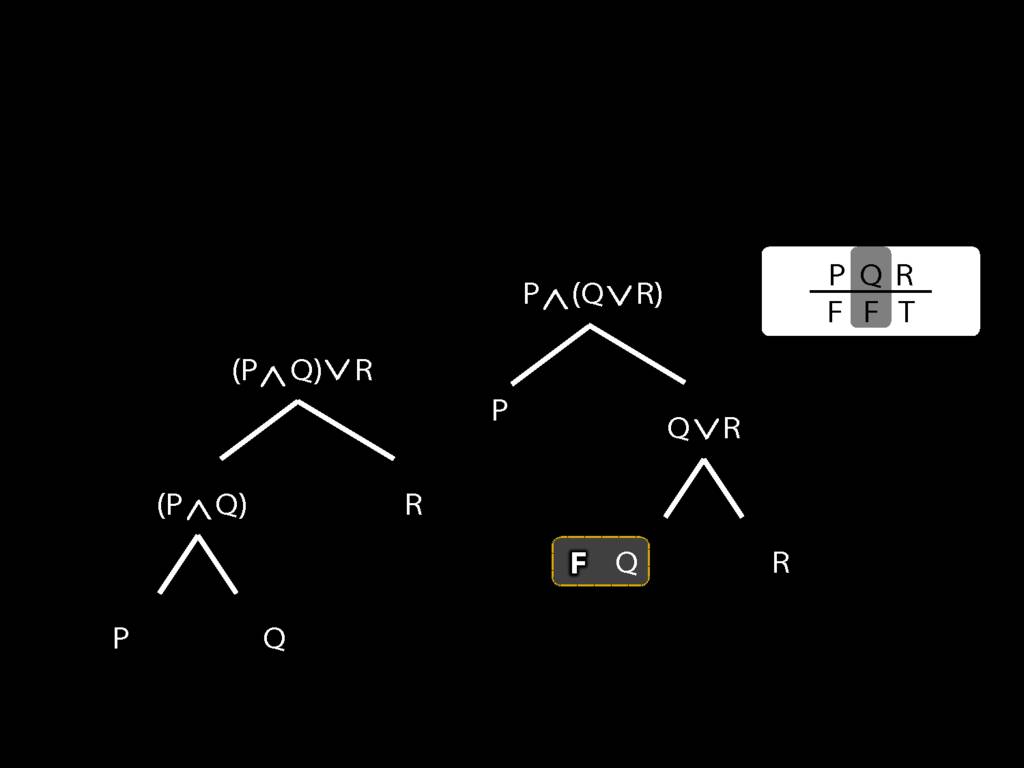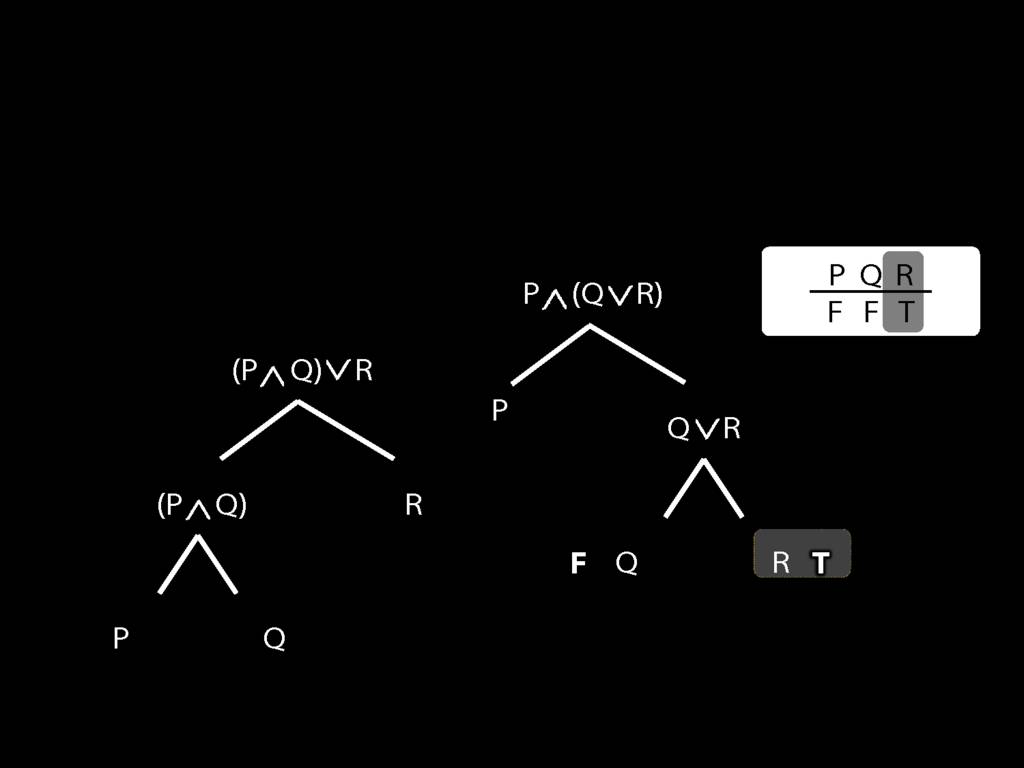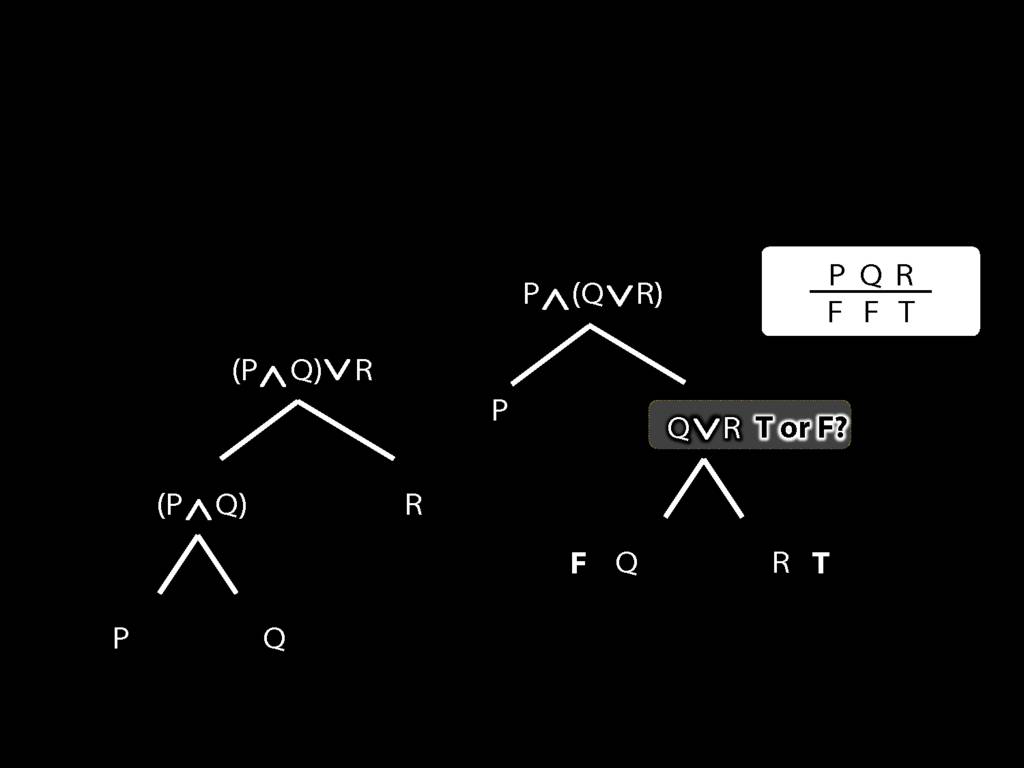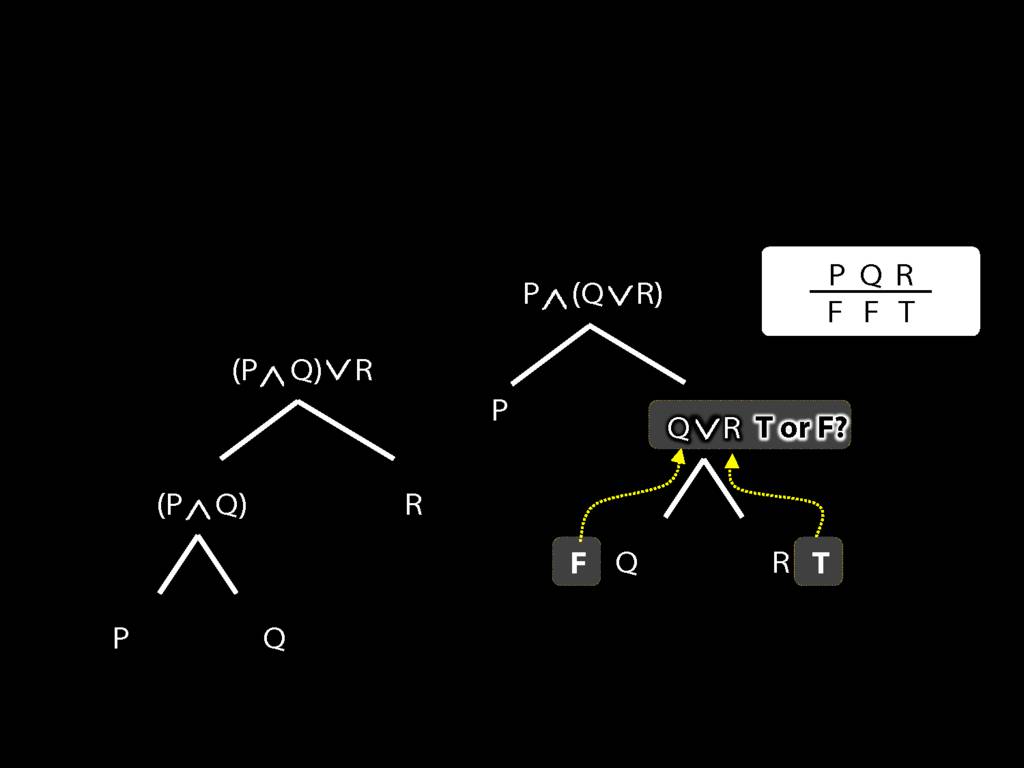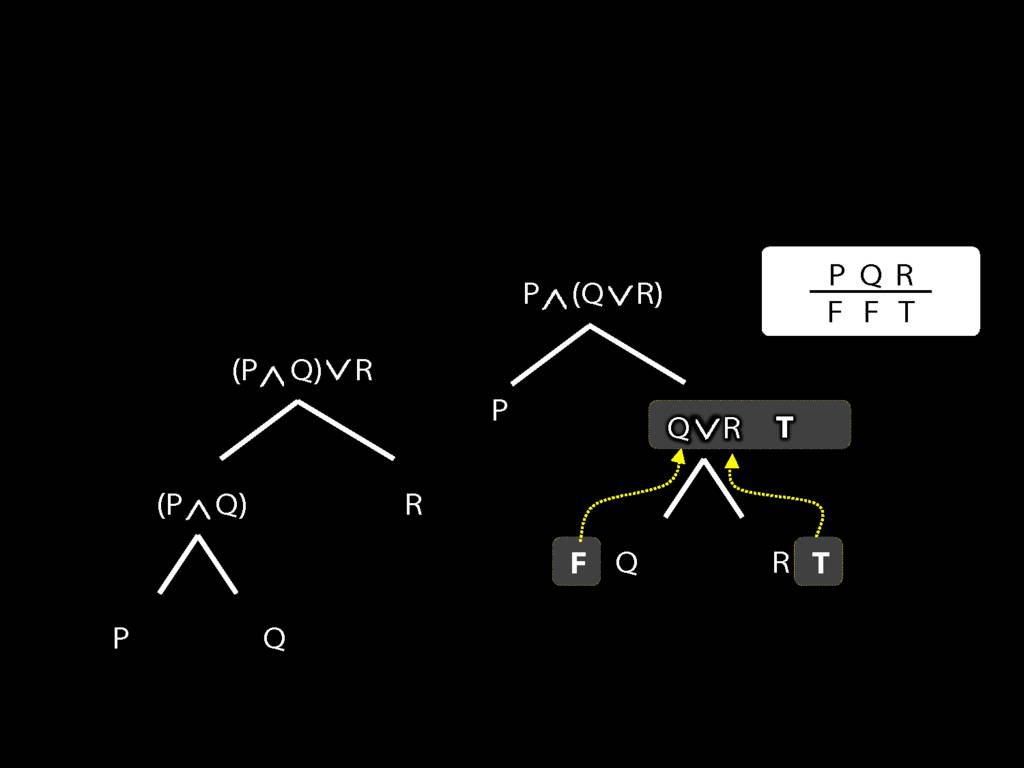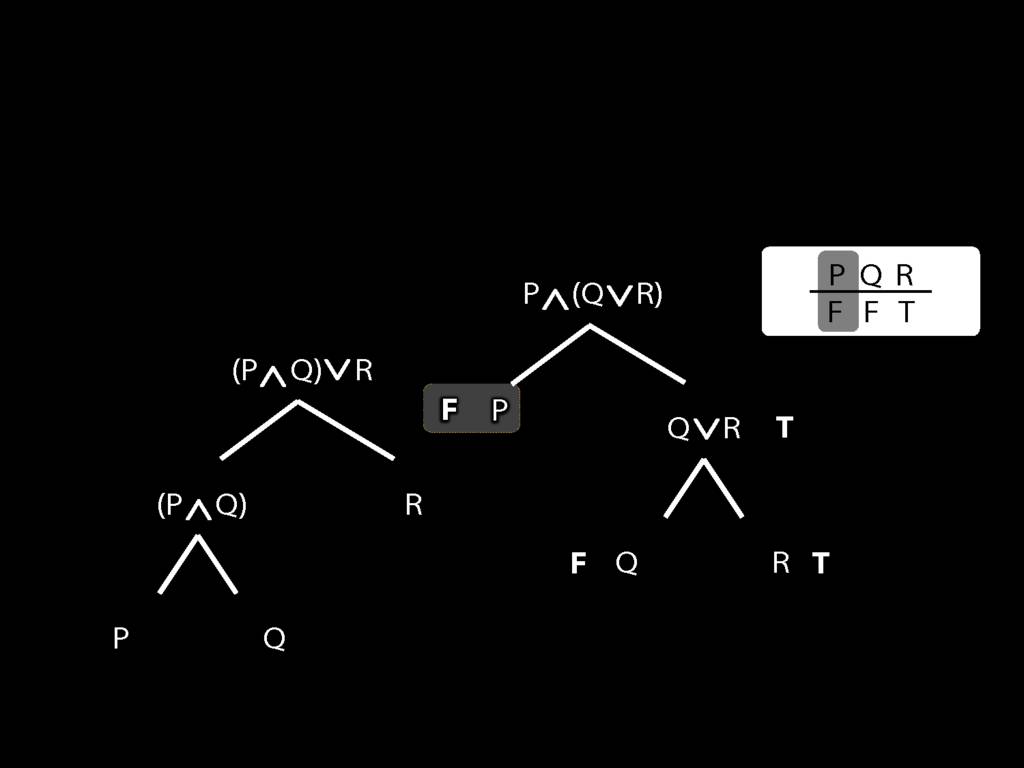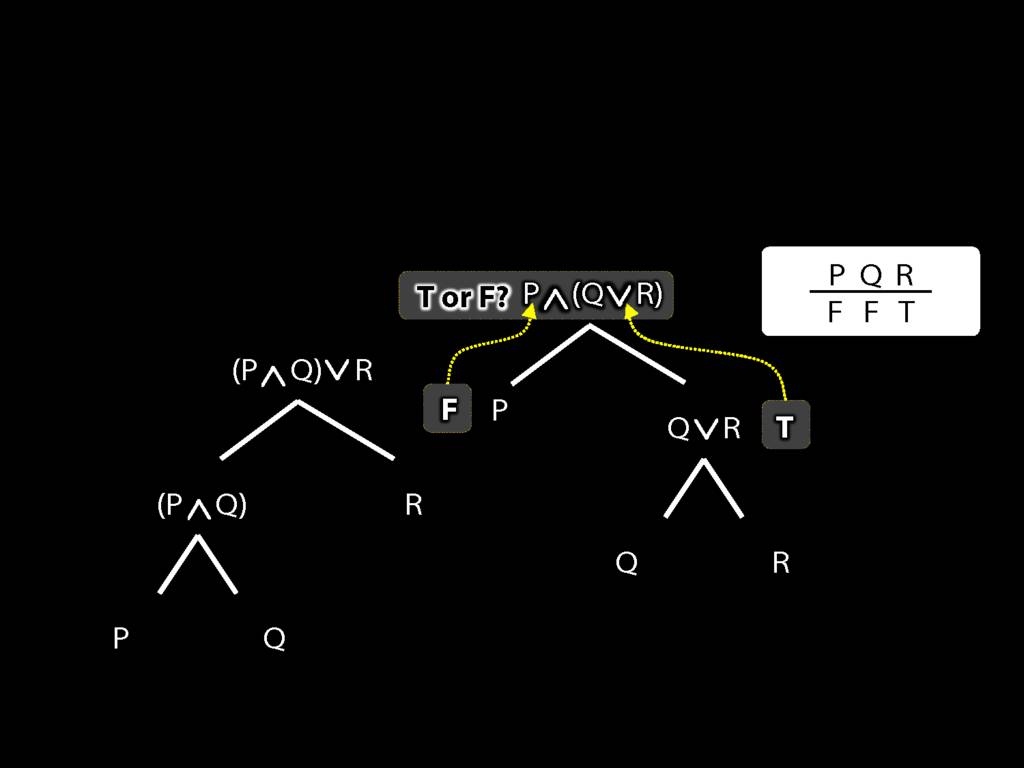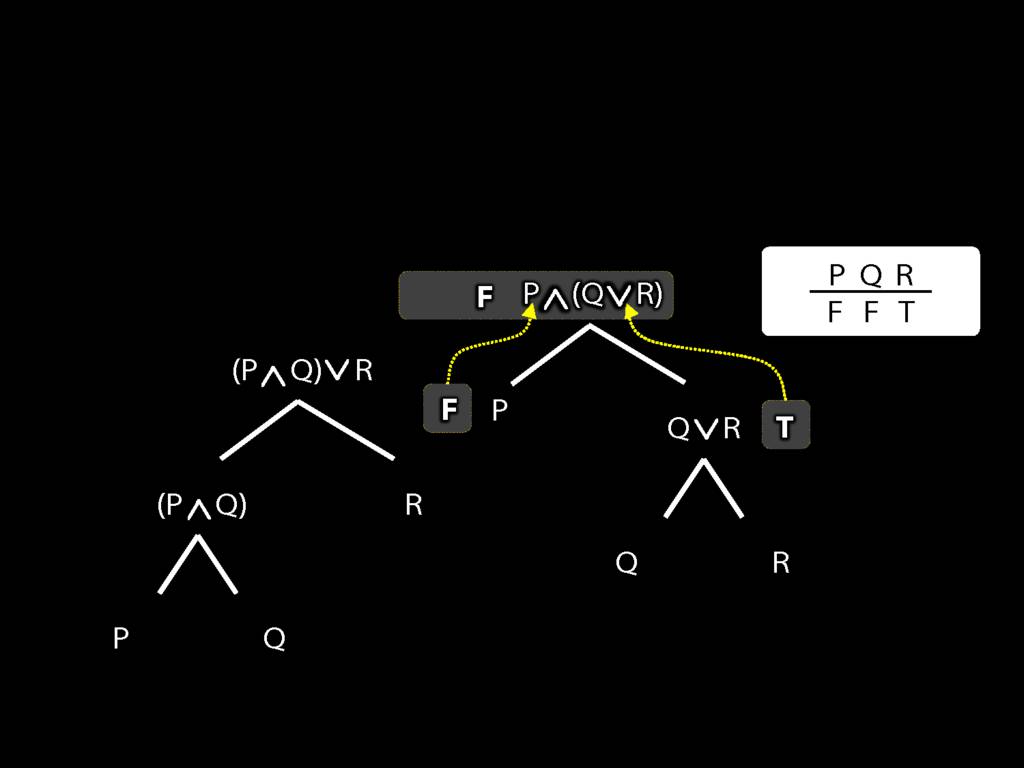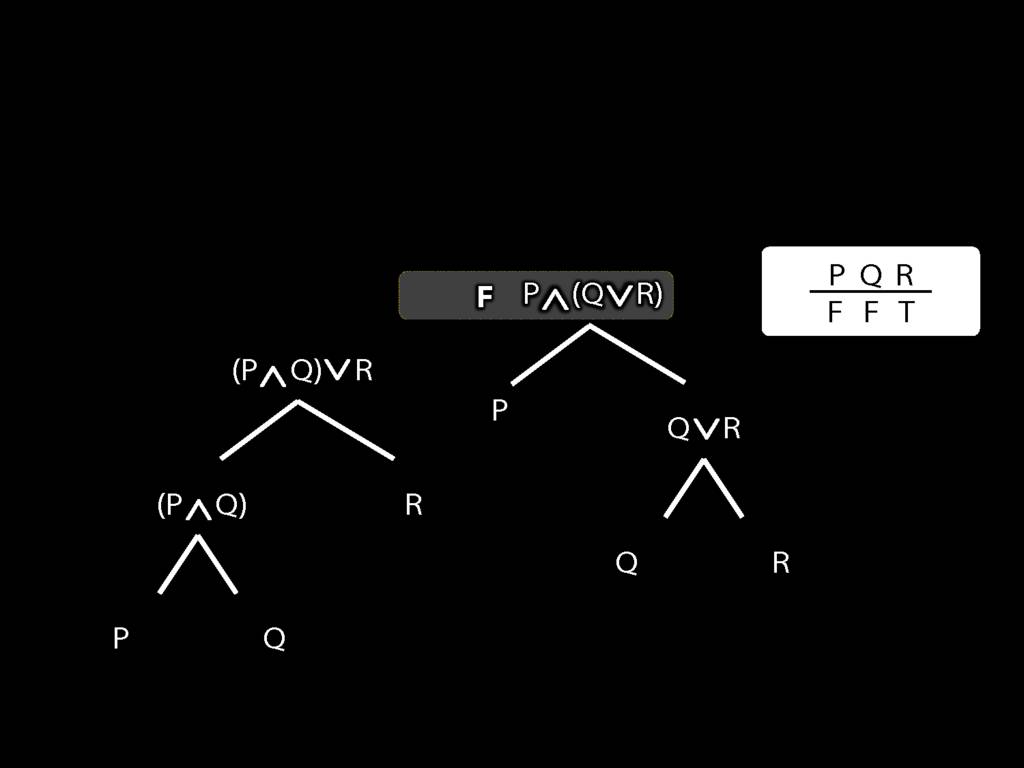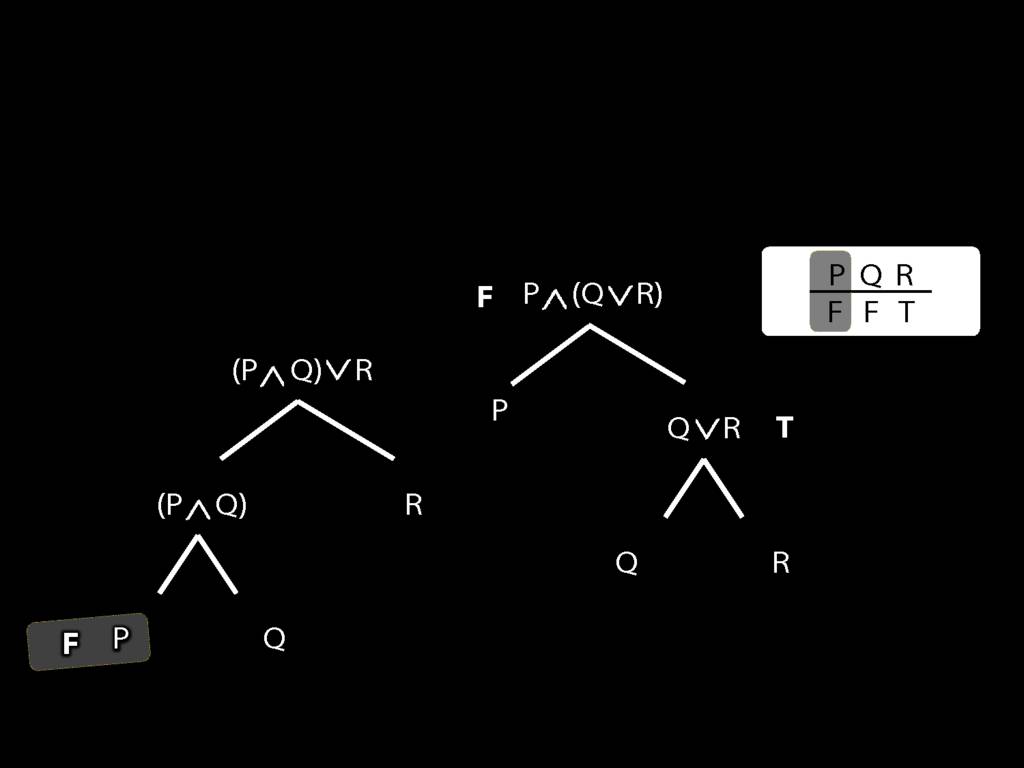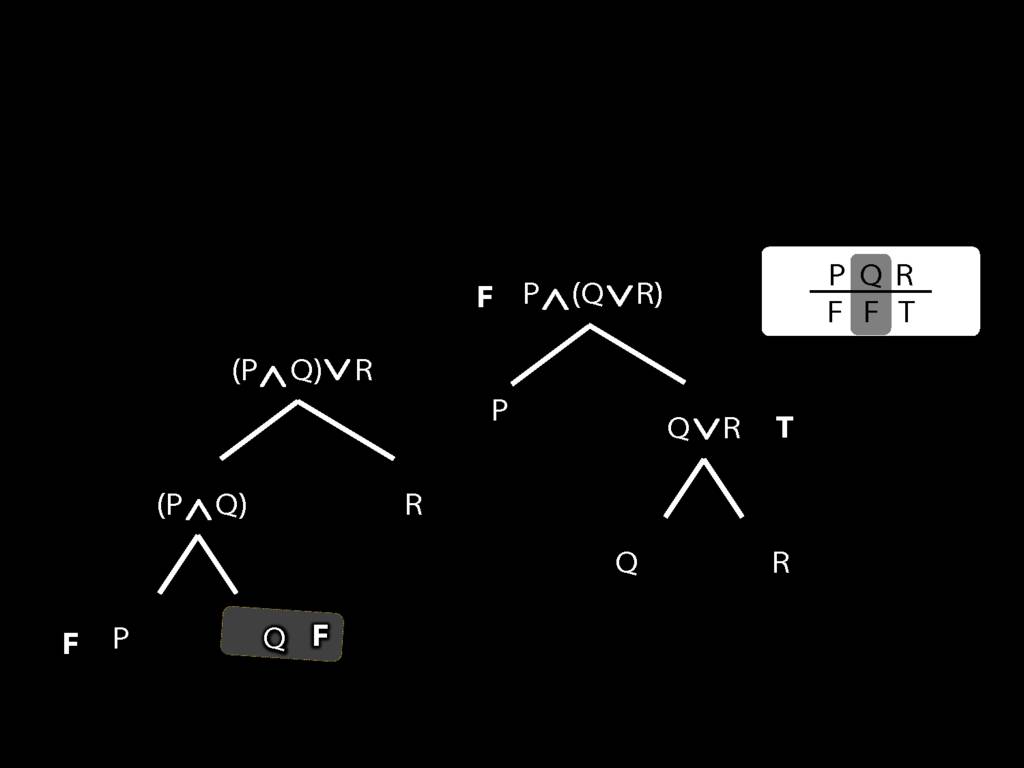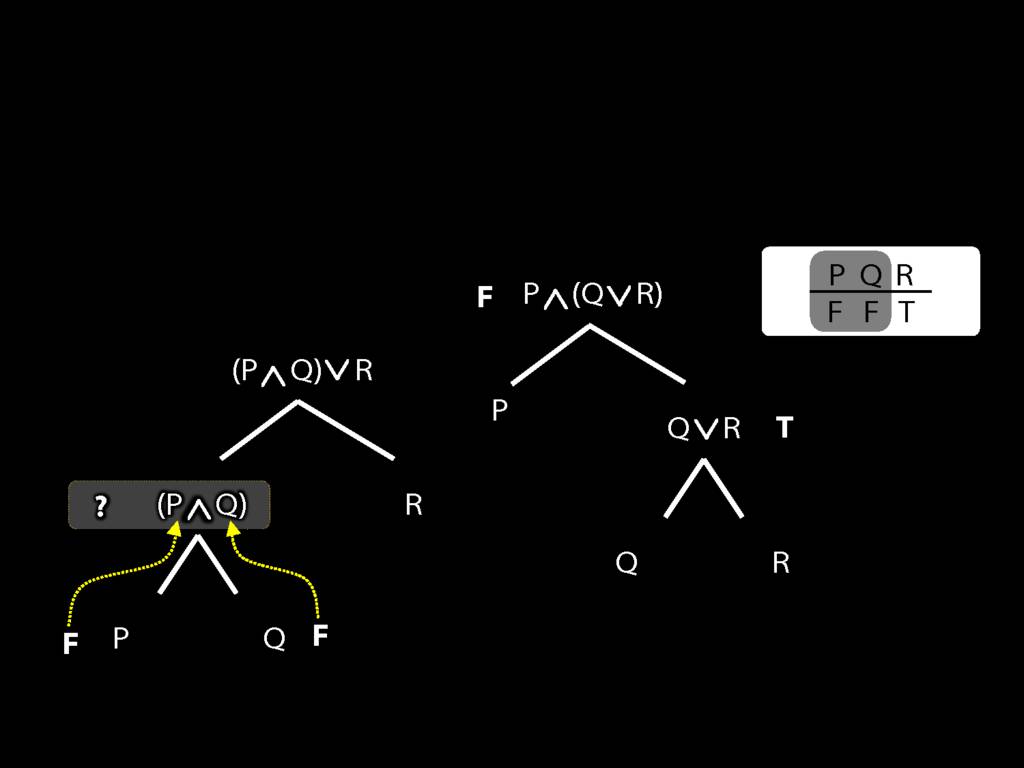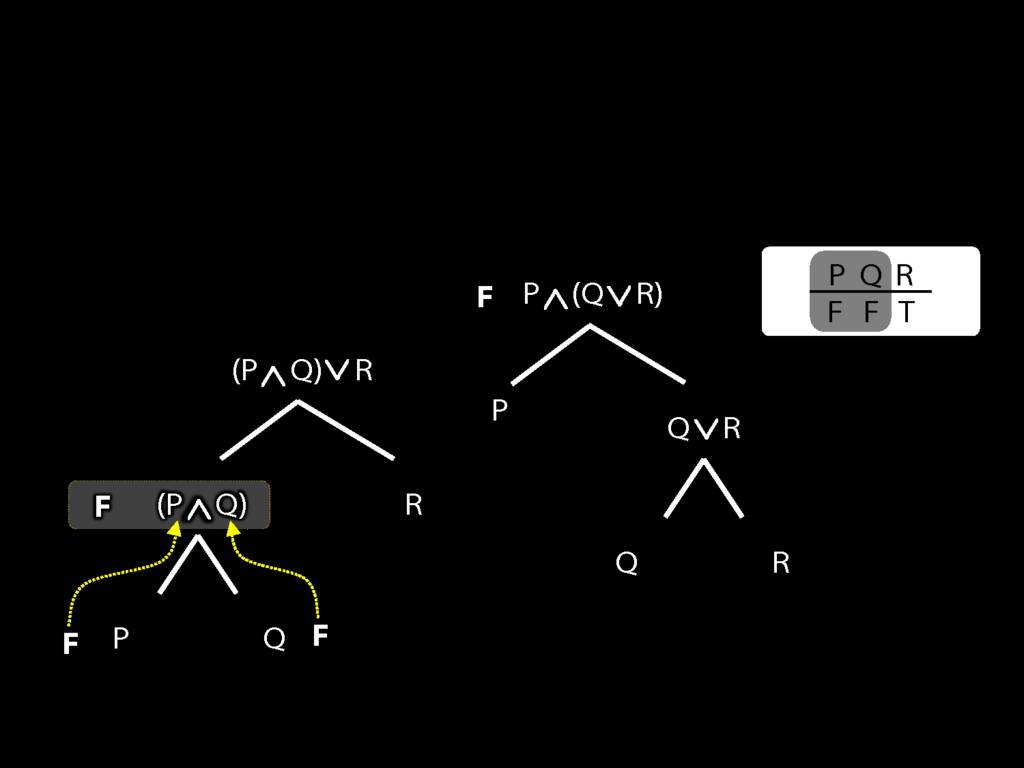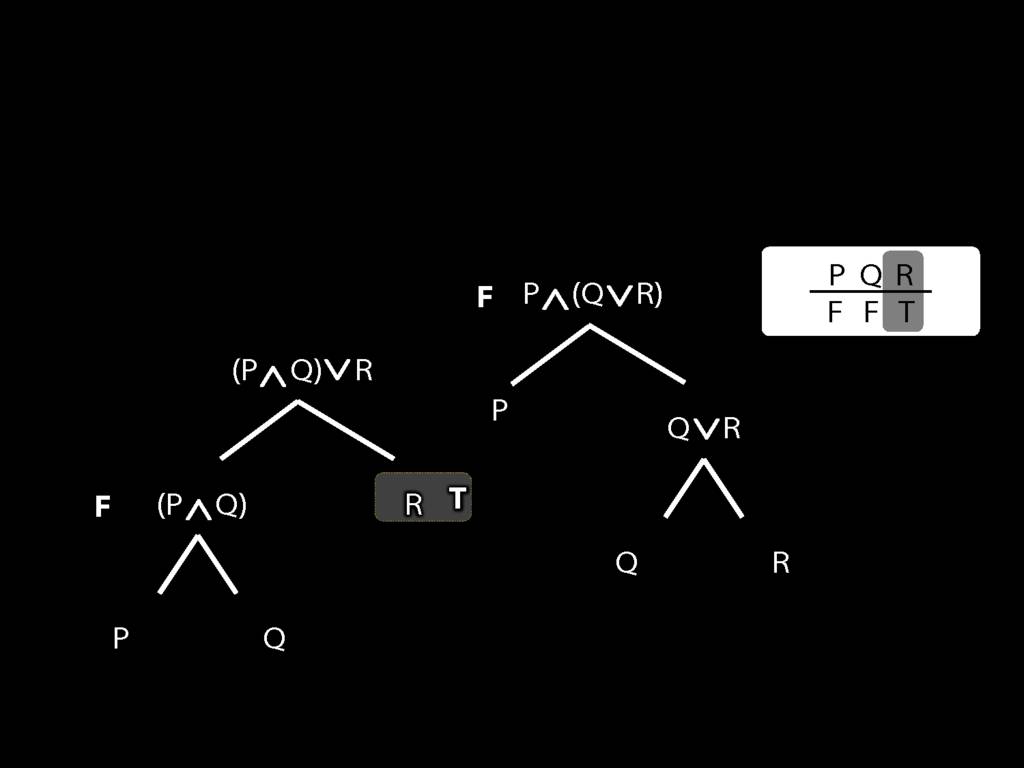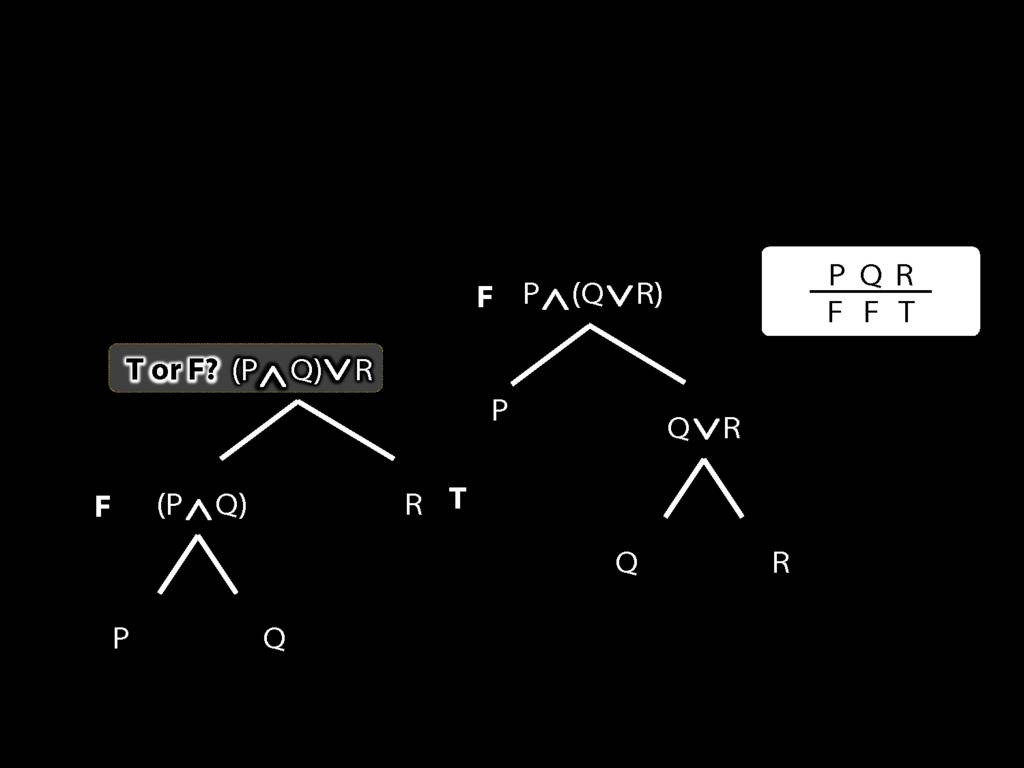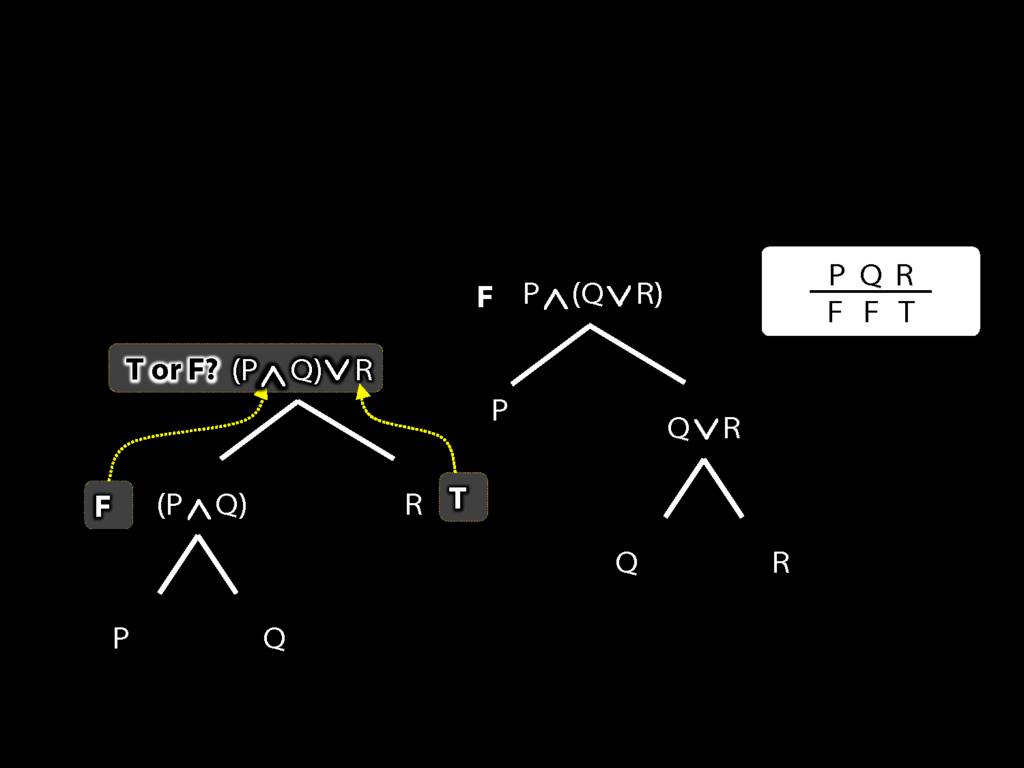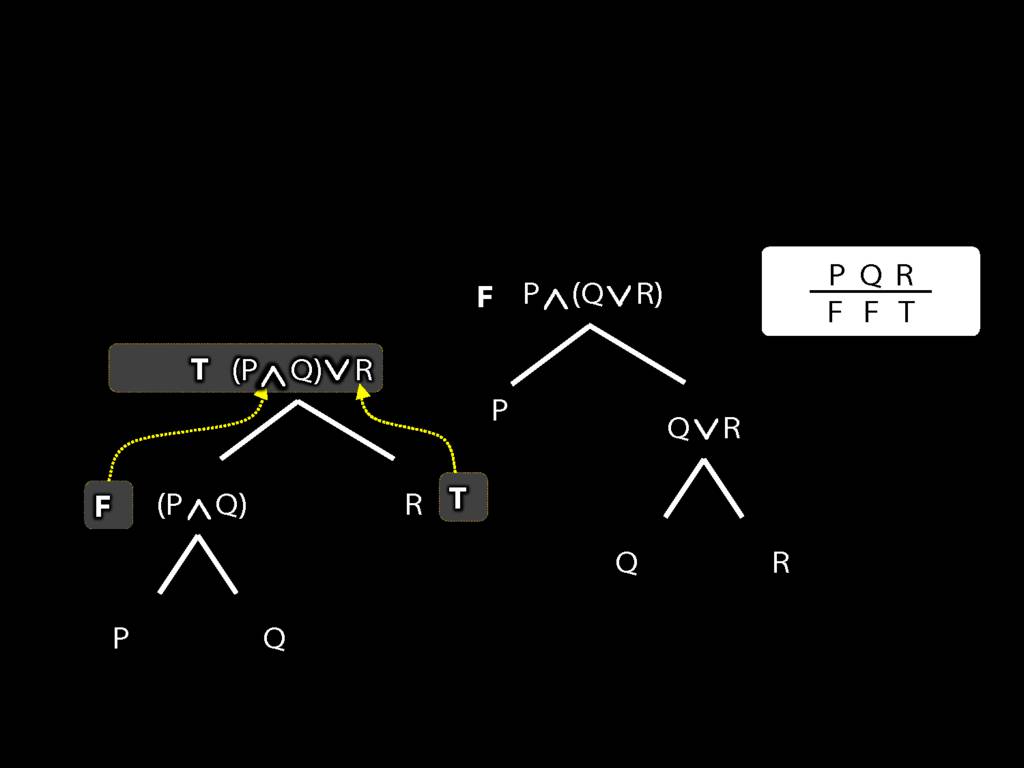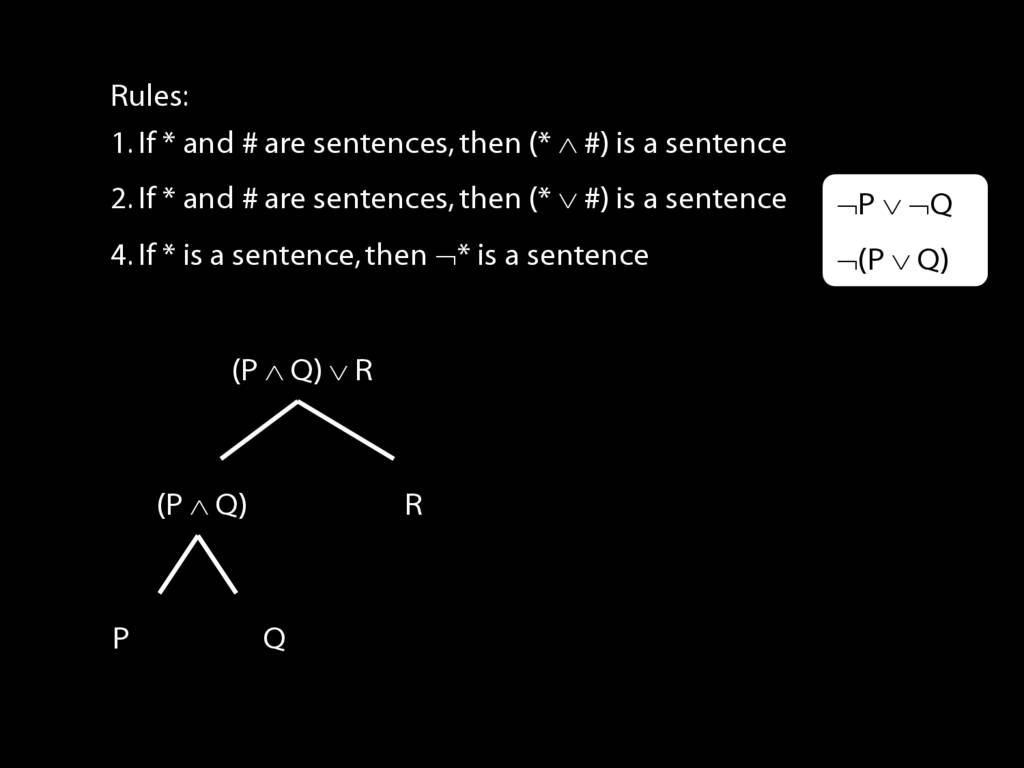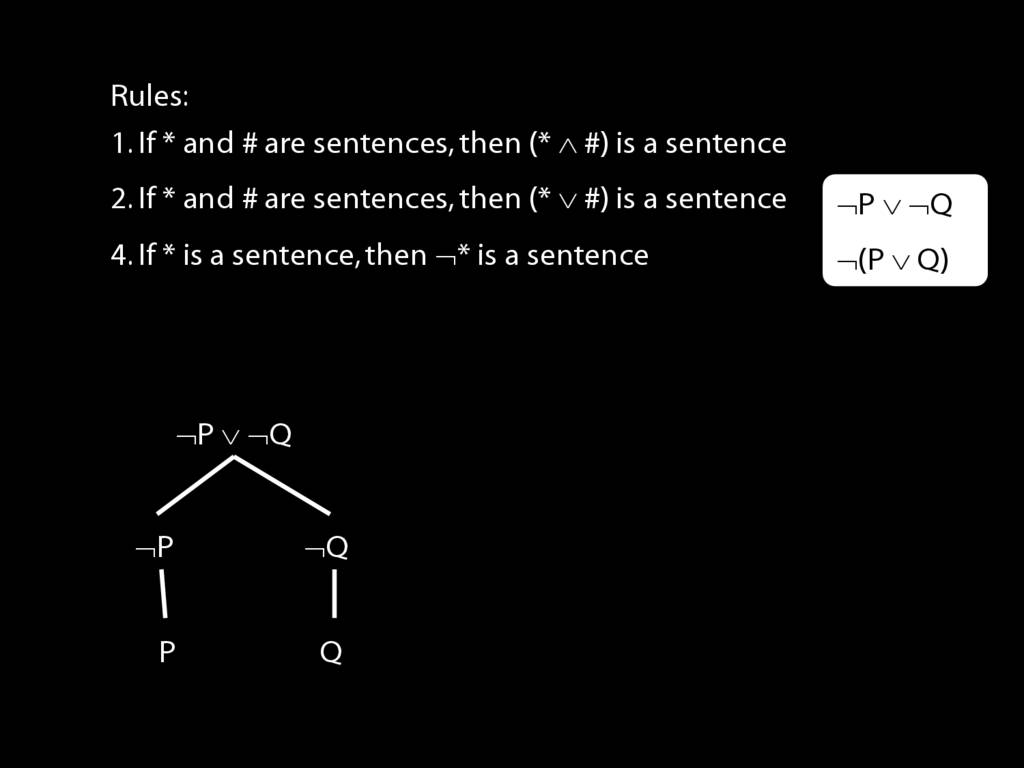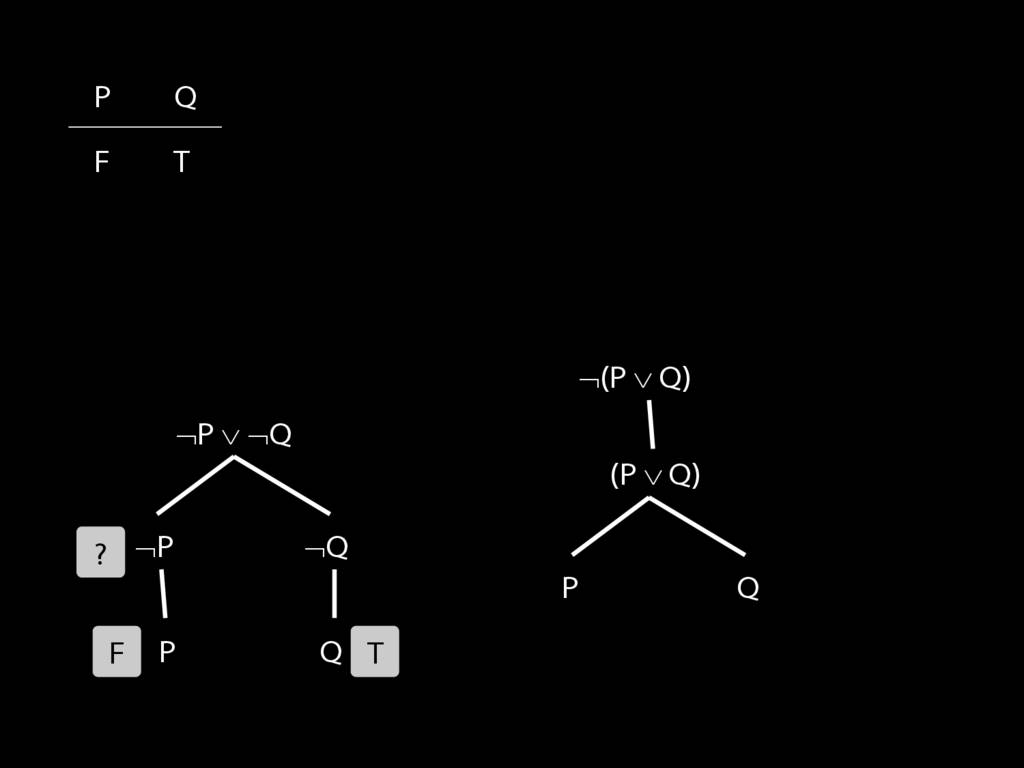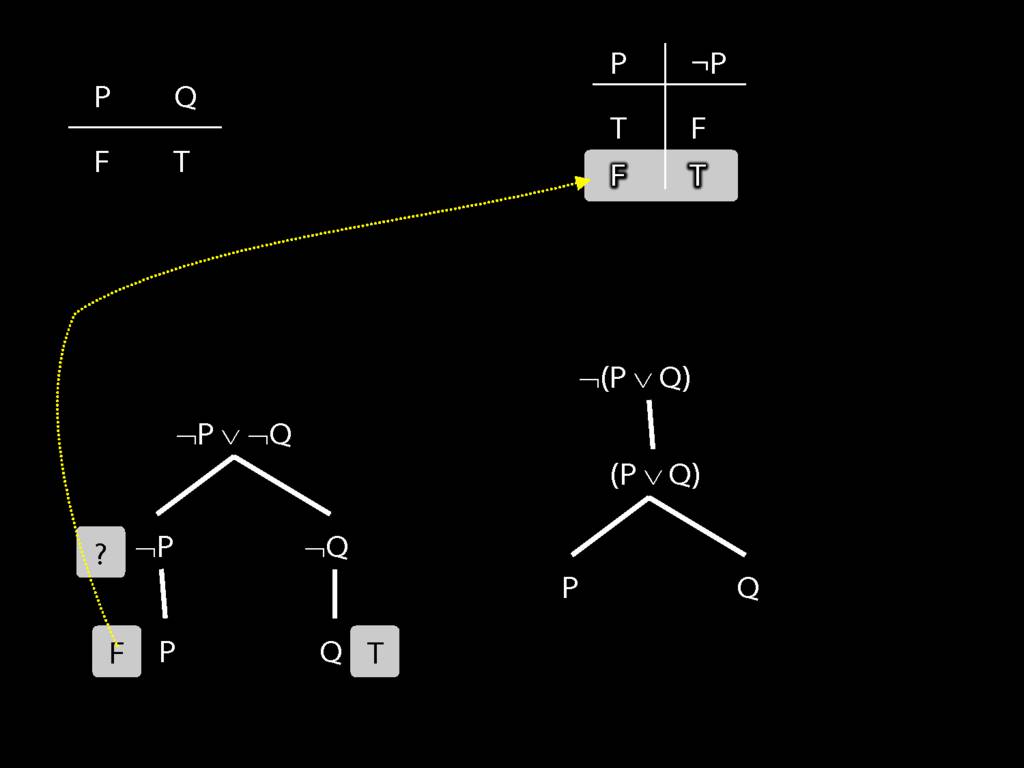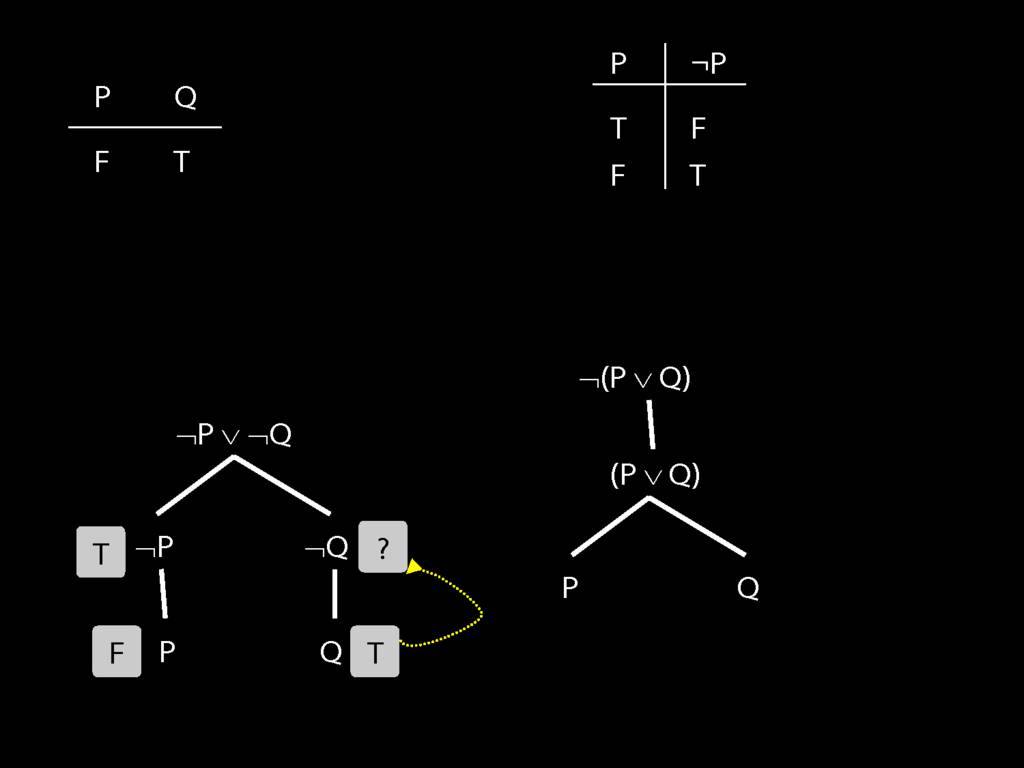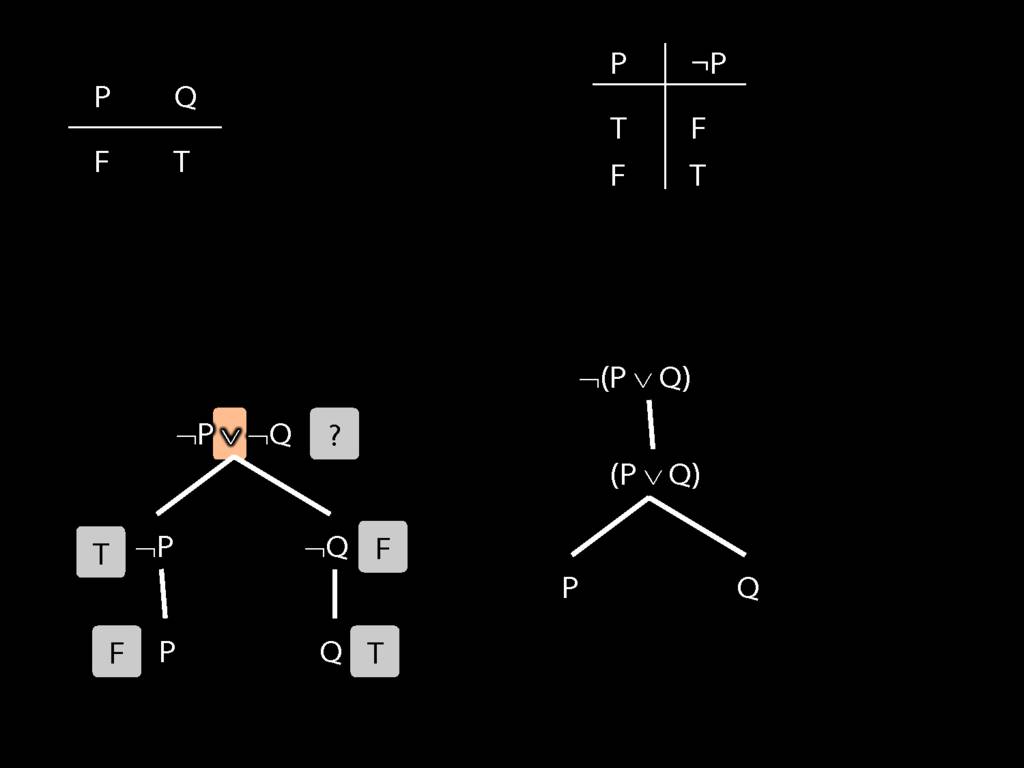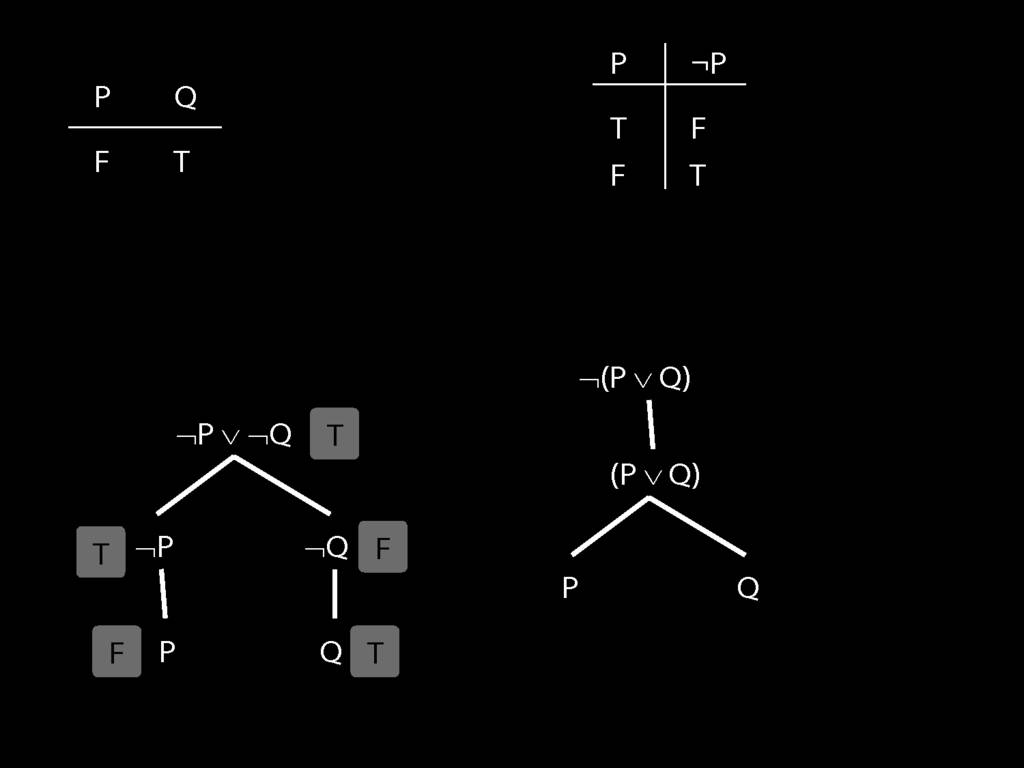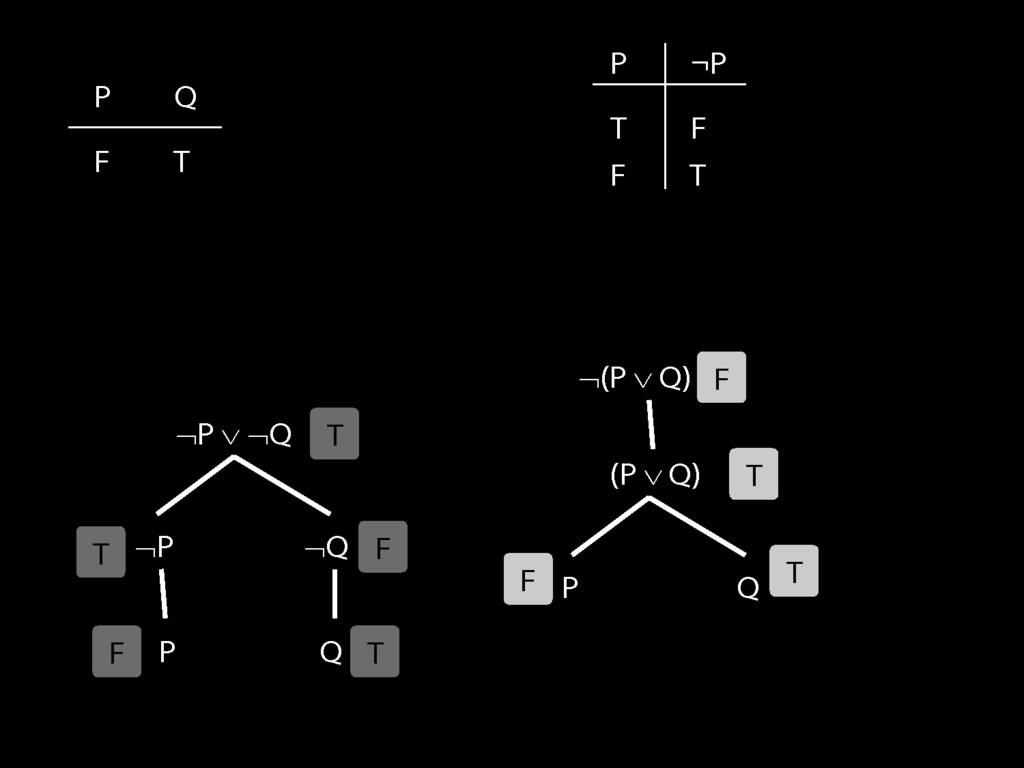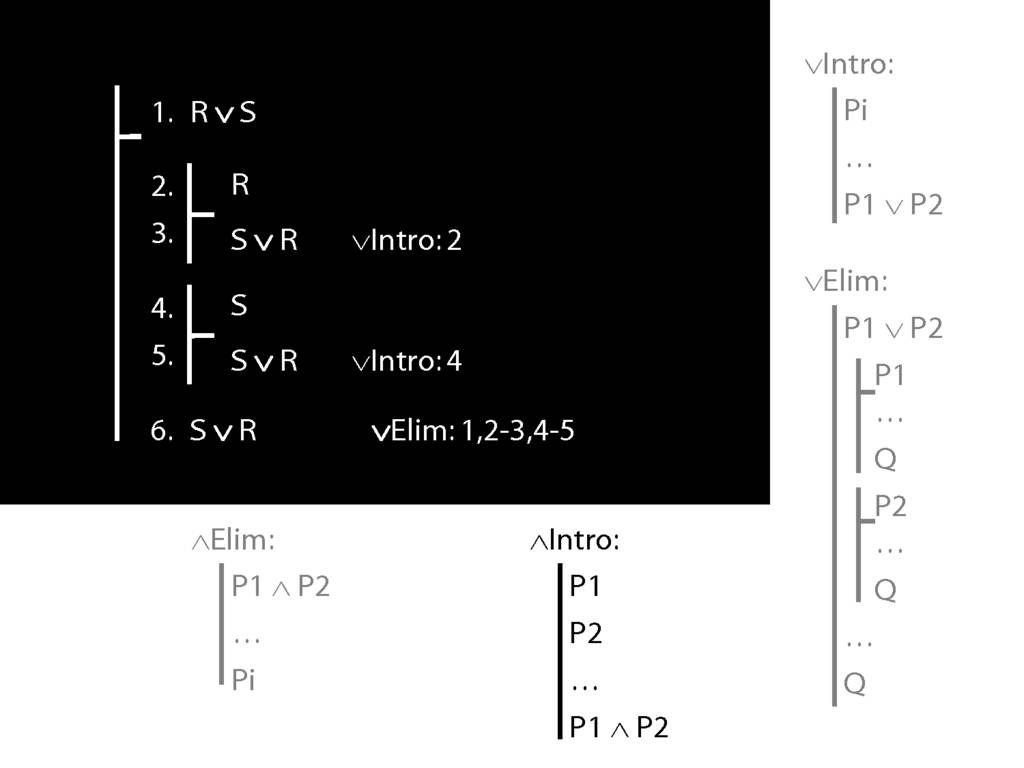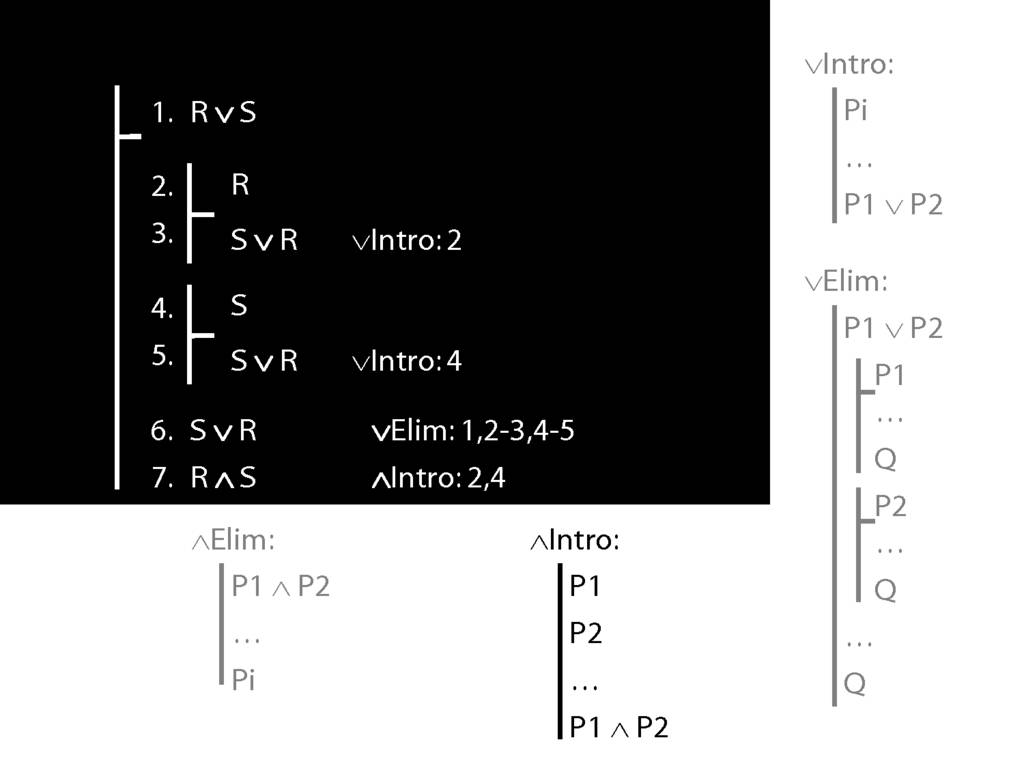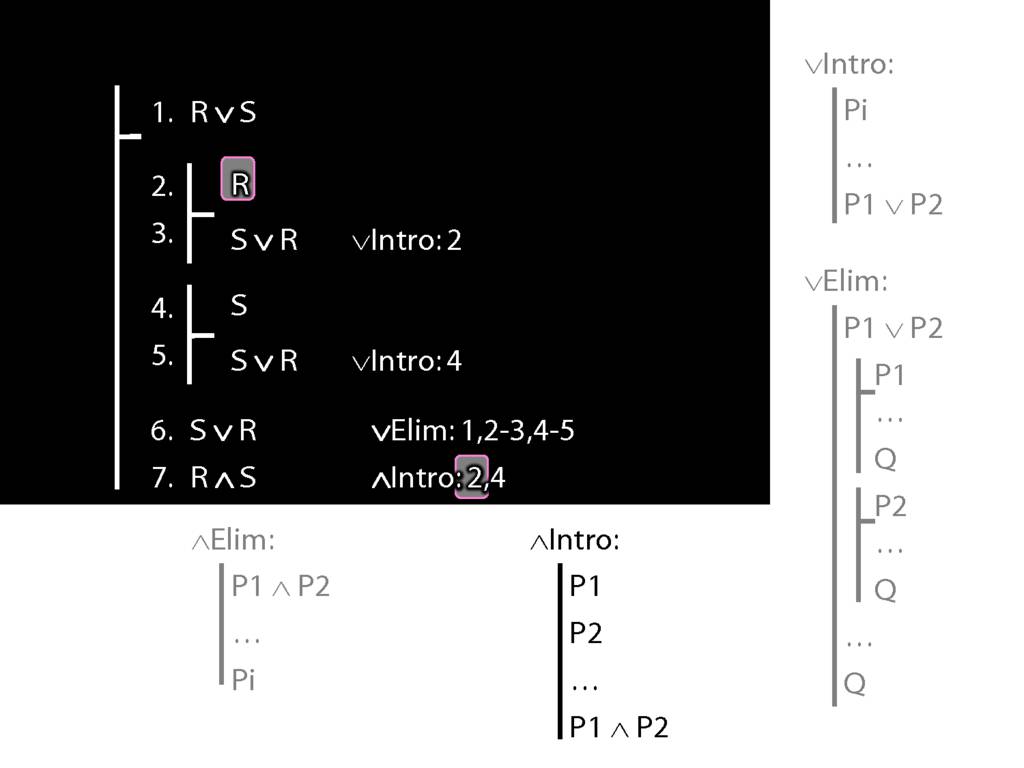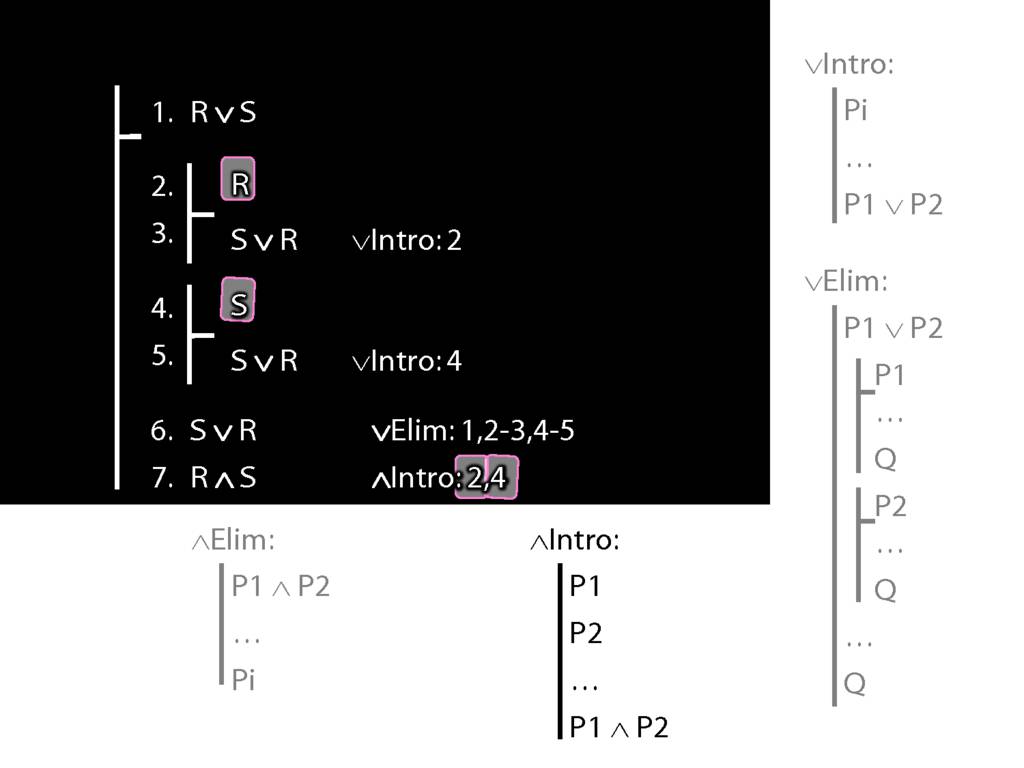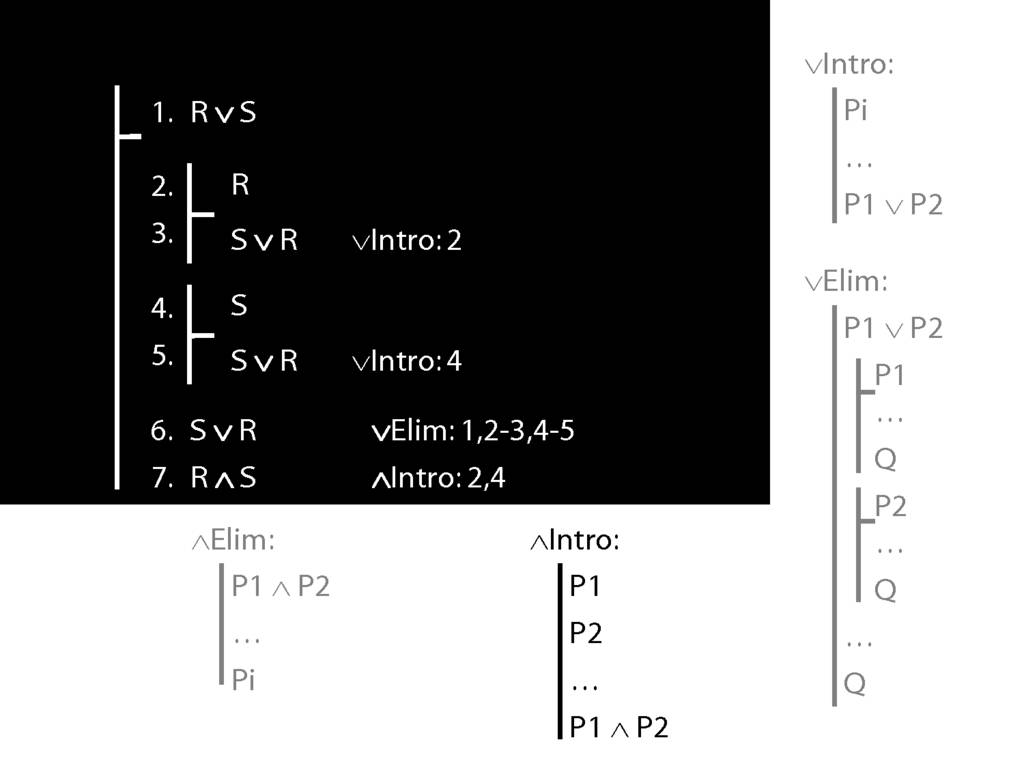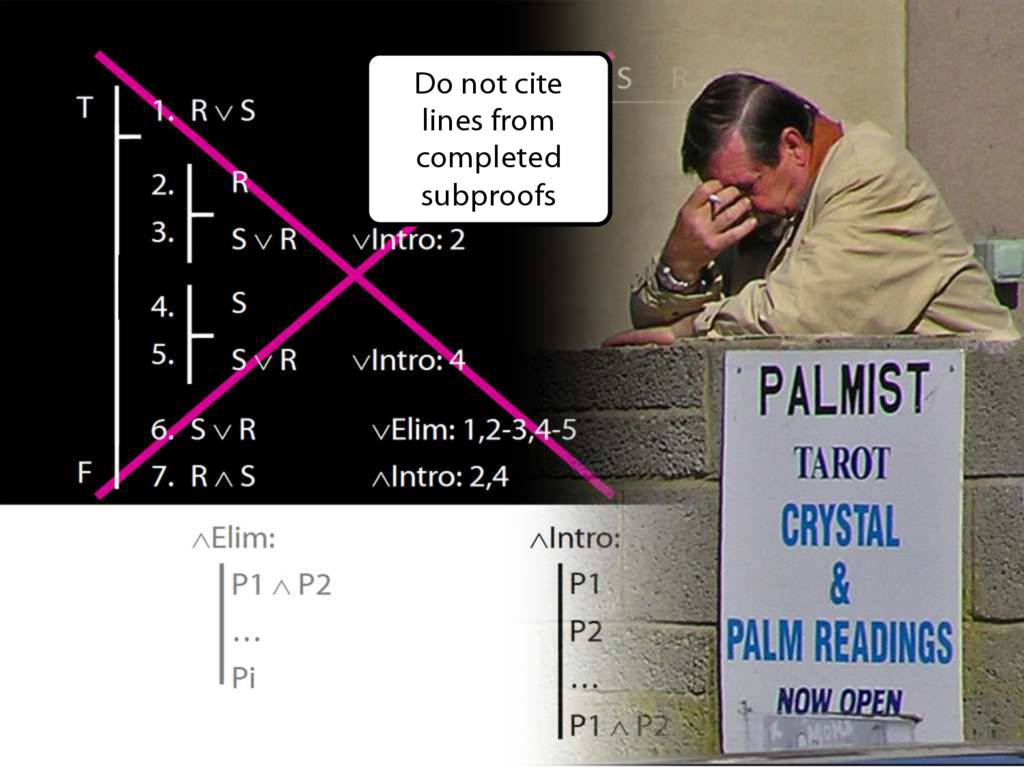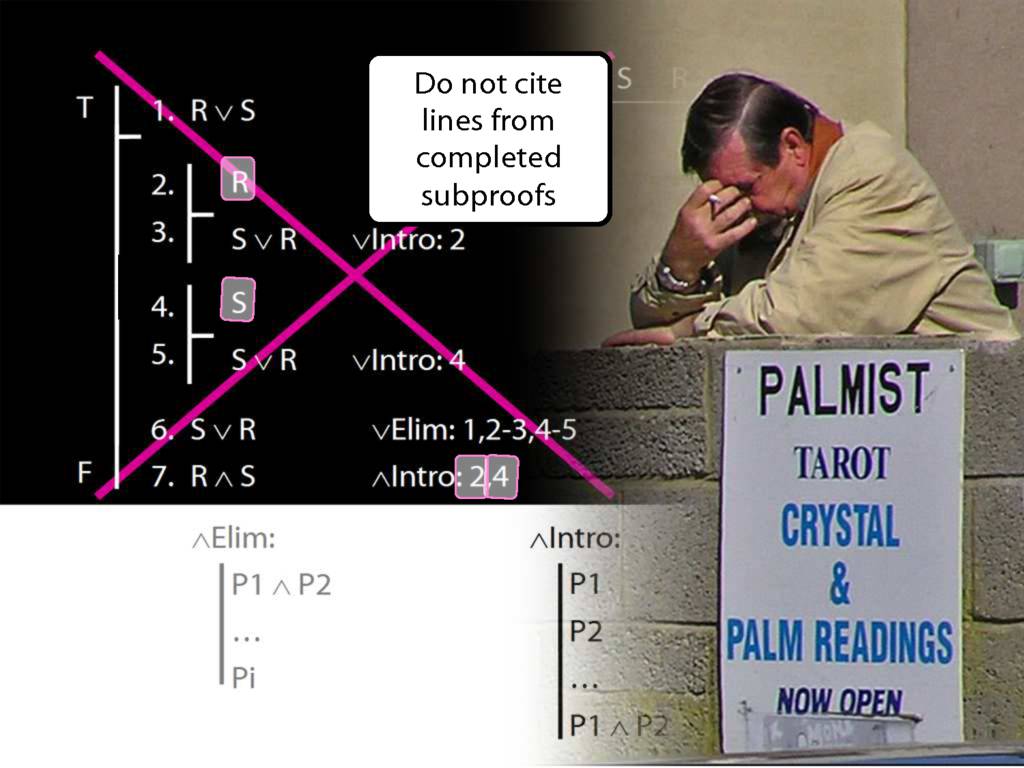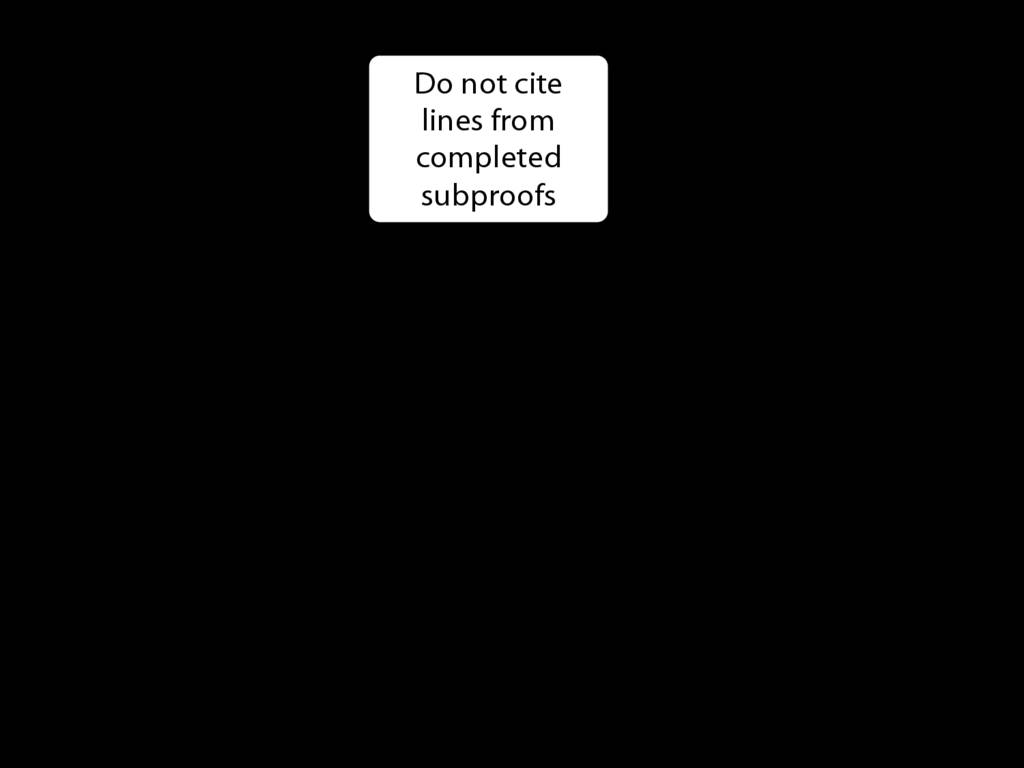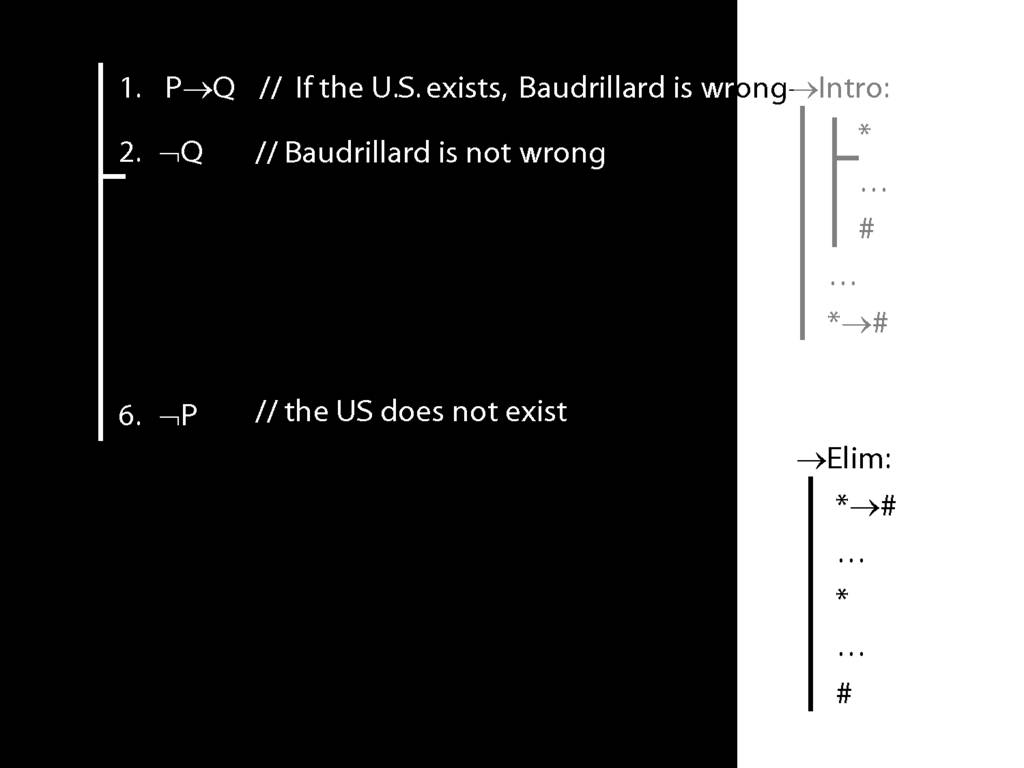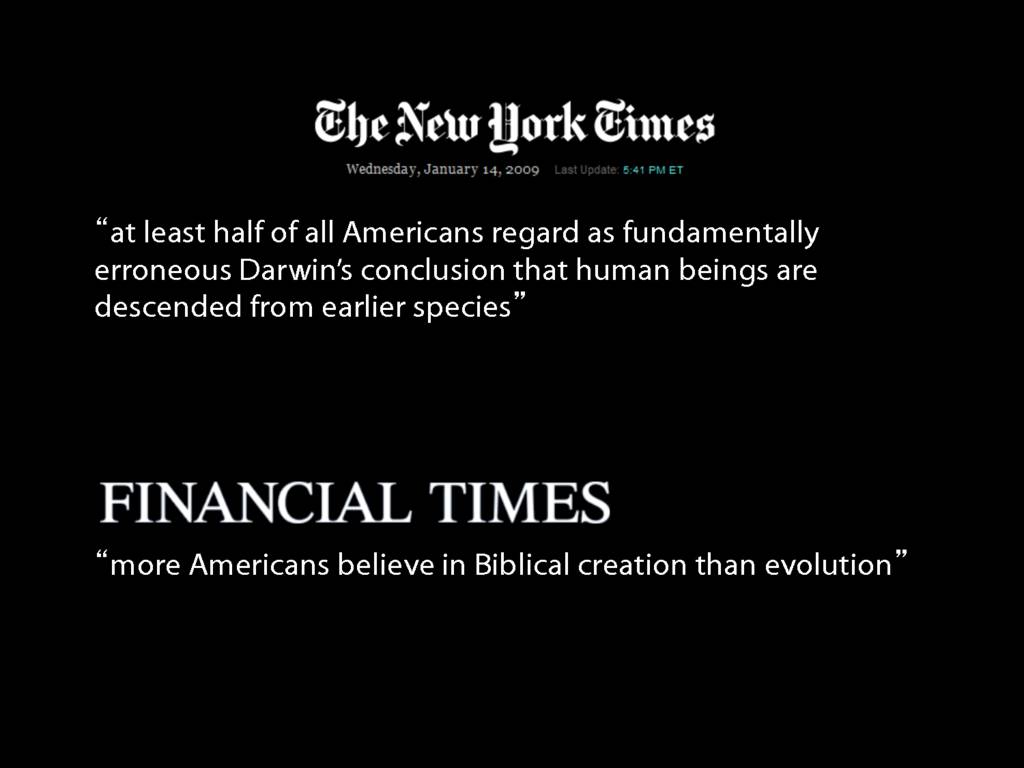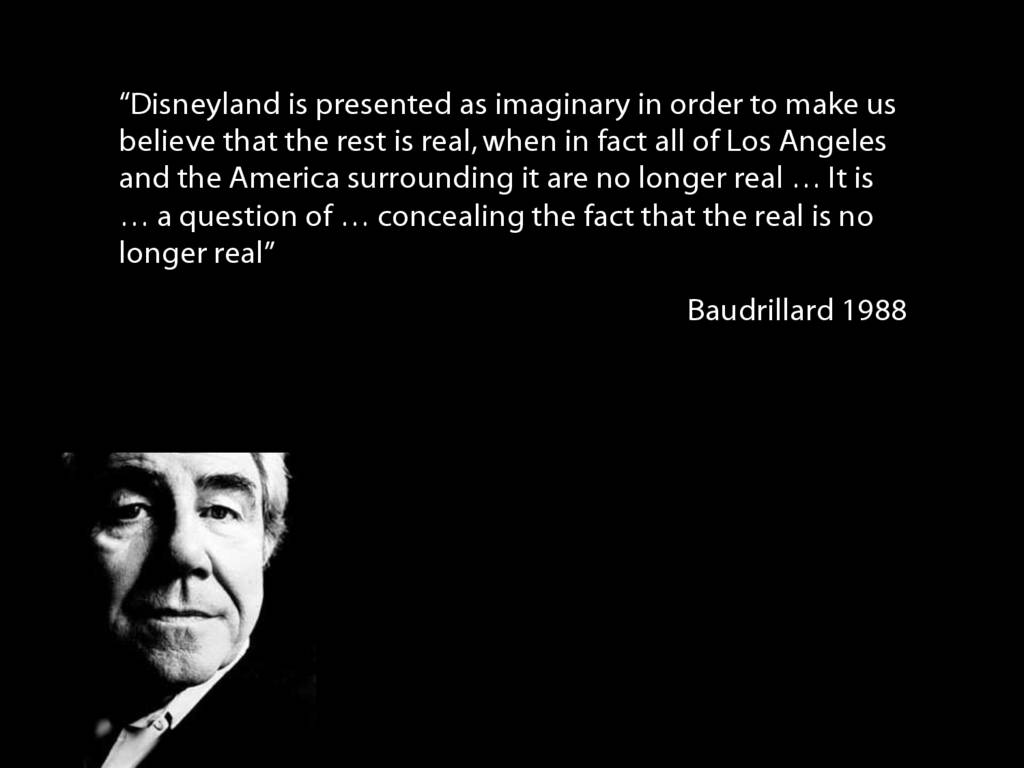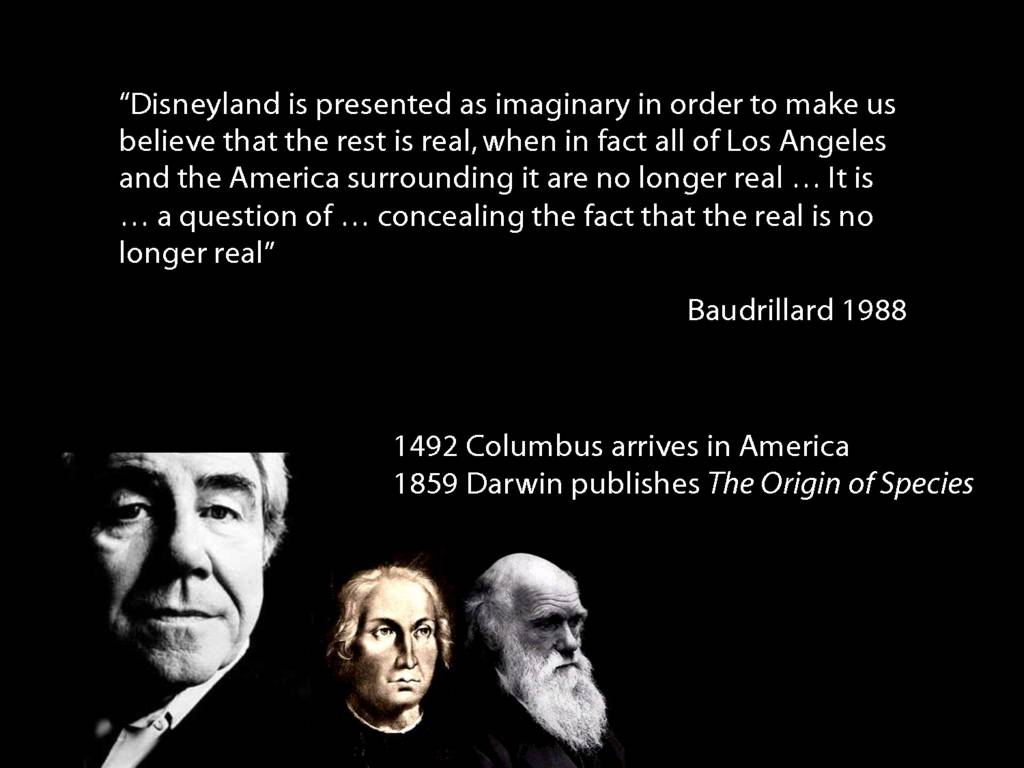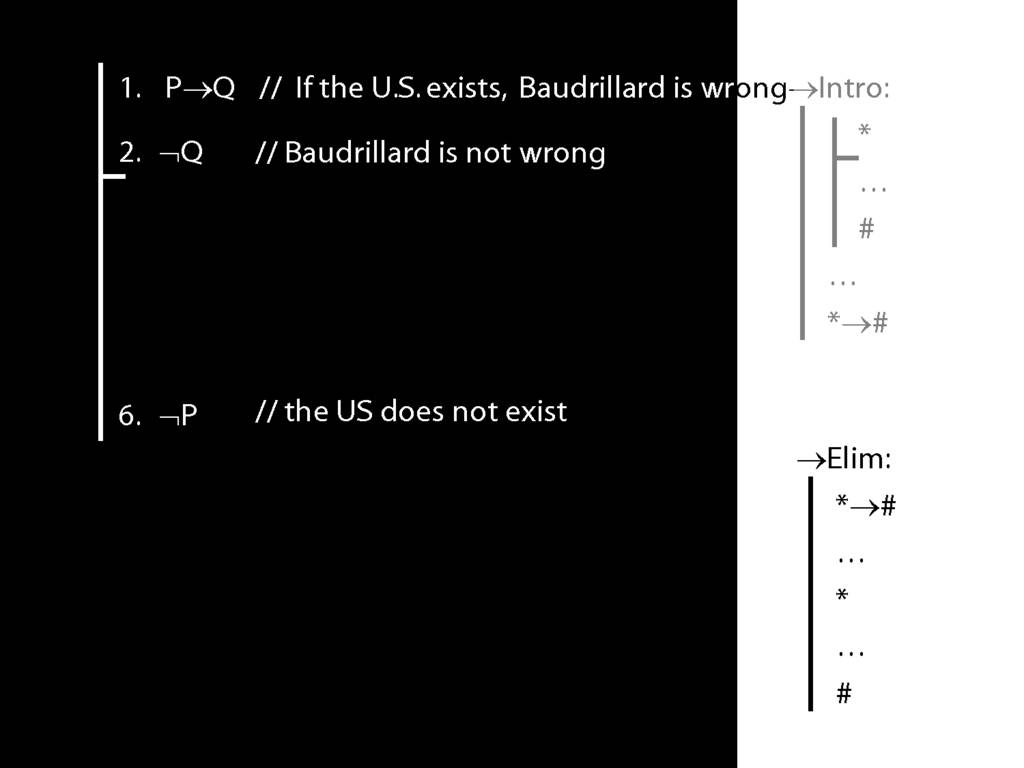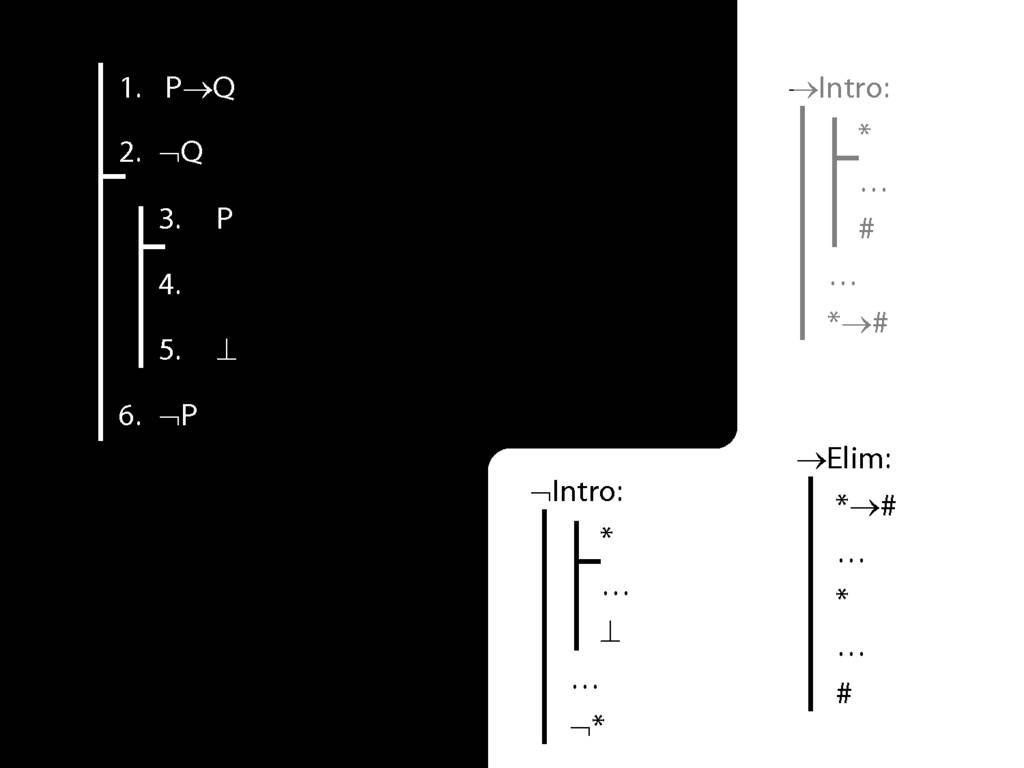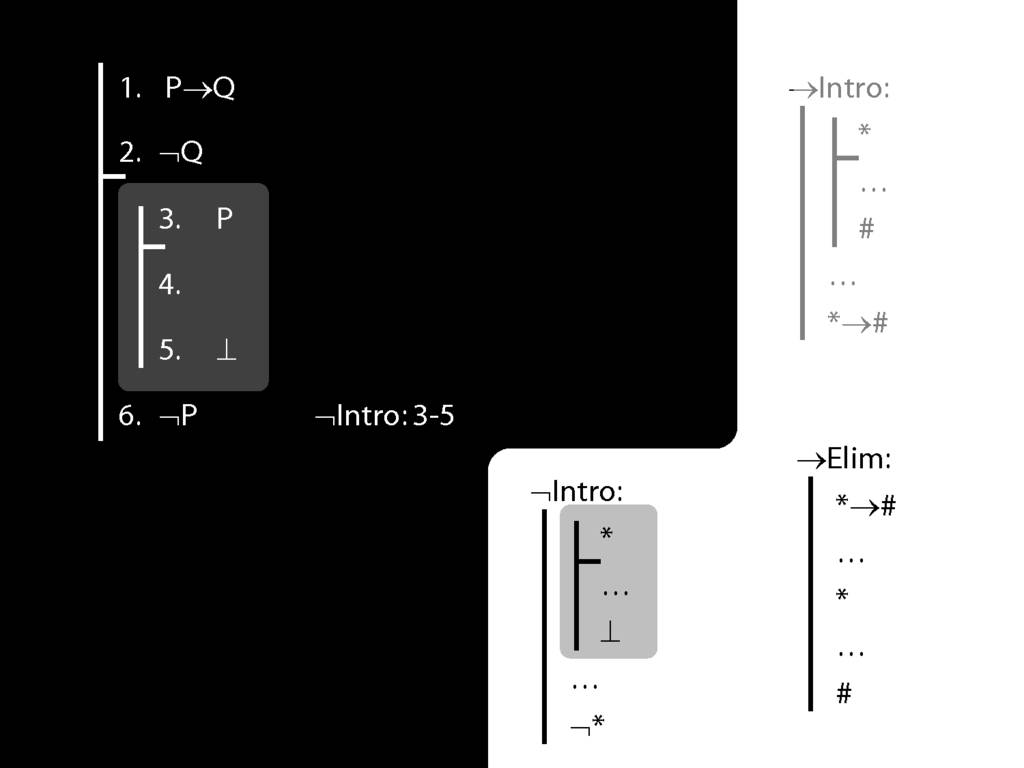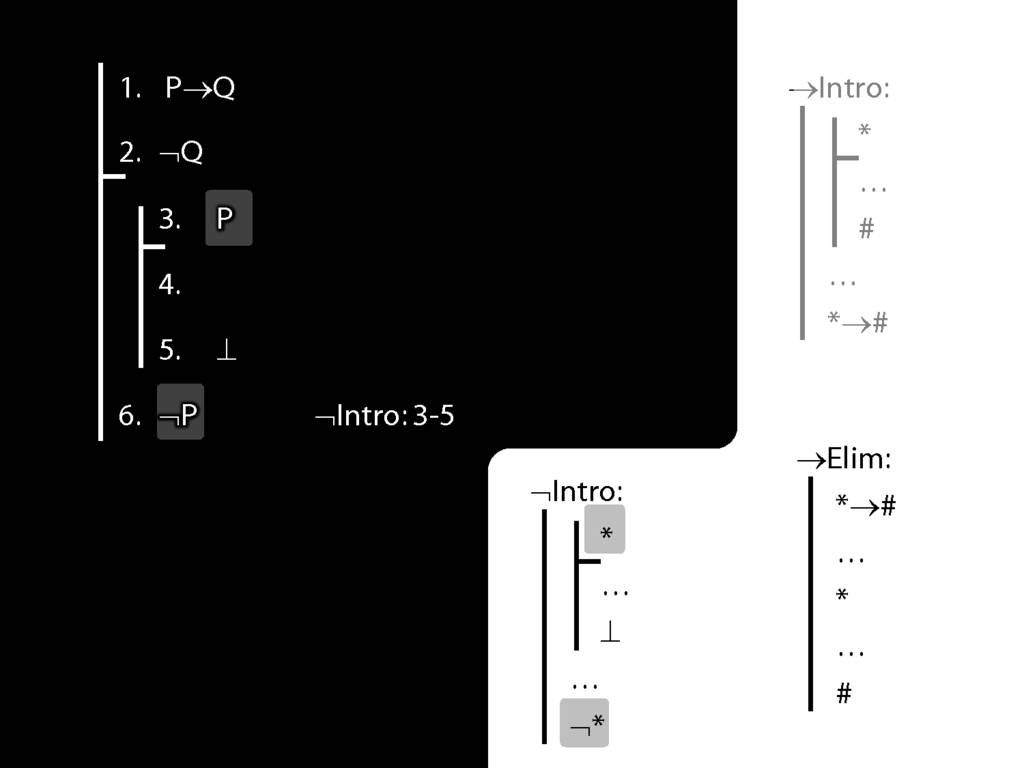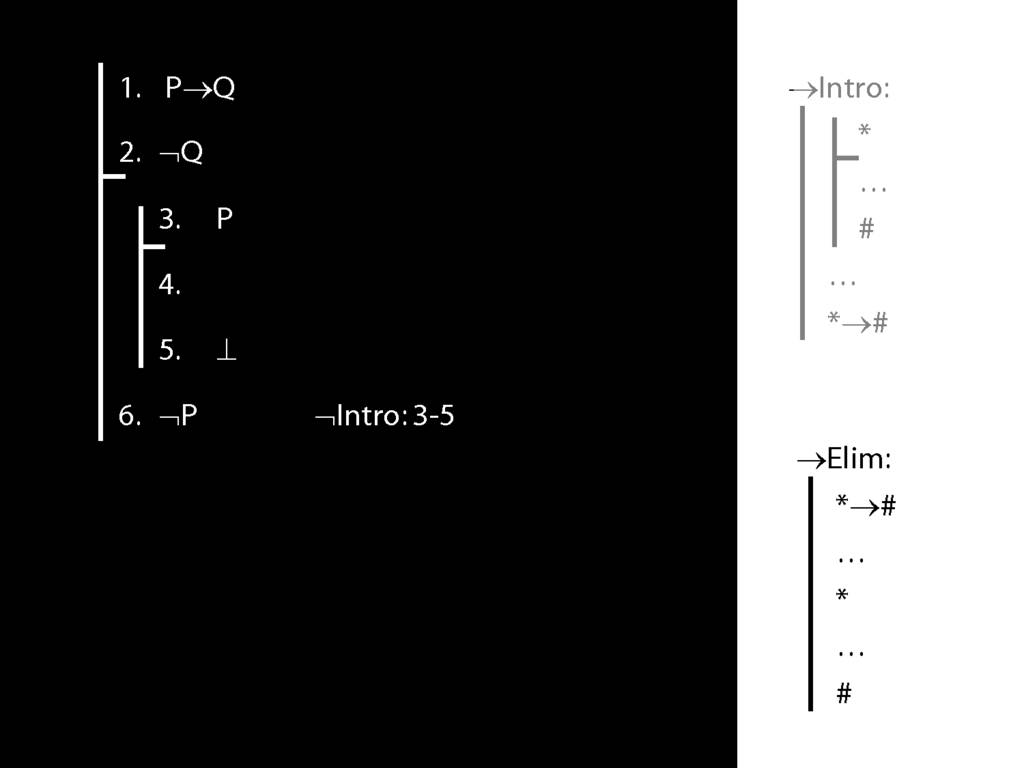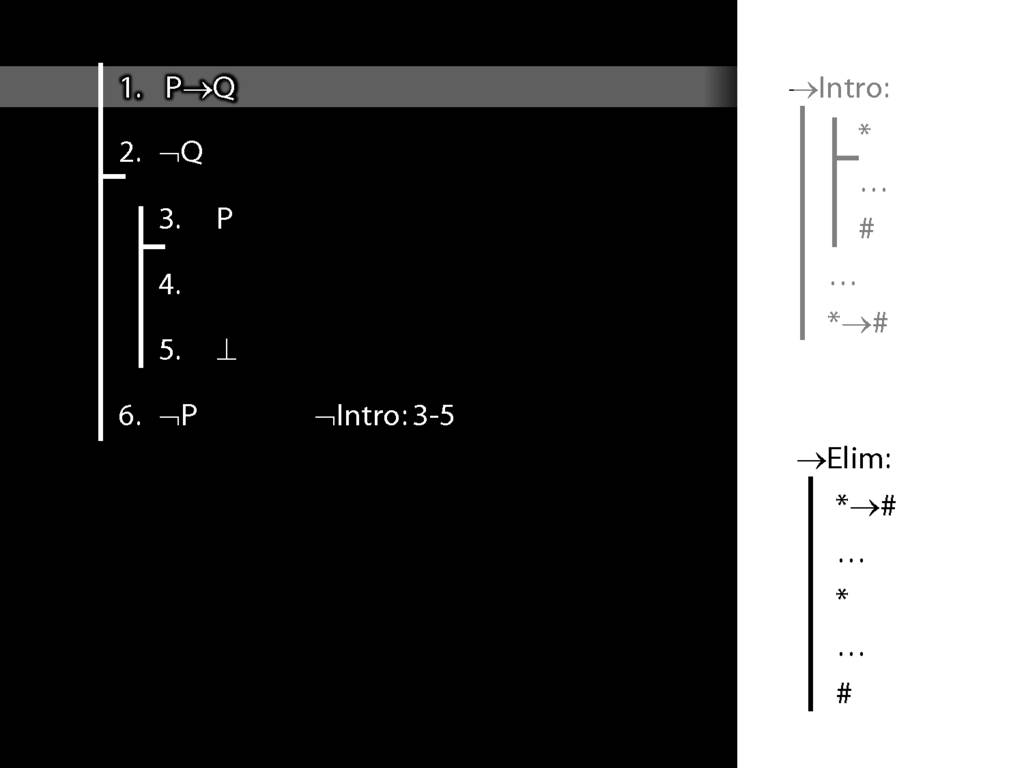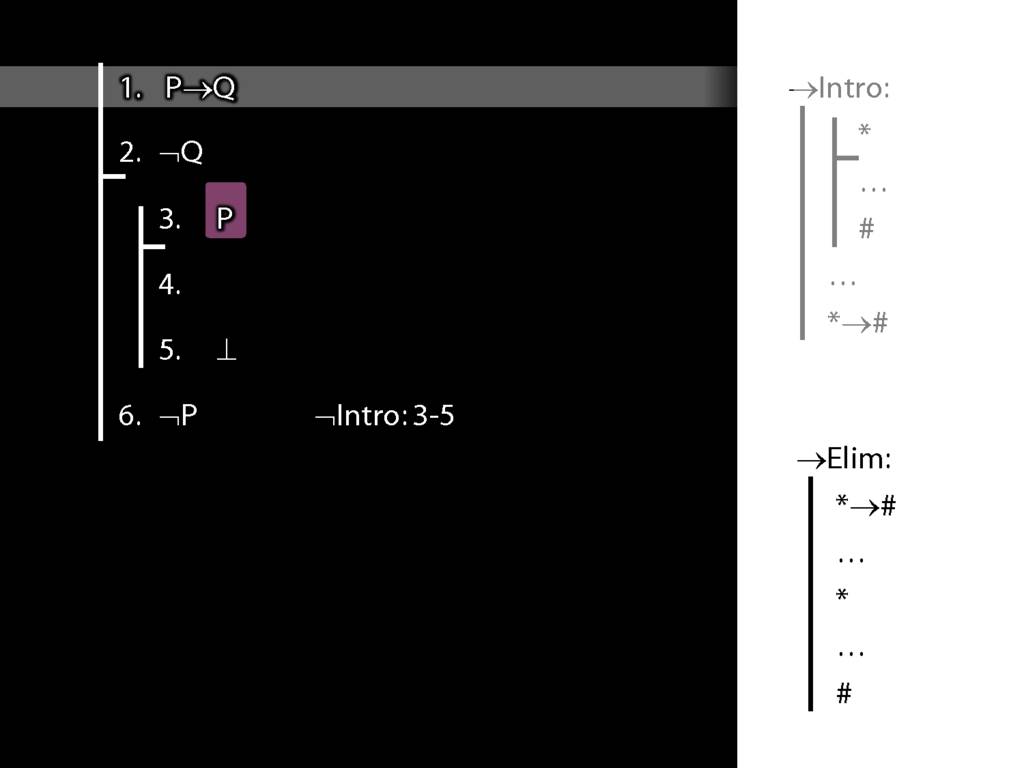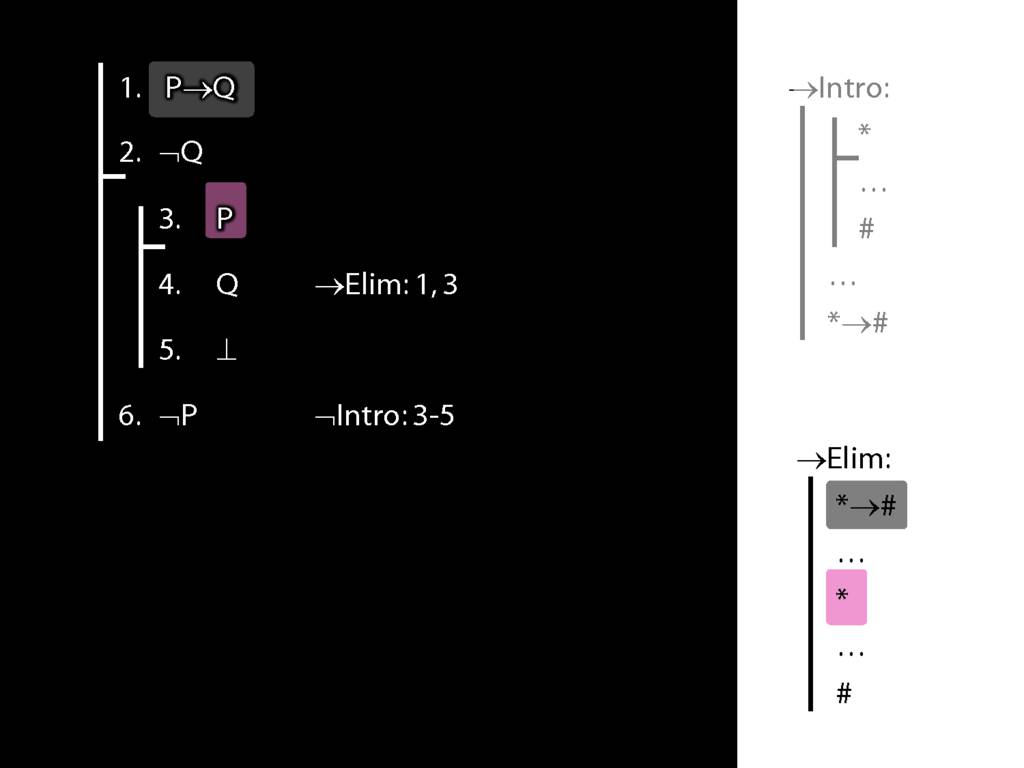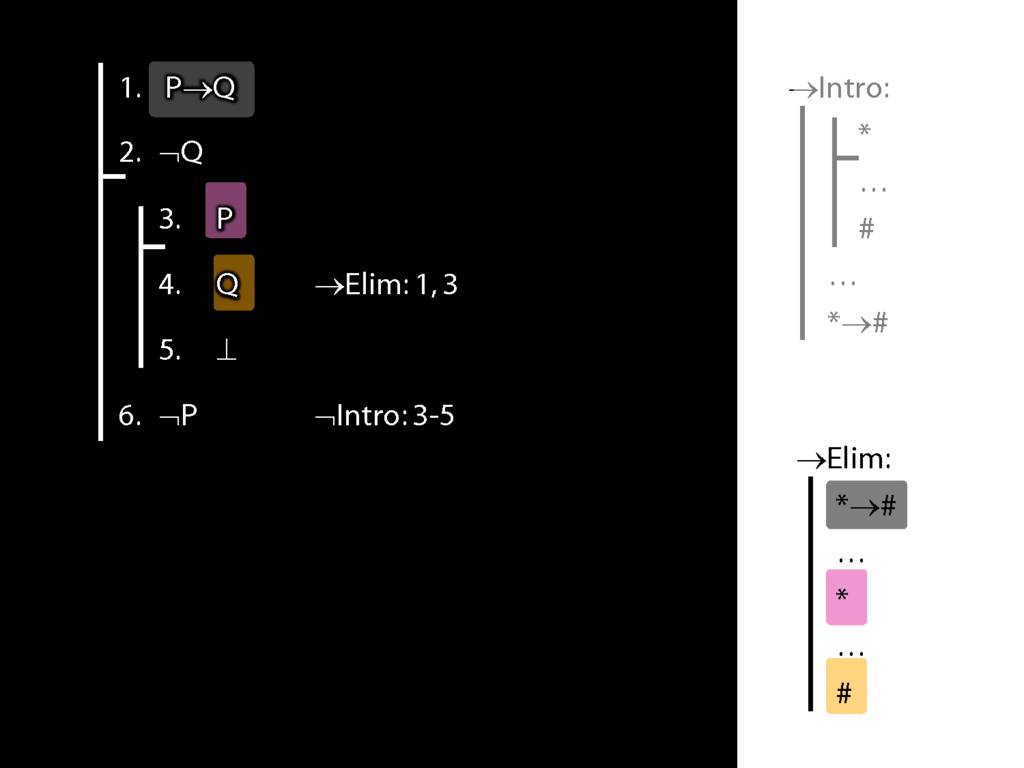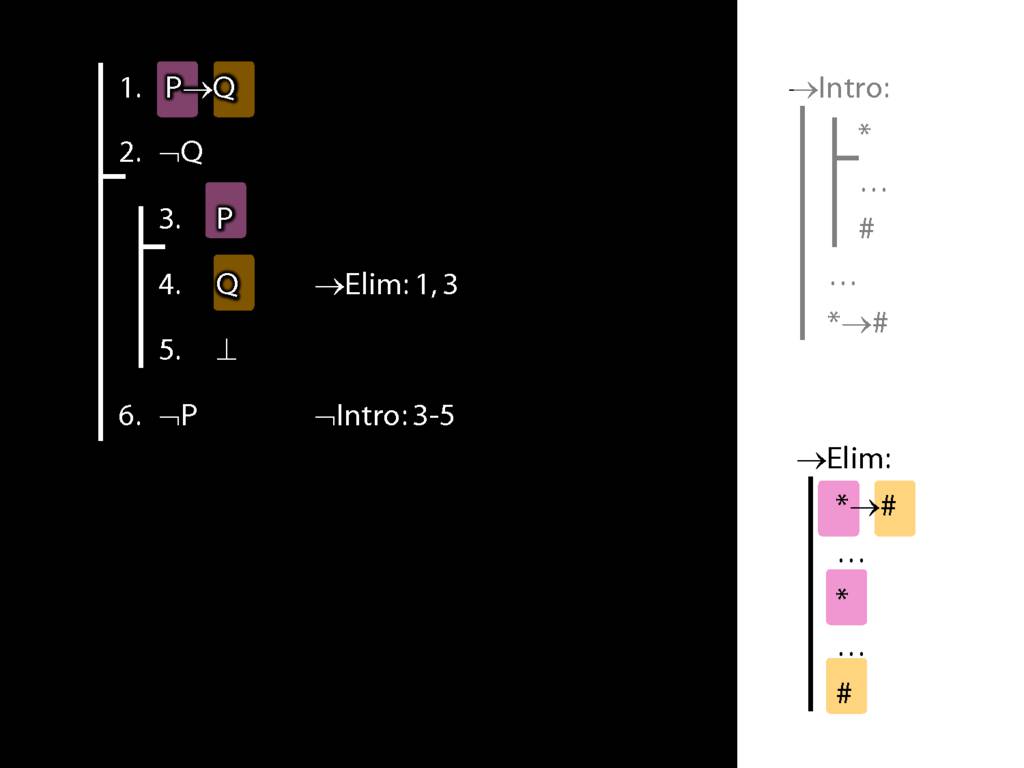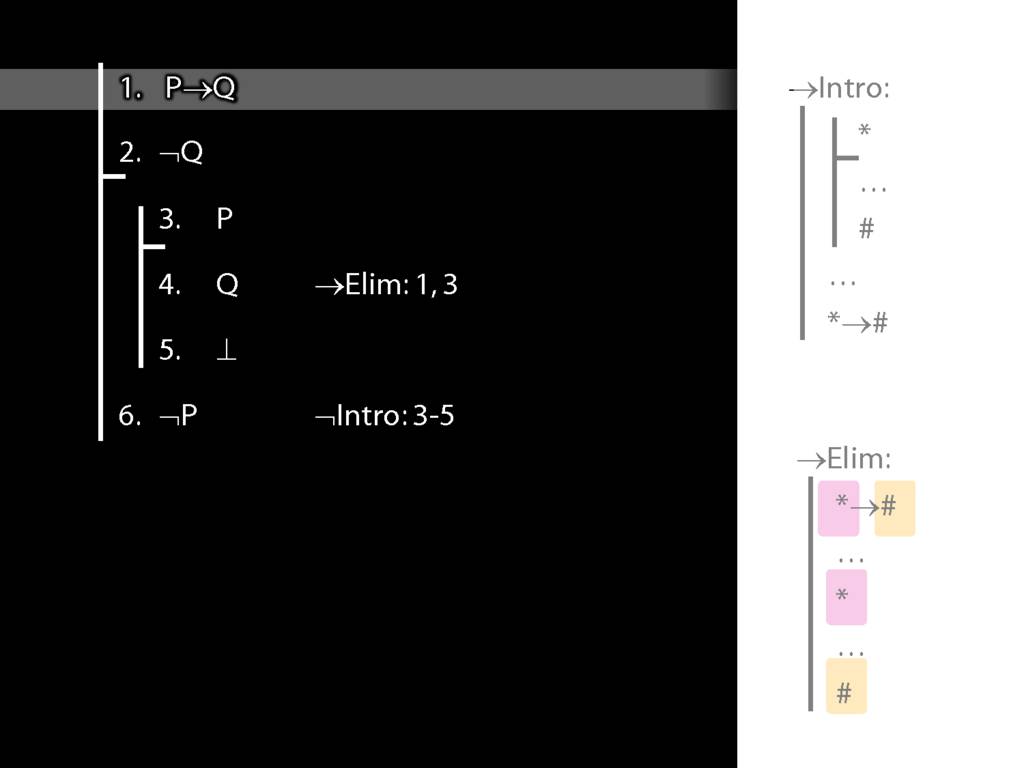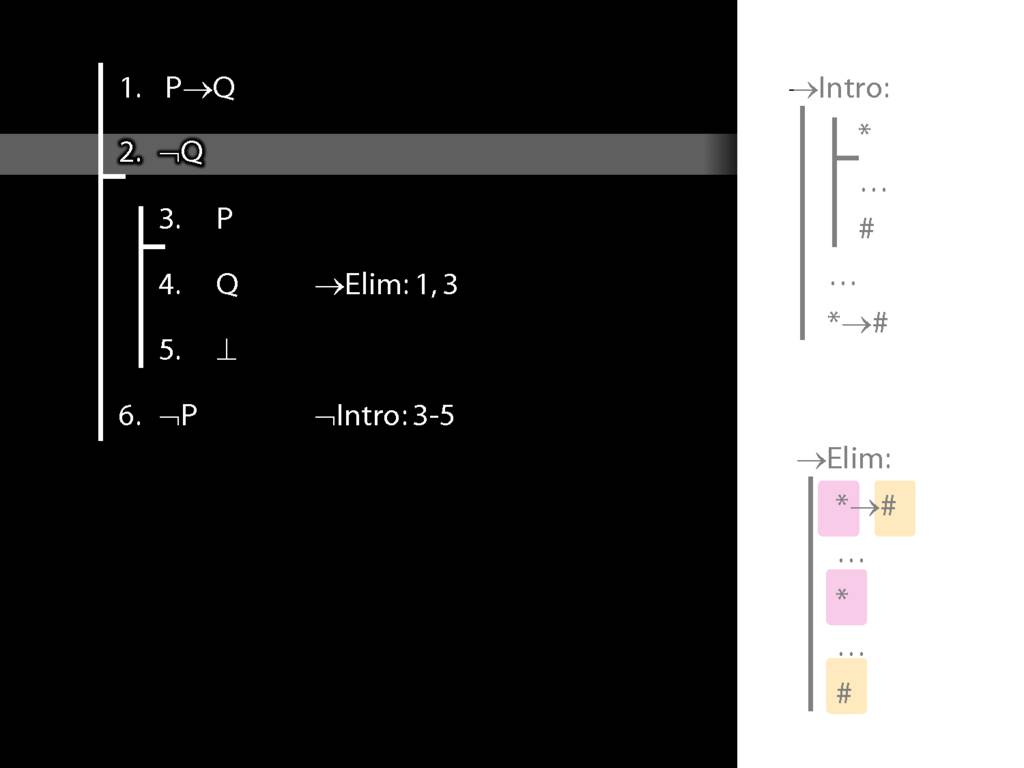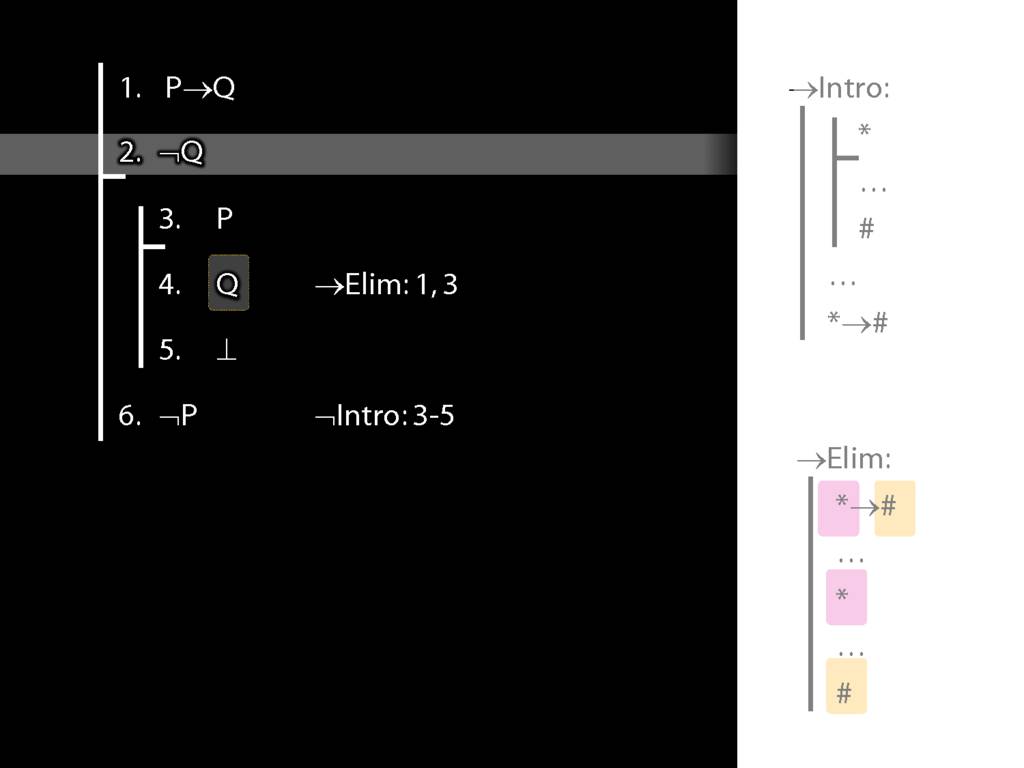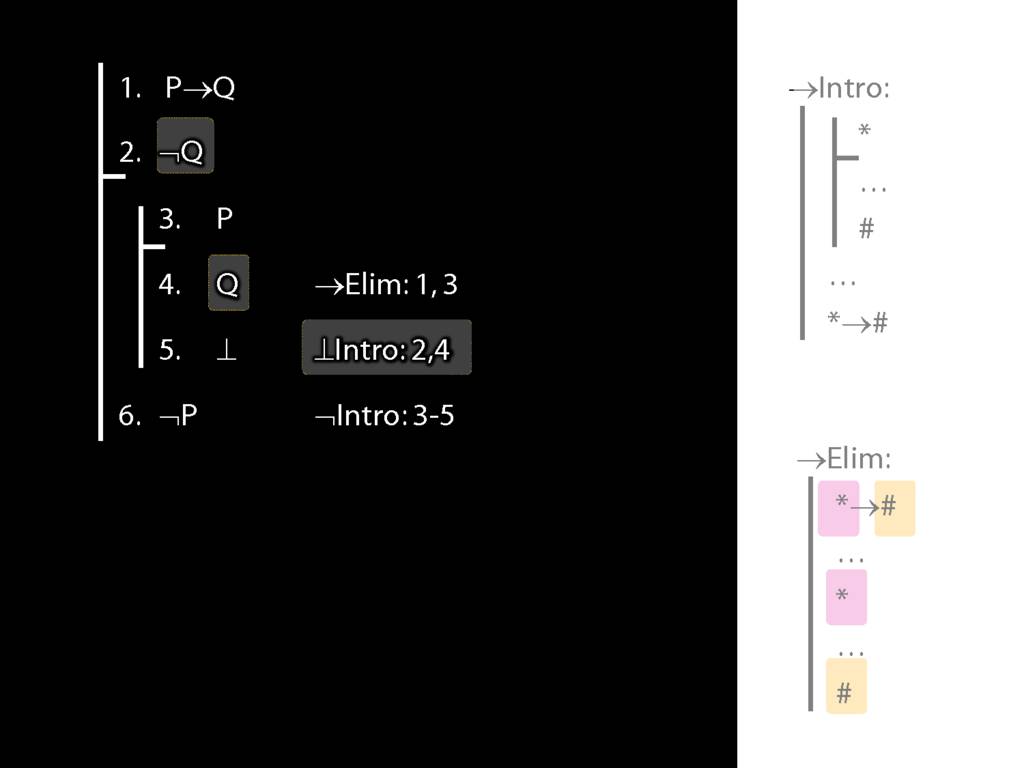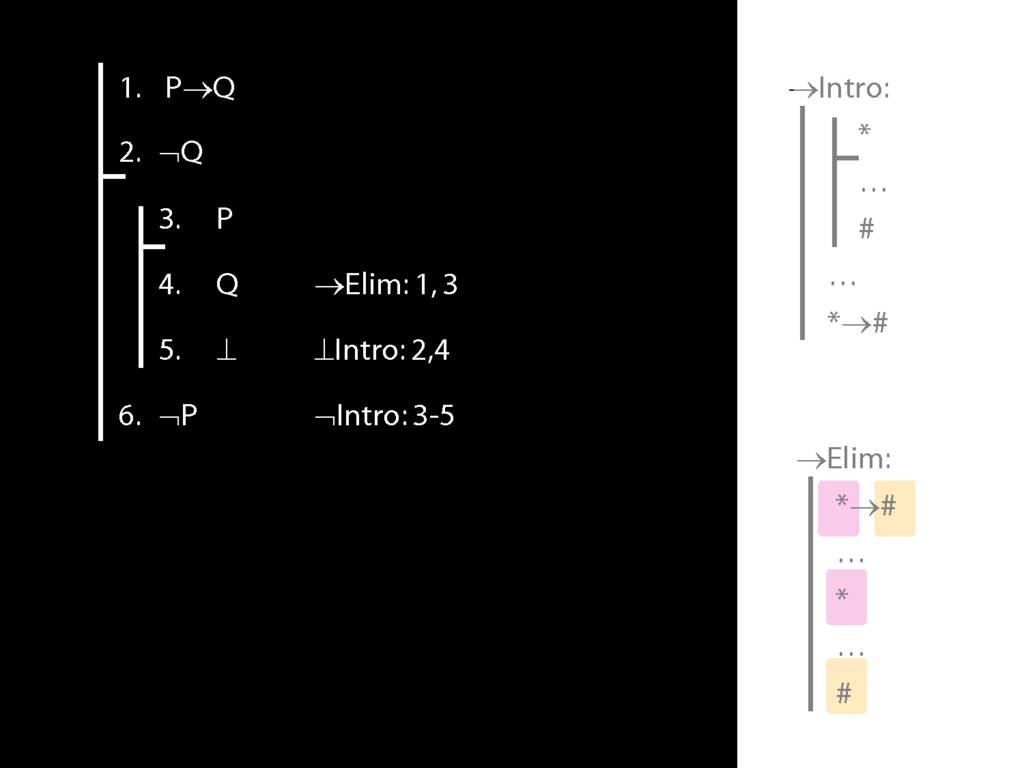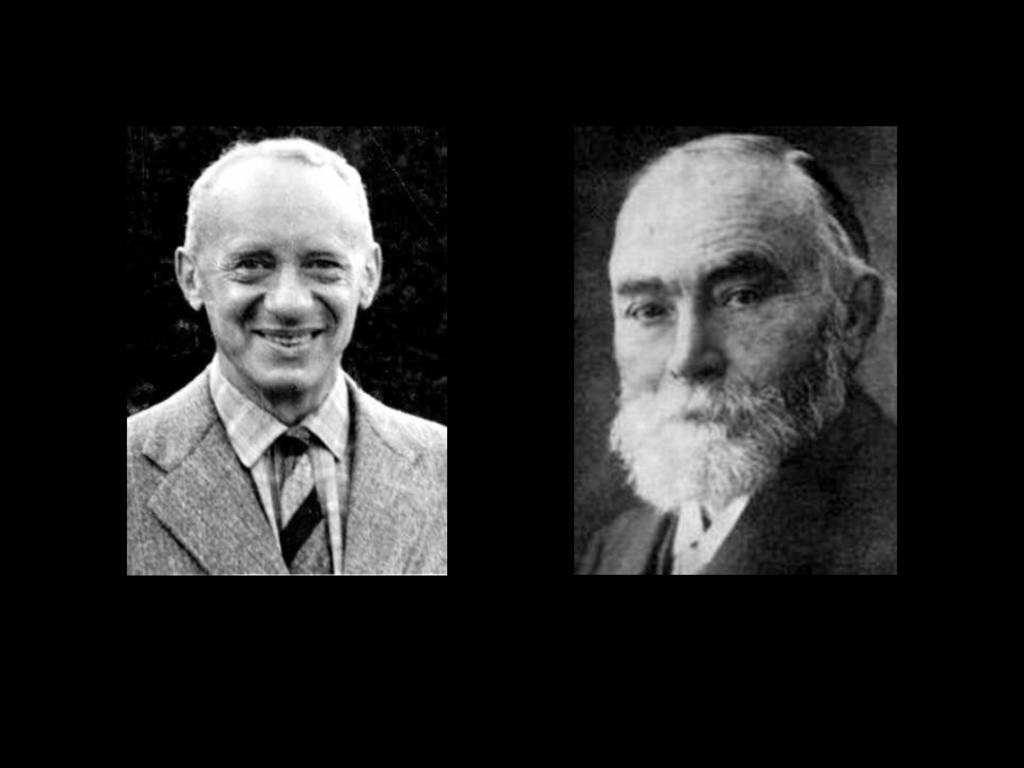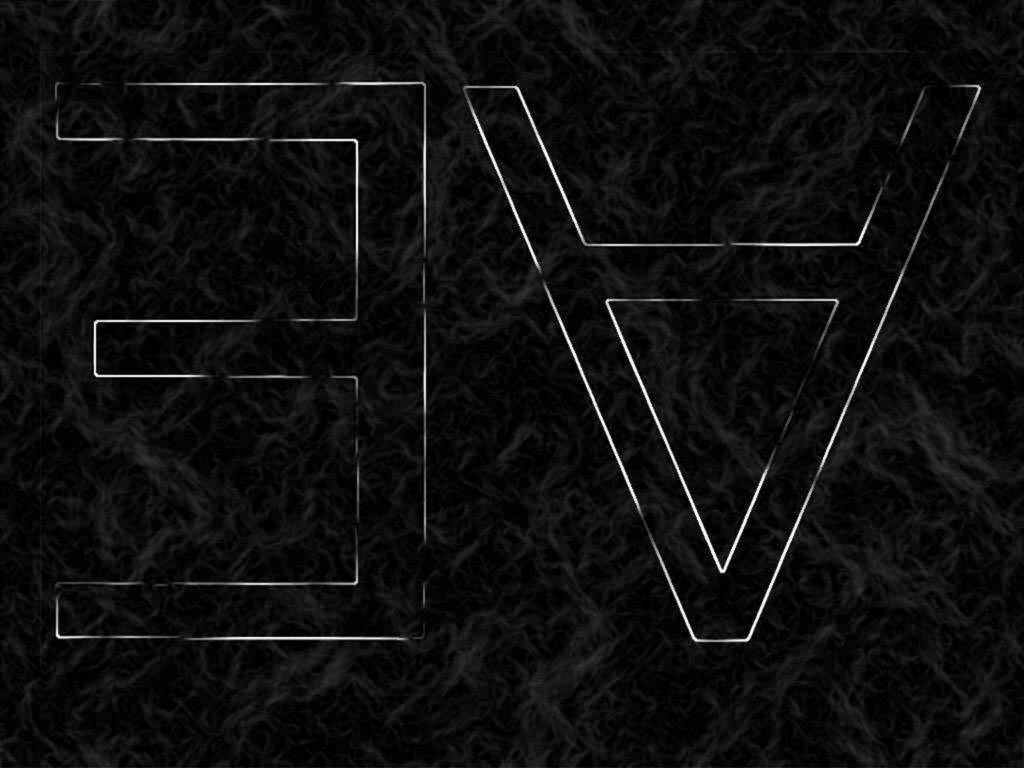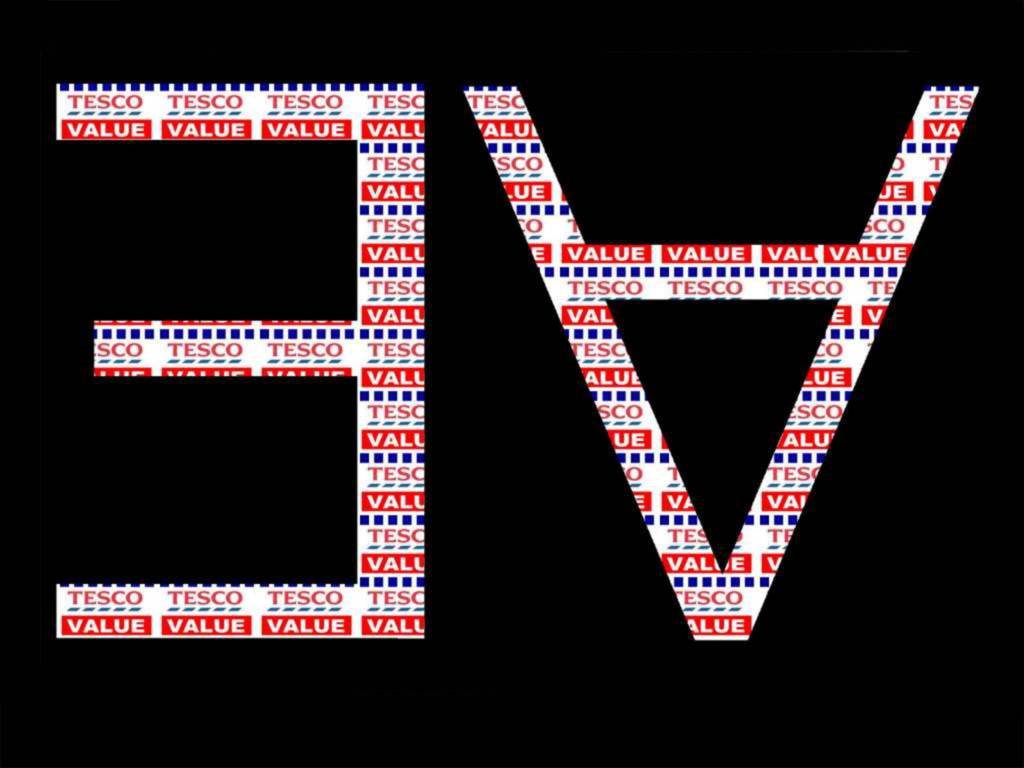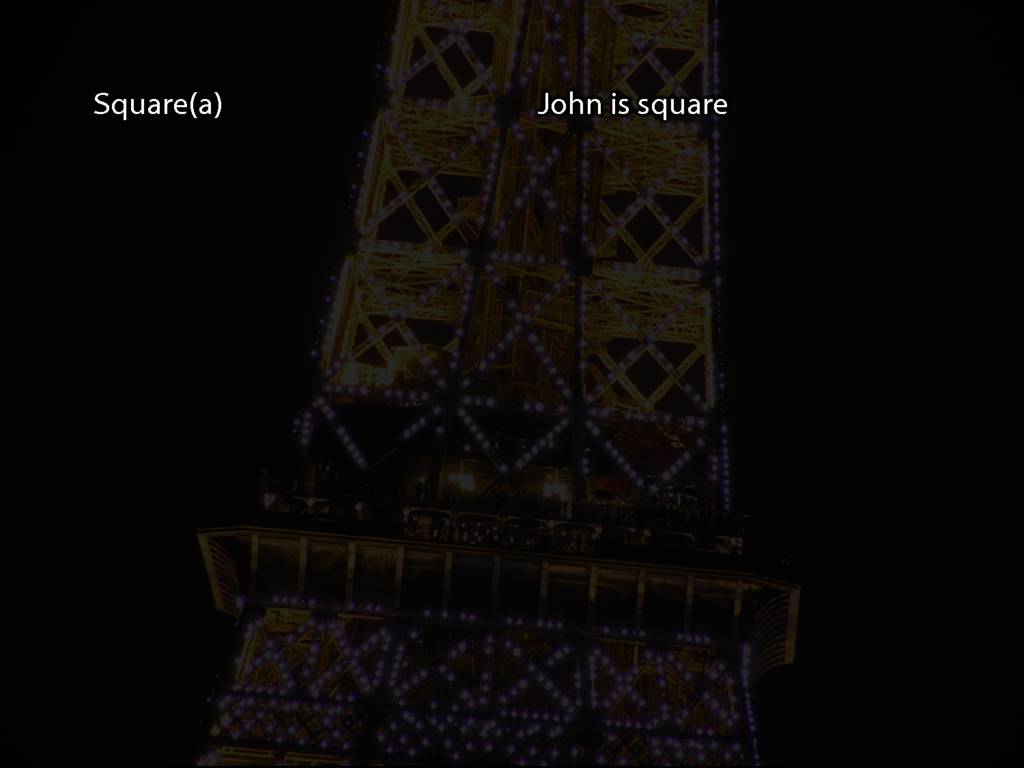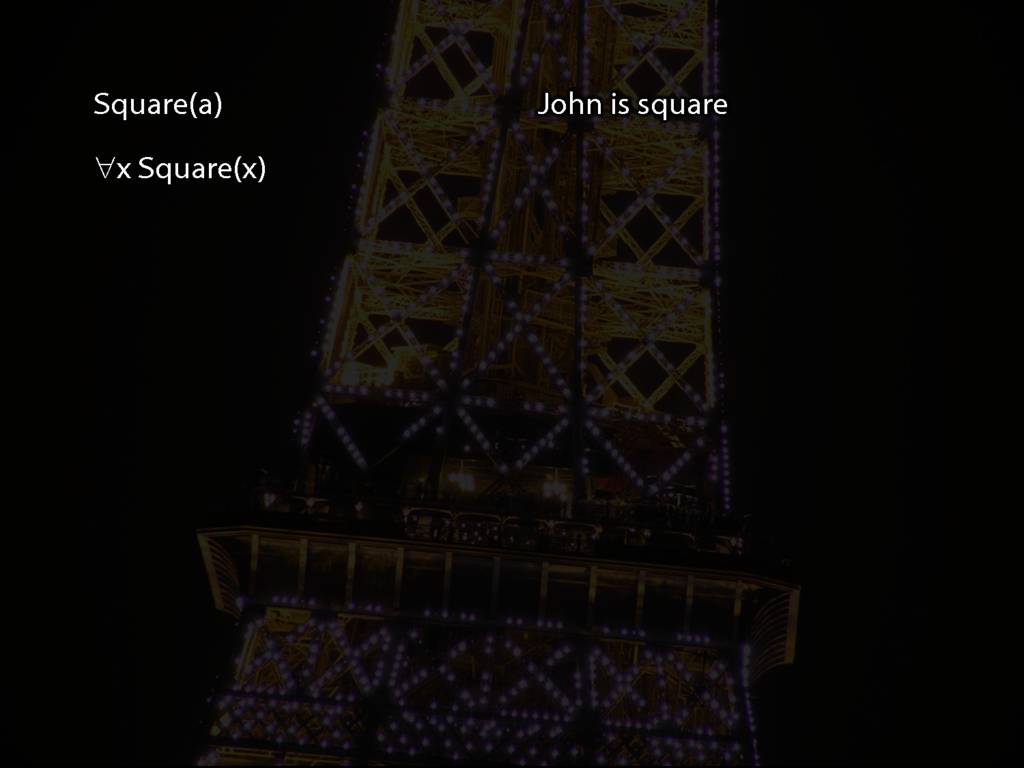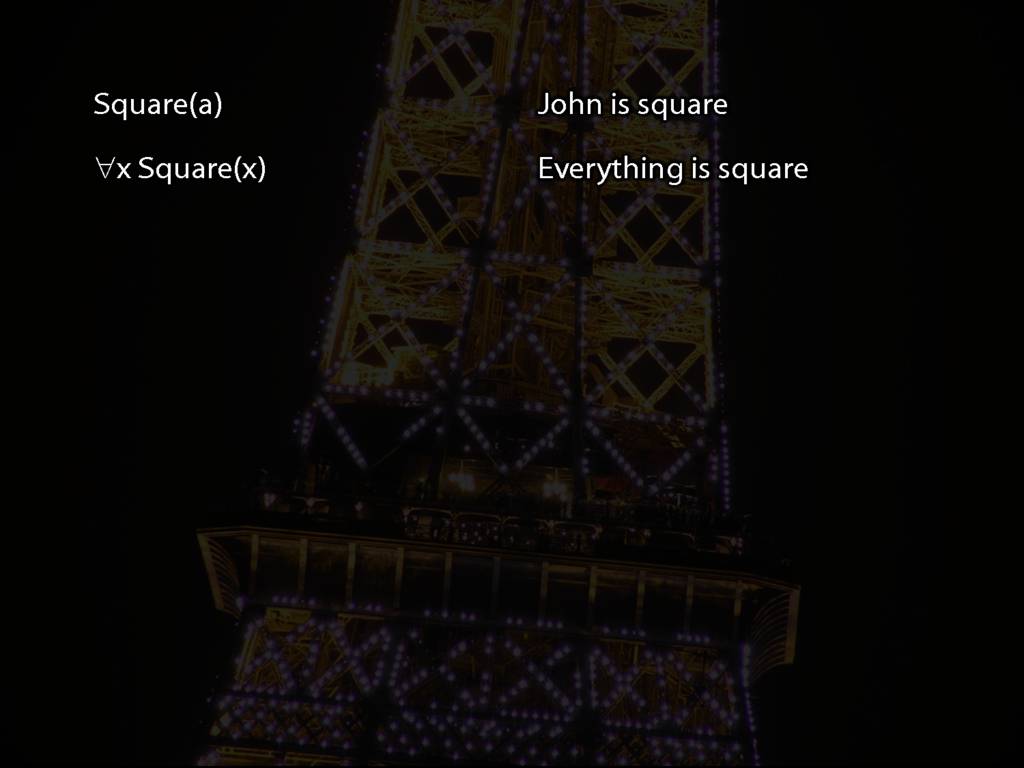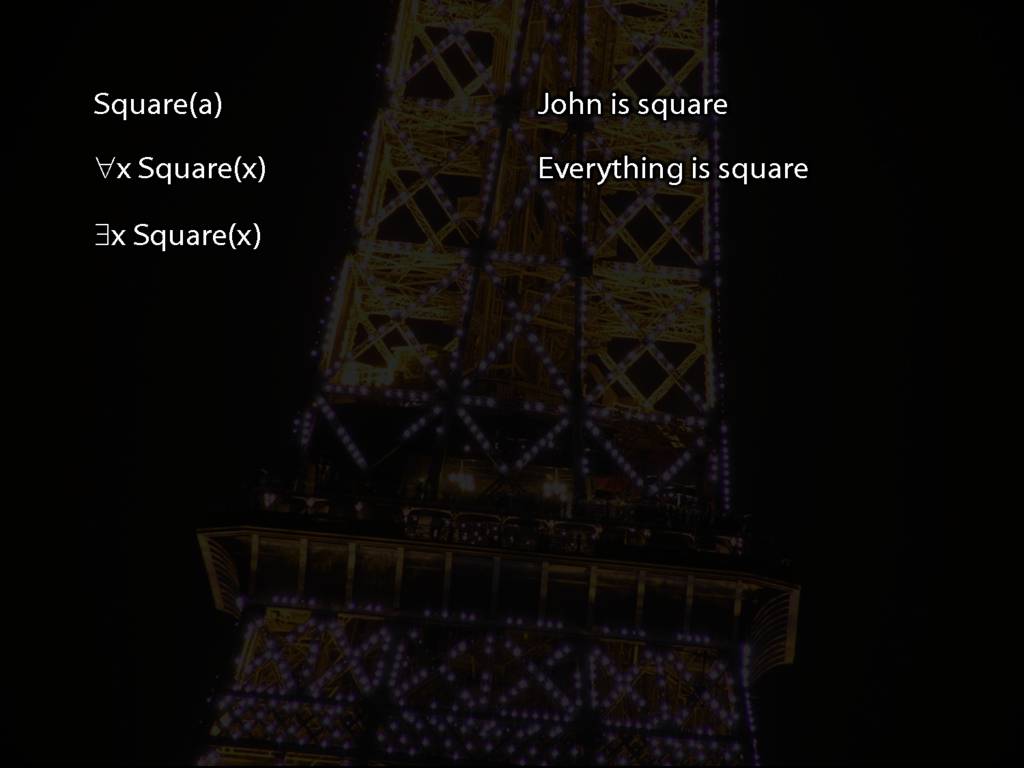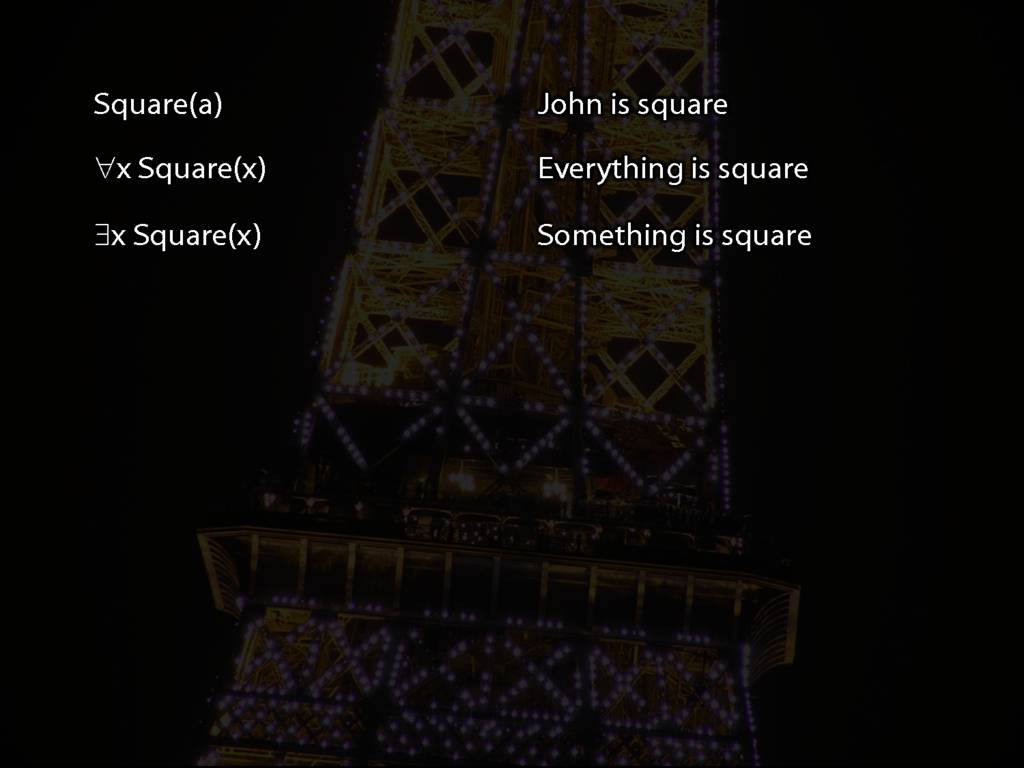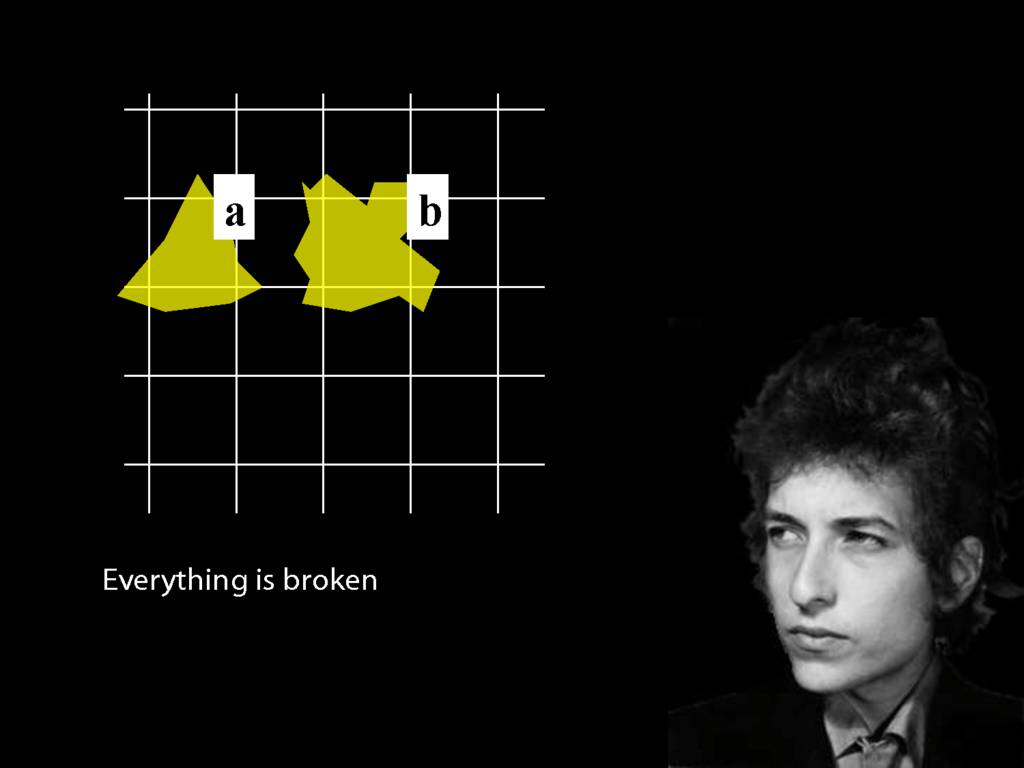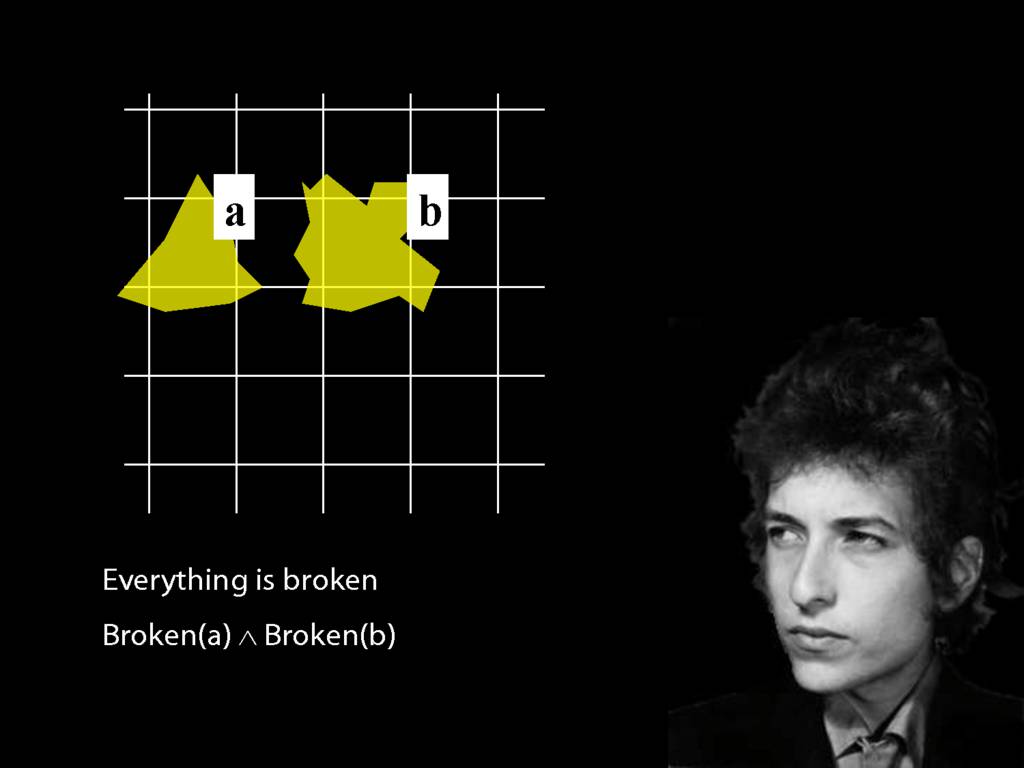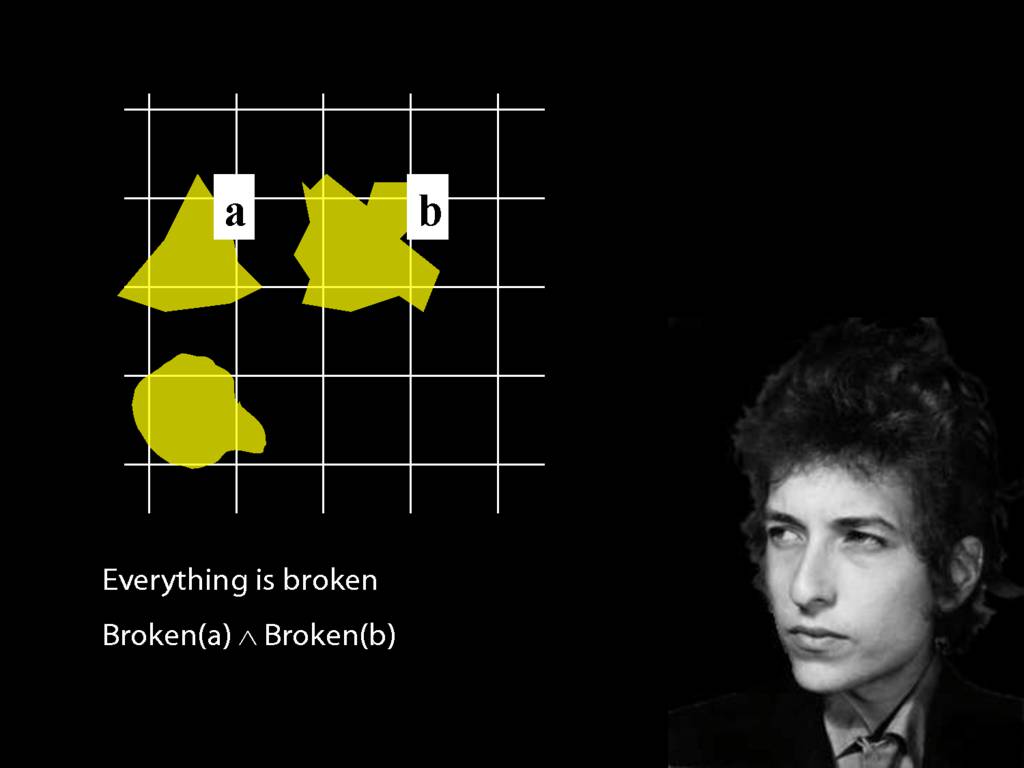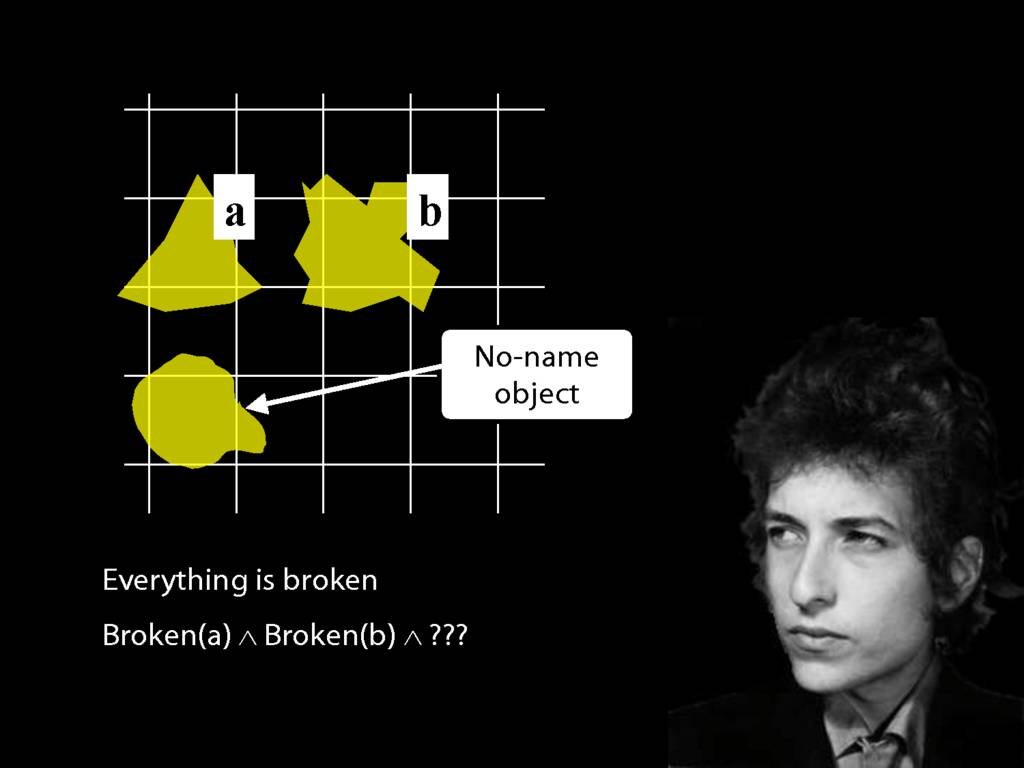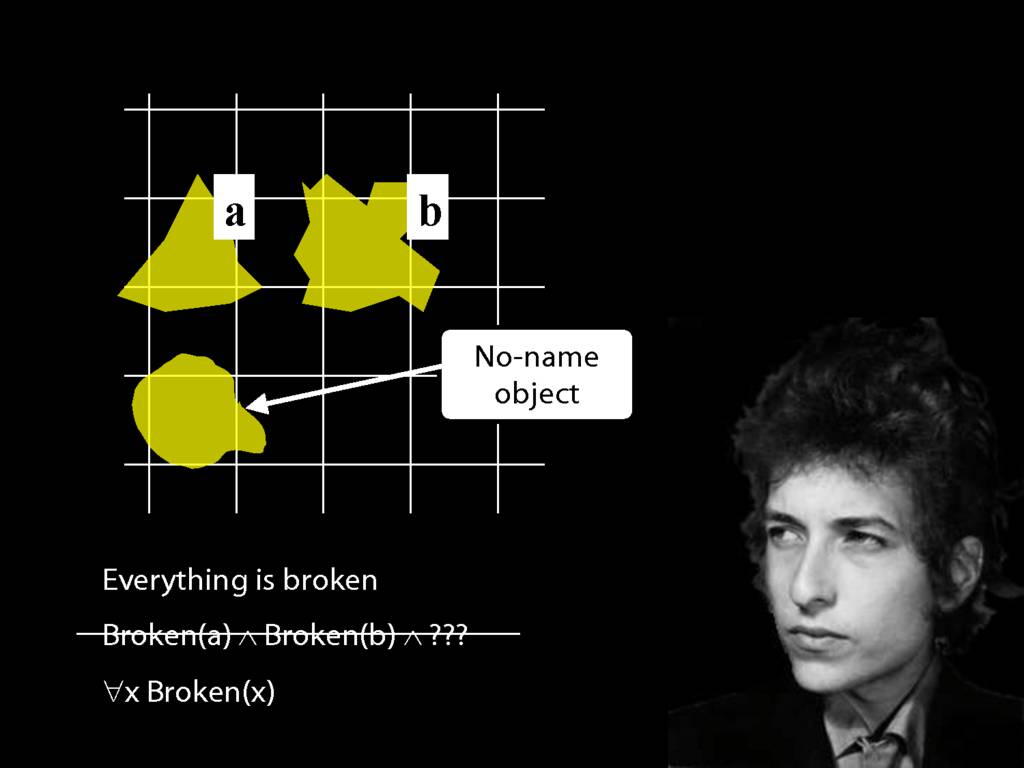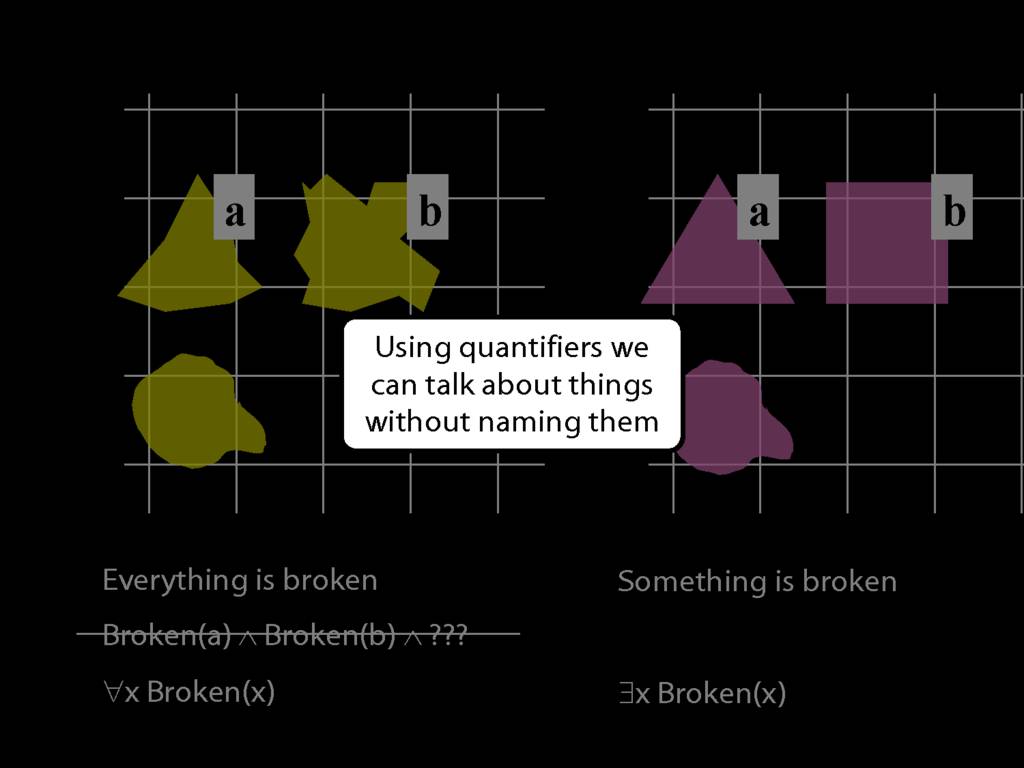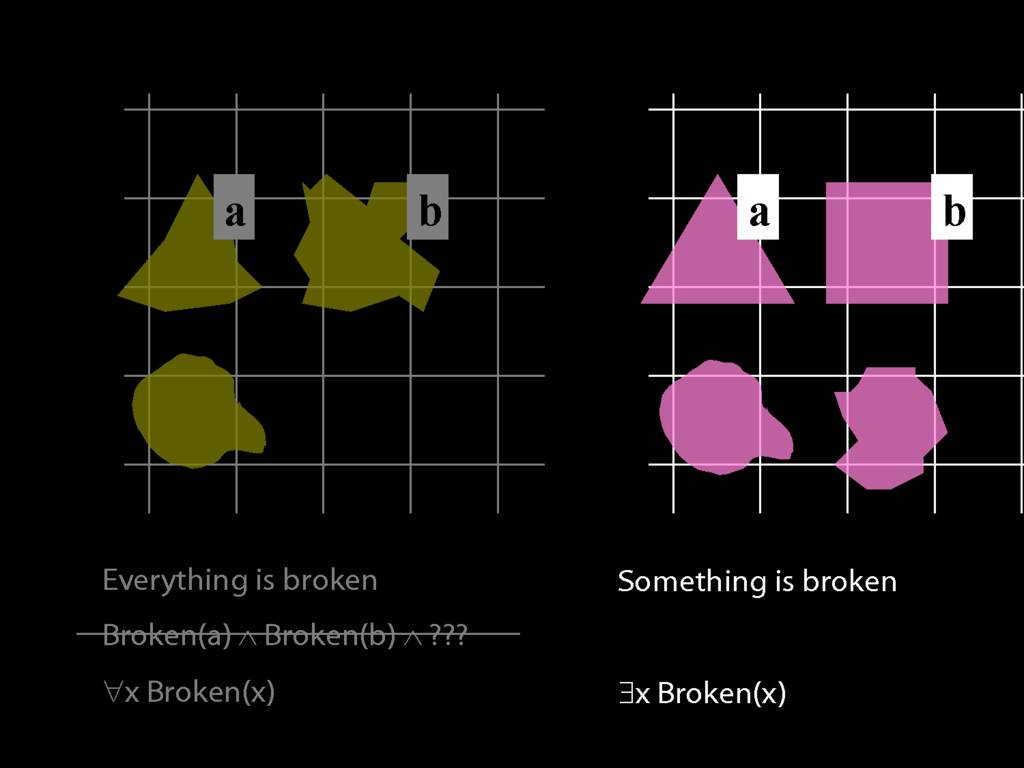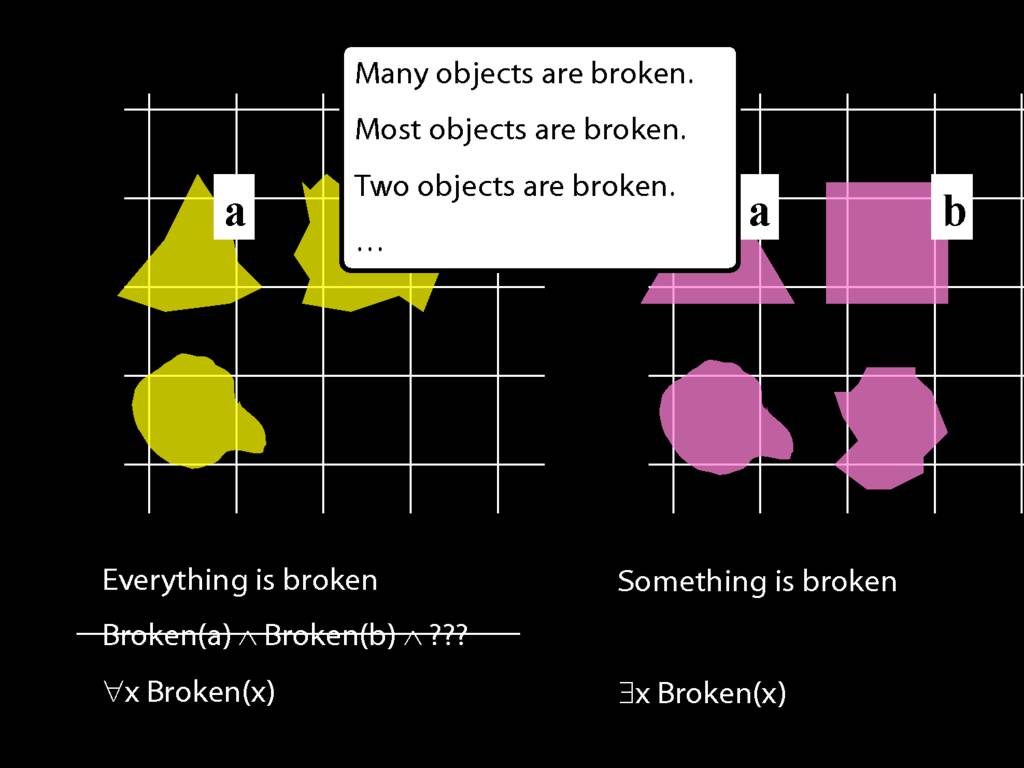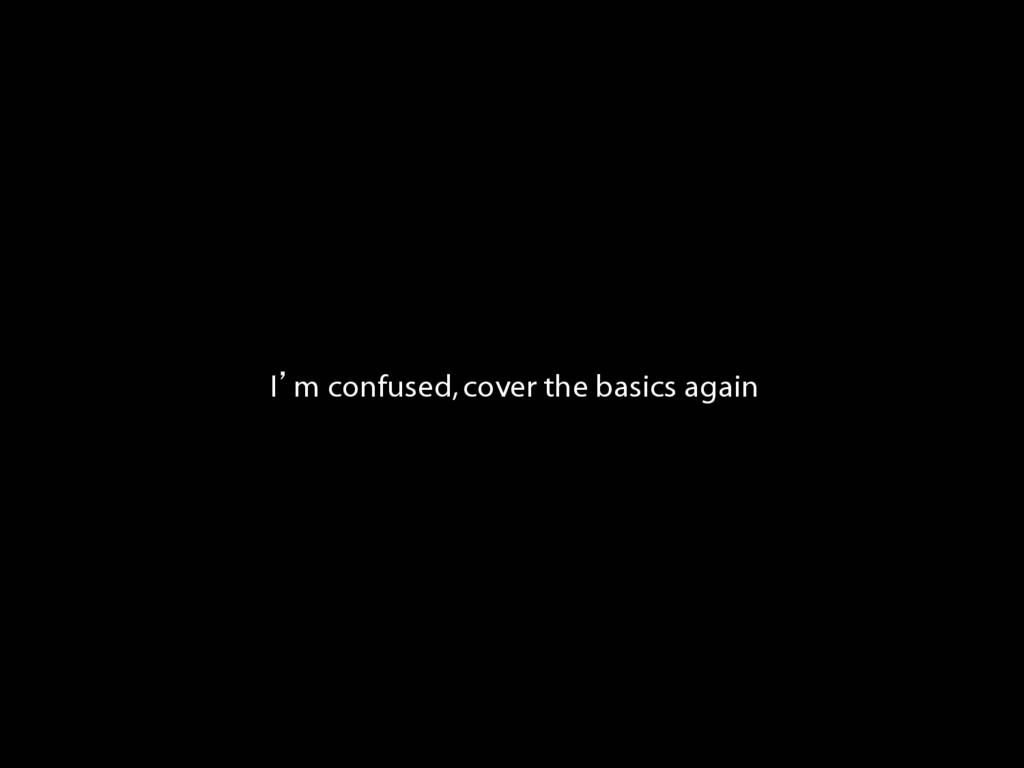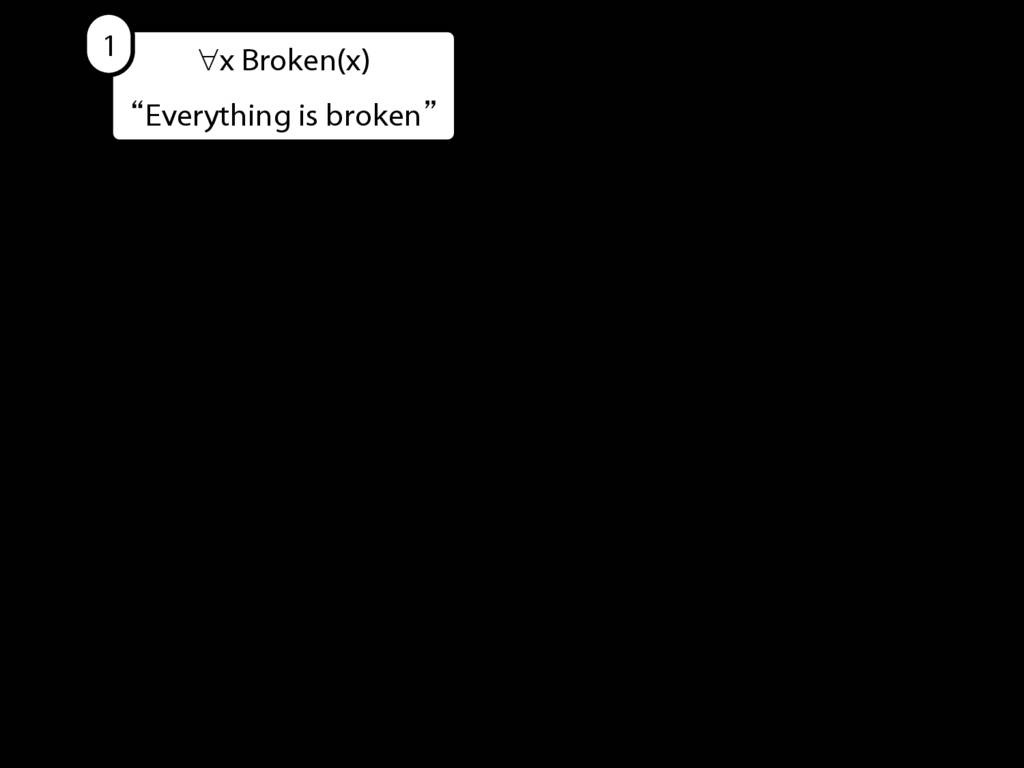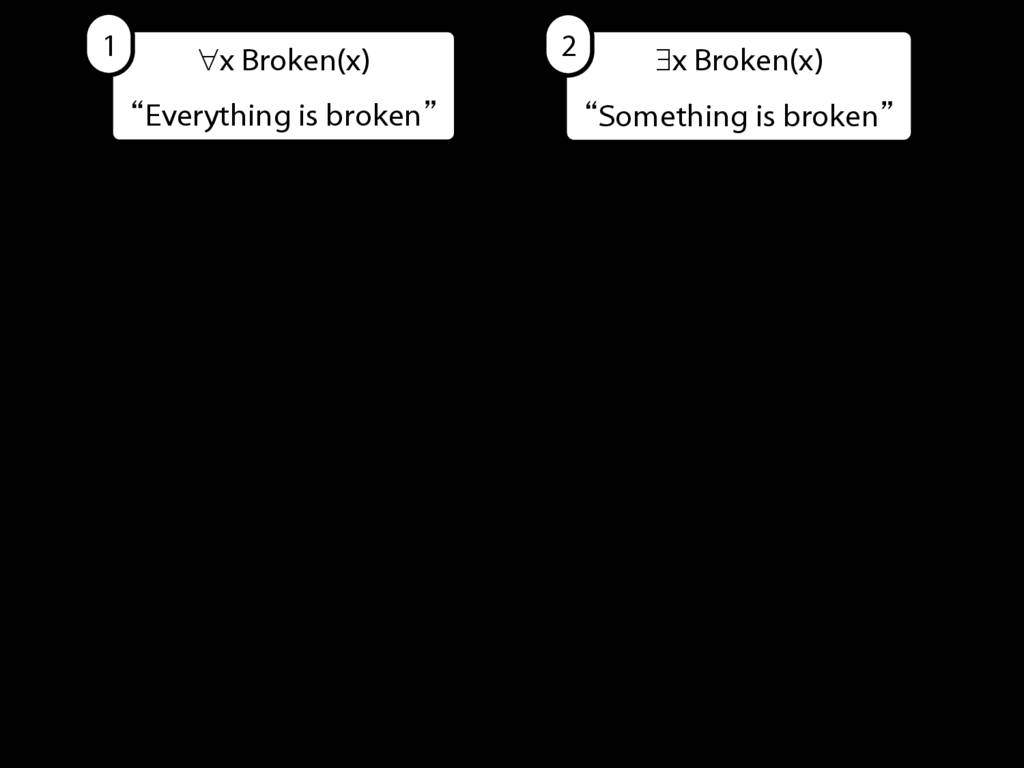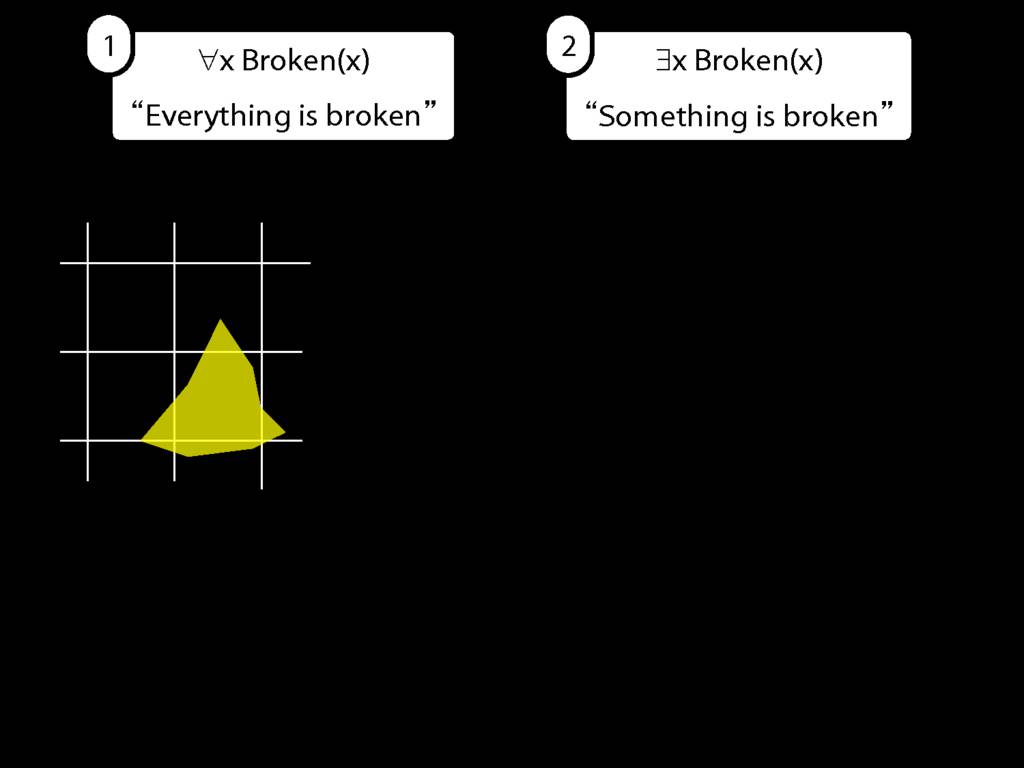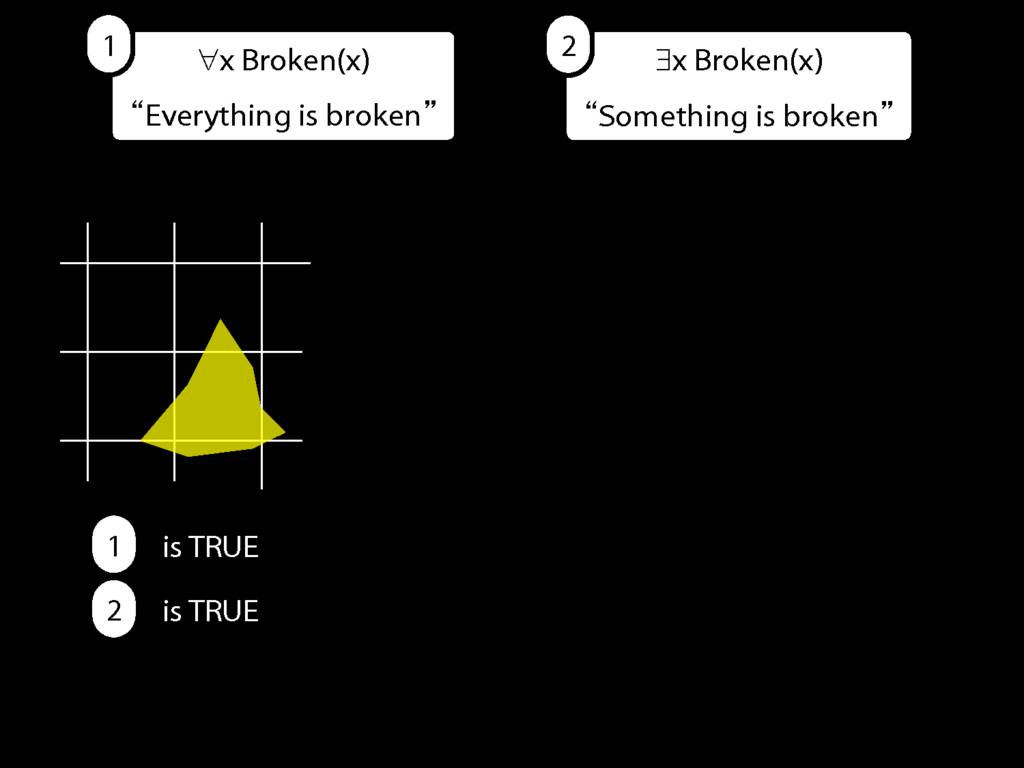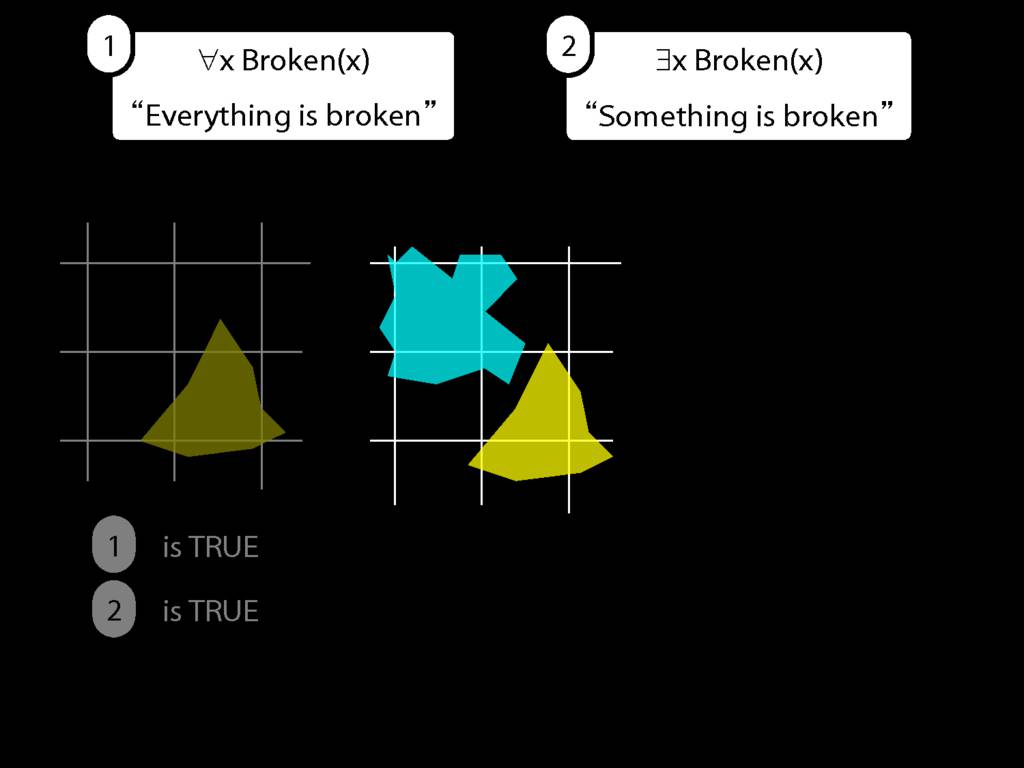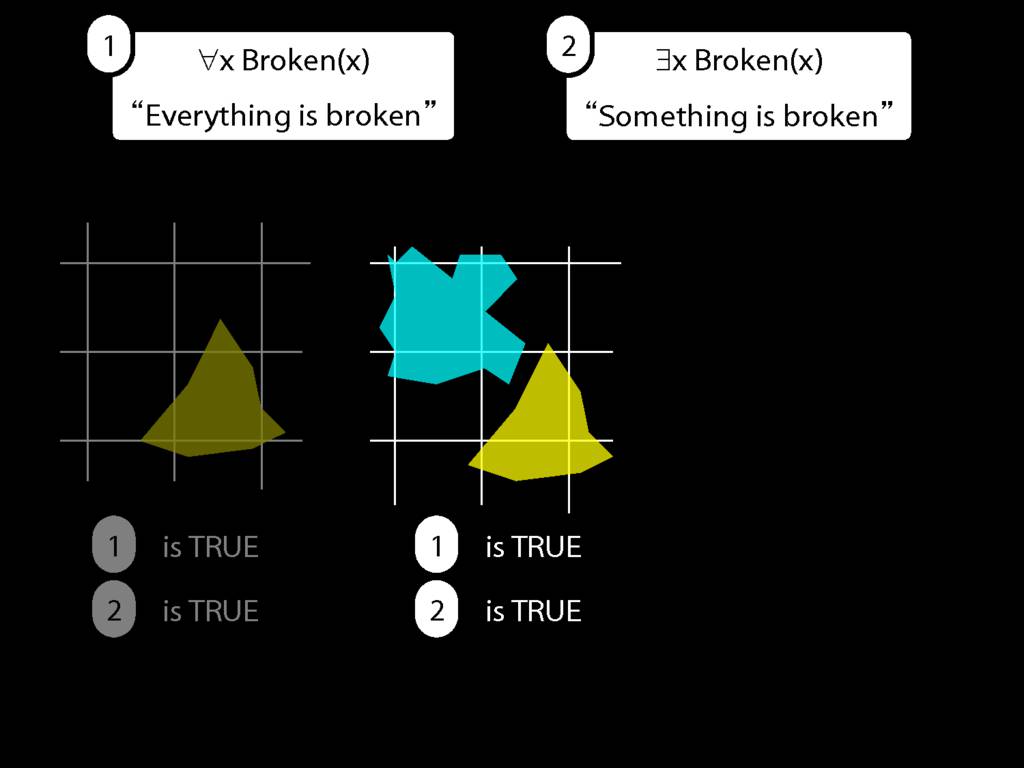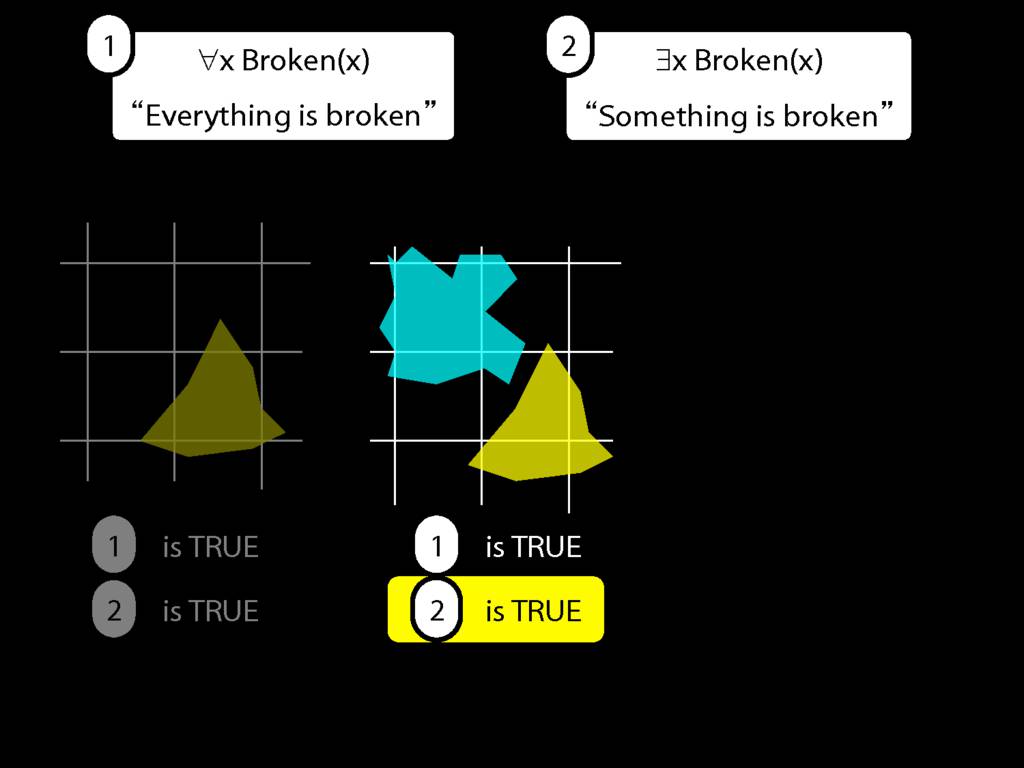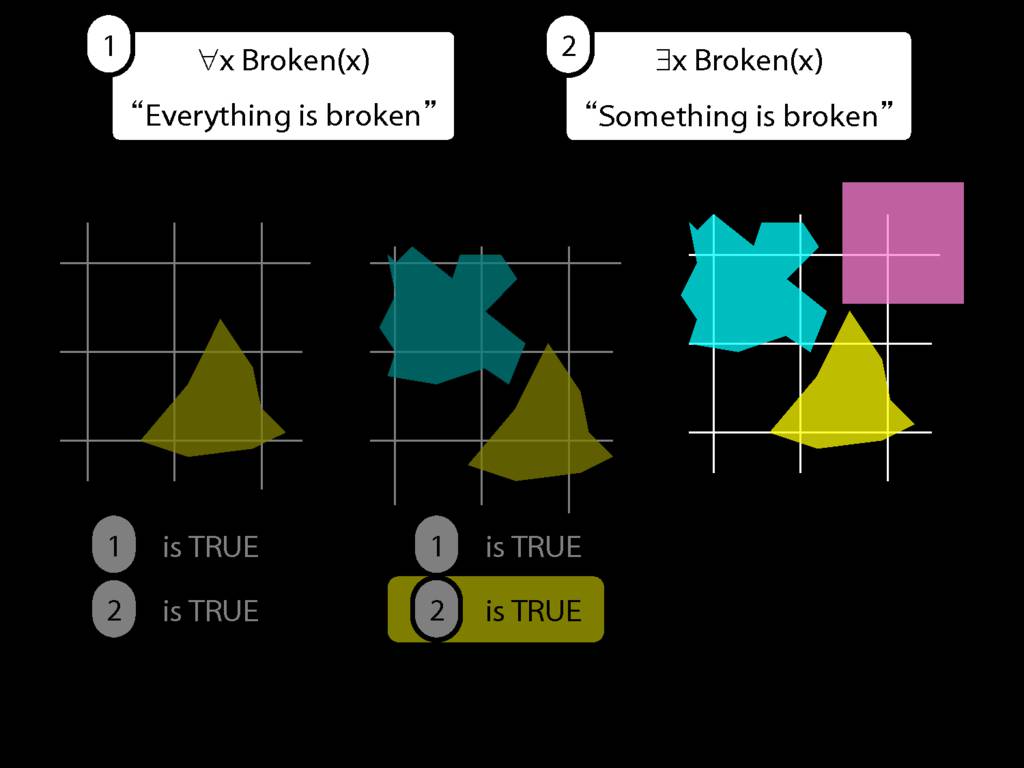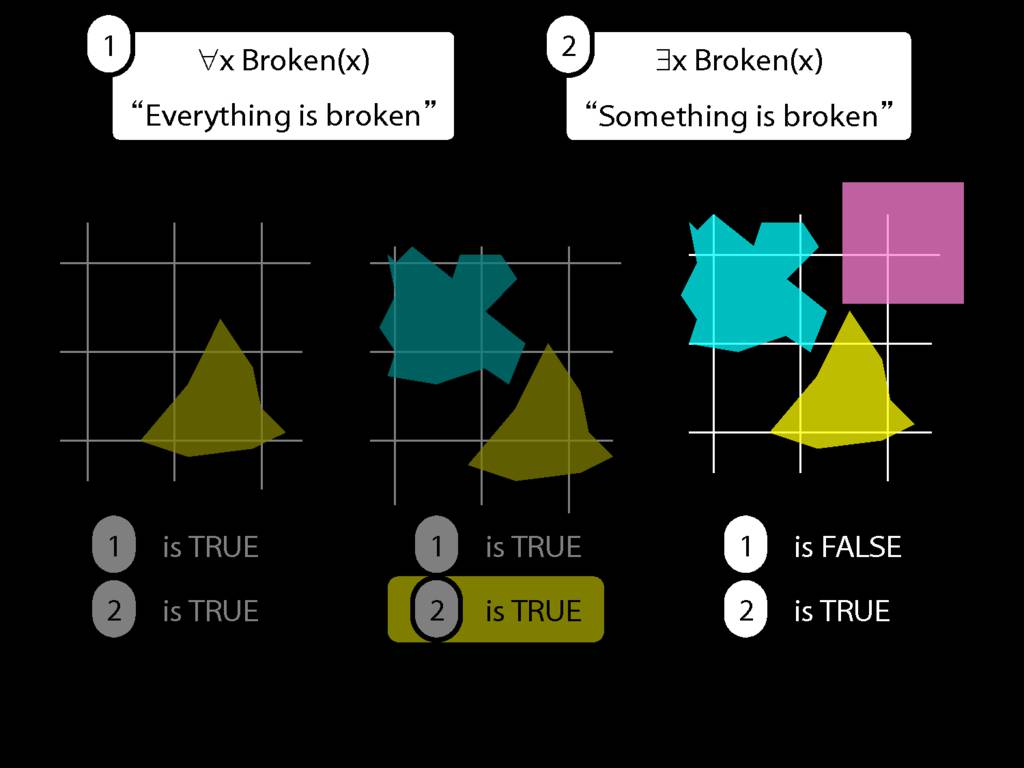Press the right key for the next slide (or swipe left)
also ...
Press the left key to go backwards (or swipe right)
Press n to toggle whether notes are shown (no equivalent if you don't have a keyboard)
Press m or double tap to see a menu of slides

\def \ititle {Logic I}
\def \isubtitle {Lecture 07}
\begin{center}
{\Large
\textbf{\ititle}: \isubtitle
}
\iemail %
\end{center}
Readings refer to sections of the course textbook, \emph{Language, Proof and Logic}.
\section{The Syntax of awFOL}
\emph{Reading:} §9.3
What do the brackets mean?
We define what counts as a sentence of awFOL using rules. E.g.:
1. If * and \# are sentences, then so is(* ∧ \#)
2. If * and \# are sentences, then so is (* ∨ \#)
3. P, Q, R, … are sentences
4. If * is a sentence, then ¬* is a sentence
So:
a. P is a sentence // rule 3
b. ¬P is a sentence // rule 4, a
c. ( ¬P ∧ Q ) is a sentence // rule 1, b, a
There is no structural ambiguity in awFOL because these rules are formulated to ensure that for any awFOL sentence, there is exactly one way of constructing it.

¬P ∨ ¬Q compared with ¬(P ∨ Q)
\section{¬P ∨ ¬Q compared with ¬(P ∨ Q)}
\emph{Reading:} §3.5
\section{Logically Entails}
‘there are some truth tables questions in which you ask whether one sentence logically entails another, and [we] don't know what “logically entails” means.’
One sentence logically entails another just if there’s no possible situation
where the first is true and the second false.

I ask you about logical conseuqence in many of the truth table exercises.

Consider the example we were just looking at.
¬P ∨ ¬Q does not logically entail ¬(P ∨ Q).
How do I know?
Because here we have a possible situation (P:F, Q:T)
in which ¬P ∨ ¬Q is true and ¬(P ∨ Q) is false
What about the converse?
Does ¬(P ∨ Q) logically entail ¬P ∨ ¬Q ?
How could I find out?
Let’s have some notation to celebrate.
¬(P ∨ Q) ⊨ ¬P ∨ ¬Q
‘logically entails’ vs ‘logically valid argument’

What happens if you do a web search for the term ‘logical consequence’?
The first result is an encyclopedia article.
That seems promising ...

... except that it isn’t.
Wikipedia says that ‘A valid logical argument is one in which the conclusions follow from its premises’?
And that is not at all how we are thinking about logical validity on this course.
help!?
Why does Wikipedia say that ‘A valid logical argument is one in which the conclusions follow from its premises’?
Let me put it like this.
On this course our aim is to get a handle on formal logic.
To this end we start with some stipulations about logical validity
and related notions that almost everyone agrees are roughly right and
acceptable simplifications.
These stipulations enable us to get a handle on formal logic while
avoiding some interesting philosophical controversies about
what logic is.
This makes sense: you can’t really do philosophy of logic without
any sense of what logic is.
But once you’ve understood something about formal logic, you can go on
to think more critically about logical validity.
Logic is the study of logical validity, and what we are learning is logic.
If you end up in a position to criticise our defintions of logical validity,
it will be on the basis of your understanding of what logic is.
What does ‘logically entail’ mean?
One sentence logically entails another just if there’s no possible situation
where the first is true and the second false.

Subproofs Are Tricky: The Answer
\section{Subproofs Are Tricky: The Answer}
\section{¬Intro Proof Example}
\emph{Reading:} §5.3, §6.3
6.24--6.26

DeMorgan: ¬(A ∧ B) ⫤⊨ ¬A ∨ ¬B
\section{DeMorgan: ¬(A ∧ B) ⫤⊨ ¬A ∨ ¬B}
\emph{Reading:} §3.6, §4.2
`$\leftmodels\models$' means `is logically equivalent to', so for now `has the same truth table as'.
A $\leftmodels\models$ ¬¬A
¬(A ∧ B) $\leftmodels\models$ (¬A ∨ ¬B)
¬(A ∨ B) $\leftmodels\models$ (¬A ∧ ¬B)
A → B $\leftmodels\models$ ¬A ∨ B
¬(A → B) $\leftmodels\models$ ¬(¬A ∨ B) $\leftmodels\models$ A ∧ ¬B
Here's a useful equivalence: double negations cancel out (at least in logic).
A ⫤⊨ ¬¬A
is logically equivalent to
i.e. has the same truth table as
| ¬(A ∧ B) | ⫤⊨ | (¬A ∨ ¬B) |
| ¬(A ∨ B) | ⫤⊨ | (¬A ∧ ¬B) |
| A → B | ⫤⊨ | ¬A ∨ B |
| ¬(A → B) | ⫤⊨ | ¬(¬A ∨ B) | ⫤⊨ | A ∧ ¬B |
| A | B | A ∧ B | ¬(A ∧ B) | ¬A | ¬B | ¬A ∨ ¬B |
| T | T | T | F | F | F | F |
| T | F | F | T | F | T | T |
| F | T | F | T | T | F | T |
| F | F | F | T | T | T | T |
| A | B | ¬(A ∨ B) | ¬A ∧ ¬B |
| T | T | F | F |
| T | F | F | F |
| F | T | F | F |
| F | F | T | T |
| A | B | A → B | ¬A ∨ B |
| T | T | T | T |
| T | F | F | F |
| F | T | T | T |
| F | F | T | T |
| A | B | A → B | ¬(A → B) | ¬(¬A ∨ B) | A ∧ ¬B |
| T | T | T | F | F | F |
| T | F | F | T | T | T |
| F | T | T | F | F | F |
| F | F | T | F | F | F |
3.19
4.15--18
7.1--7.2, *7.3--7.6
3.19
4.31
\section{Everything Is Broken}
\emph{Reading:} §9.1, §9.2
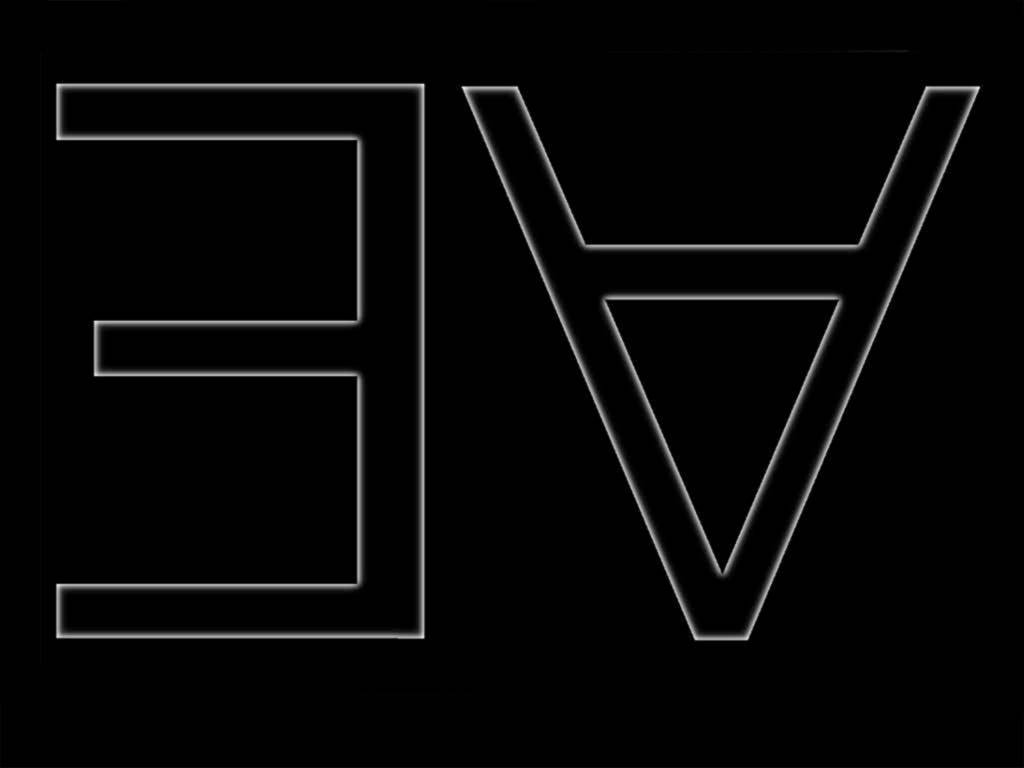
Everything is broken: ∀x Broken(x)
Something is broken: ∃x Broken(x)
9.1 odd numbers only
9.2 even numbers only
9.8–-9.10





